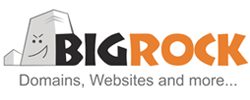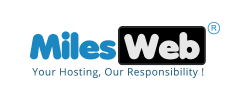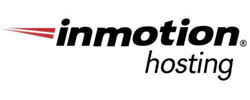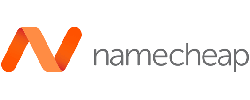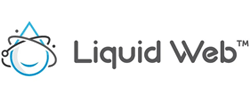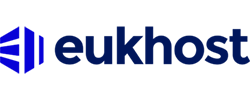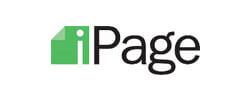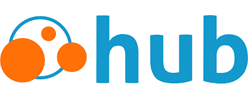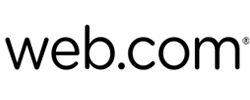30 Best Web Hosting Services Company
Last updated on January 19, 2025 by RGB Web Tech

Introduction of Cheap Web Hosting Service
Cheap web hosting service refers to a type of web hosting that is available at a low cost. This hosting service is suitable for individuals, small businesses, or anyone who needs a simple website without the need for advanced features or high-performance servers.
A cheap web hosting service usually offers a shared hosting plan, where multiple websites are hosted on a single server. This type of hosting service is typically less expensive than other hosting options like dedicated hosting or VPS hosting, as the cost of server maintenance and upkeep is shared among multiple users.
While cheap web hosting services may have some limitations, such as limited storage space or bandwidth, they can still provide users with the basic tools and features needed to create and manage a website. These features may include a website builder, email accounts, and access to cPanel or other management tools.
Overall, a cheap web hosting service can be a good option for those on a tight budget who need to get a website up and running quickly without the need for advanced features or customization. It is important to research different providers to find one that offers reliable service and good customer support, as well as a plan that meets your specific needs and requirements.
Table of Article Contents
- What is Web Hosting?
- Top 30 Cheap Web Hosting Service Providers
- Advantages of Cheap Web Hosting Service
- Disadvantages of Cheap Web Hosting Service
- Types of Cheap Web Hosting Service
- Paid V/S FREE Cheap Web Hosting Service
- How to choose Cheap Web Hosting Service?
- Features of Cheap Web Hosting Service
- FAQs
- Conclusion
- Video
What is Web Hosting?
Web hosting refers to the service of providing storage space and access to web servers to host a website on the internet. In simpler terms, web hosting allows individuals or organizations to make their website accessible via the World Wide Web.
When someone wants to access a website, they enter the website's domain name (such as www.example.com) into their web browser. The browser then sends a request to the web hosting server where the website is stored, and the server responds by sending the website's content back to the user's browser, which displays it on the screen.
Web hosting services can be offered by companies that specialize in web hosting, known as web hosts or hosting providers. These companies provide different types of web hosting plans, such as shared hosting, VPS hosting, dedicated hosting, and cloud hosting, each with different levels of performance, security, and scalability.
Web hosting also involves the use of various software and technologies to manage the hosting environment and provide website owners with tools and features to manage their websites, such as cPanel, FTP access, database management, and email hosting.
Overall, web hosting is an essential service that allows businesses and individuals to establish an online presence and make their website accessible to anyone with an internet connection.
Top 30 Cheap Web Hosting Service Providers
Here are the top 30 cheap web hosting service providers along with their sales, discount and pricing plans:
- Exclusive Sale - Upto 60% OFF
- Starting at
$9.99.00$3.49/month*
Inmotion Hosting
- Alexa Rank 5,622
- Exclusive Sale - Upto 75% OFF
- Starting at
$7.99$1.99/month*
iPage
Advantages of Cheap Web Hosting Service
Here are some advantages of using a cheap web hosting service:
1. Affordability: The most obvious advantage of using a cheap web hosting service is affordability. With low-cost plans, you can get started with your website without breaking the bank.
2. Easy to Use: Most cheap web hosting services provide easy-to-use control panels and website builders, making it easy for even beginners to set up their websites.
3. Scalability: Cheap web hosting plans often allow you to upgrade to higher plans as your website grows. This allows you to start with a basic plan and upgrade as needed, without having to switch to a new provider.
4. Technical Support: Despite being low-cost, most cheap web hosting services offer technical support around the clock to help you with any issues you may encounter.
5. Flexibility: Many cheap web hosting services offer a range of plans with different features, allowing you to choose the one that best fits your needs and budget.
6. Good for Small Websites: If you have a small website with low traffic, a cheap web hosting service may be all you need. You can save money on hosting fees and invest in other areas of your website or business.
7. Backup and Security: Even cheap web hosting services offer backup and security features, protecting your website from data loss and security breaches.
Overall, cheap web hosting services can be a great option for individuals and small businesses looking to launch their website on a budget. However, it's important to research and compare different providers to find the one that best meets your needs and budget.
Disadvantages of Cheap Web Hosting Service
While there are many advantages of using a cheap web hosting service, there are also some potential disadvantages to consider:
1. Limited Resources: Cheap web hosting services often have limited resources, such as storage, bandwidth, and processing power. This can affect the performance of your website and limit its scalability.
2. Reliability: With a low-cost hosting plan, you may experience more downtime or slower website loading times due to the sharing of resources among multiple users.
3. Customer Support: While many cheap web hosting services offer 24/7 customer support, the quality of support may be limited due to the lower price point. You may not receive as much help or expertise as you would with a more expensive hosting provider.
4. Limited Features: Cheap hosting plans may have fewer features and limitations, such as limited email accounts, no automatic backups, or no advanced security features.
5. Shared Hosting: Most cheap web hosting plans are shared hosting, which means your website shares the server with other websites. This can cause performance issues or security risks if one of the other websites on the server experiences a problem.
6. Renewal Costs: Some cheap web hosting providers offer promotional rates for the first year, but the renewal costs may be higher. This can catch some people off guard and cause unexpected expenses.
Overall, cheap web hosting services can be a good option for those on a tight budget, but it's important to consider these potential disadvantages and do your research before making a decision. Look for a hosting provider that balances affordability with reliability, features, and customer support.
Types of Cheap Web Hosting Service
There are several types of cheap web hosting services available, each with its own advantages and limitations. Here are some of the most common types:
1. Shared Hosting:Shared hosting is the most common type of hosting, where multiple websites share the same server and its resources, including storage space, bandwidth, and CPU. It is an affordable option for small businesses and individuals who are just starting with their website.
2. WordPress Hosting:WordPress hosting is a specialized type of web hosting designed specifically for websites built on the WordPress content management system (CMS). WordPress is the most popular CMS in the world, used by millions of websites to create and manage their content.
3. Virtual Private Server (VPS) Hosting:VPS hosting involves a server that is partitioned into multiple virtual servers, each with its own resources, operating system, and control panel. It is a step up from shared hosting, providing more control, flexibility, and security.
4. Dedicated Hosting: With dedicated hosting, a website gets its own server, which means all the resources are exclusively dedicated to that website. This option provides the highest level of control, flexibility, and security, but it can also be expensive.
5. Cloud Hosting:Cloud hosting involves a network of interconnected servers that work together to provide hosting resources. This type of hosting is highly scalable, flexible, and reliable.
6. Managed Hosting:Managed hosting involves a hosting provider managing and maintaining a website's server, including updates, security, backups, and more. This option is ideal for those who do not have the technical expertise to manage their own server.
7. Reseller Hosting:Reseller hosting allows individuals or businesses to purchase hosting resources from a hosting provider and resell them to their clients, usually at a higher price. It is a way to start a web hosting business without the need for expensive infrastructure.
8. Colocation Hosting:Colocation hosting, also known as colo hosting or colocation, is a type of web hosting where a company or individual rents space in a data center to store their own servers and equipment. Unlike traditional web hosting, where a hosting provider owns and manages the servers, in colocation hosting, the client owns and manages their own servers and equipment.
9. Self Service Hosting:Self-service hosting, also known as unmanaged hosting, is a type of web hosting where the client is responsible for all aspects of managing their website, including server configuration, software installation, security, and maintenance. The hosting provider only provides the physical server hardware and internet connectivity, but no management services or technical support.
10. Cluster Hosting:Cluster hosting, also known as cloud hosting or clustered web hosting, is a type of web hosting that uses a cluster of servers to host websites and applications. In a cluster hosting environment, multiple servers work together to provide greater performance, scalability, and reliability than traditional hosting options.
Paid V/S FREE Cheap Web Hosting Service
When it comes to web hosting, you often get what you pay for. While free hosting may seem like an attractive option for those on a tight budget, there are some key differences between paid and free cheap web hosting services that you should consider.
Paid Web Hosting Service:
Advantages:
- More reliable: Paid web hosting services typically offer more reliable and consistent performance than free hosting services.
- More resources: Paid hosting plans typically offer more resources, such as storage, bandwidth, and processing power, than free hosting plans.
- Better customer support: Paid hosting providers often offer better customer support, with faster response times and more experienced technicians.
- More features: Paid hosting plans typically offer more features and tools, such as automatic backups, advanced security features, and website builders.
Disadvantages:
- Cost: Paid hosting plans come with a cost, which may be a barrier for those on a tight budget.
- Contract length: Many paid hosting providers require a minimum contract length, which may not be suitable for those who are unsure about their website's future needs.
Free Web Hosting Service:
Advantages:
- No cost: The main advantage of free hosting is that it's free, making it a good option for those on a tight budget.
- Easy to use: Free hosting services often offer simple and easy-to-use website builders and control panels.
- No contract: Free hosting services typically don't require a contract, which provides more flexibility.
Disadvantages:
- Less reliable: Free hosting services often have limited resources and may not offer consistent performance or uptime.
- Limited features: Free hosting plans may have limited features and may not offer advanced tools such as automatic backups or advanced security features.
- Limited support: Free hosting providers may not offer as much support as paid providers, and the support may not be as experienced or responsive.
- Advertisements: Some free hosting services display advertisements on your website, which can be distracting or unprofessional.
Overall, if you're serious about your website and want reliable performance, more features, and better support, paid hosting is generally the better choice. However, if you're on a tight budget and don't need advanced features, free hosting can be a good option to get started.
How to choose Cheap Web Hosting Service?
Choosing the right cheap web hosting service can be a daunting task, especially if you're new to web hosting. Here are some key factors to consider when choosing a cheap web hosting service:
1. Reliability and Uptime: Choose a web hosting company that has a reputation for high uptime and reliability. You want a provider that guarantees at least 99.9% uptime, ensuring that your website is always available to visitors.
2. Server Speed and Performance: Choose a web hosting provider with fast servers and high performance. Slow-loading websites can negatively impact user experience and search engine rankings.
3. Scalability and Flexibility: Choose a web hosting provider that can scale and grow with your website. Your hosting plan should allow you to easily upgrade or downgrade your resources as your needs change.
4. Security: Choose a web hosting provider that takes security seriously, with measures such as SSL certificates, firewalls, malware scanning, and regular backups to protect your website and data.
5. Customer Support: Choose a web hosting provider that offers reliable and accessible customer support, with multiple channels such as phone, email, and live chat available 24/7.
6. Pricing and Value: Choose a web hosting provider that offers a good balance between pricing and value, with transparent pricing and no hidden fees. Compare pricing and features across multiple providers to find the best fit for your needs and budget.
7. User-Friendly Control Panel: Choose a web hosting provider that offers a user-friendly control panel, such as cPanel, which allows you to easily manage your website, email, and other hosting features.
By considering these factors, you can choose a best website hosting service that meets your need and provide a reliable platform for your website.
Features of Cheap Web Hosting Service
Cheap web hosting services may vary in terms of the specific features they offer, but here are some common features you can expect from a good cheap web hosting service:
1. Storage Space: Web hosting provides storage space for all website files, including images, videos, and web pages.
2. Bandwidth: Bandwidth refers to the amount of data that can be transferred between the website and its visitors. Web hosting providers offer different bandwidth limits, so choose a plan that meets your website's needs.
3. Domain Name: A domain name is the website address that visitors use to access your site. Many web hosting providers offer domain registration services.
4. Email Accounts: Web hosting often includes email accounts, which allow you to use your domain name for email addresses, such as [email protected].
5. Control Panel: A control panel allows you to manage your website, email accounts, and other hosting features.
6. Security Features: Web hosting providers offer various security features, such as SSL certificates, firewalls, and malware scanning, to protect your website and data from online threats.
7. Website Builder: Some web hosting providers offer website builders, which allow you to create a website without coding or design skills.
8. Backup and Recovery: Web hosting providers should offer regular backups and a recovery system in case of data loss or website issues.
9. Technical Support: Good web hosting providers offer 24/7 technical support, with multiple channels such as phone, email, and live chat.
10. Scalability: As your website grows, you may need more resources, so choose a web hosting provider that allows you to easily upgrade or downgrade your plan to meet your needs.
FAQs - Cheap Web Hosting Service
Here are some frequently asked questions about cheap web hosting service:
1. What is a cheap web hosting service?
Answer : Cheap web hosting service is a hosting service that offers web hosting at a low cost, usually starting at a few dollars per month. These hosting services are suitable for small websites and individuals who have a limited budget.
2. What are the advantages of a cheap web hosting service?
Answer : The advantages of cheap web hosting services are that they are affordable, easy to use, and can provide all the necessary features to host a website. They are also suitable for small businesses and individuals who have a limited budget.
3. What are the disadvantages of cheap web hosting service?
Answer : The disadvantages of cheap web hosting service are that they may not provide the best performance, uptime, or customer support. They may also have limitations on the resources and features provided.
4. What are the types of cheap web hosting services?
Answer : The types of cheap web hosting service include shared hosting, VPS hosting, cloud hosting, and reseller hosting. Each type has its own advantages and limitations.
5. What should I look for when choosing a cheap web hosting service?
Answer : When choosing a cheap web hosting service, you should consider factors such as price, uptime, performance, features, support, scalability, and reputation.
6. Can I upgrade my hosting plan later?
Answer : Yes, most hosting providers allow you to upgrade your hosting plan as your website grows and requires more resources.
7. Is a free web hosting service a good option?
Answer : Free web hosting service may be a good option for personal websites or experimental projects, but it may not provide the best performance, uptime, or security. It may also have limitations on the resources and features provided. Paid hosting services are generally recommended for businesses and serious websites.
8. What is bandwidth?
Answer : Bandwidth is the amount of data that can be transferred between your website and its visitors. Web hosting providers offer different bandwidth limits, so choose a plan that meets your website's needs.
9. What is a domain name?
Answer : A domain name is the website address that visitors use to access your site. Many web hosting providers offer domain registration services.
10. What is a control panel?
Answer : A control panel is a web-based interface that allows you to manage your website, email accounts, and other hosting features.
11. What is SSL?
Answer : SSL (Secure Sockets Layer) is a security protocol that encrypts data between the website and its visitors. It is important for securing online transactions and protecting sensitive data.
12. What is a website builder?
Answer : A website builder is a tool that allows you to create a website without coding or design skills. Some web hosting providers offer website builders as part of their hosting plans.
13. What is uptime?
Answer : Uptime refers to the amount of time that your website is online and accessible to visitors. Good web hosting providers guarantee at least 99.9% uptime.
14. What is shared hosting?
Answer : Shared hosting is a type of hosting where multiple websites share the same server and its resources. It is an affordable option for small businesses and individuals who are just starting with their website.
15. What is VPS hosting?
Answer : VPS hosting involves a server that is partitioned into multiple virtual servers, each with its own resources, operating system, and control panel. It is a step up from shared hosting, providing more control, flexibility, and security.
16. What is dedicated hosting?
Answer : Dedicated hosting involves a website getting its own server, which means all the resources are exclusively dedicated to that website. This option provides the highest level of control, flexibility, and security, but it can also be expensive.
Conclusion - Cheap Web Hosting Service
In conclusion, cheap web hosting services are an excellent option for individuals and small businesses that have a limited budget. While they may have some limitations compared to more expensive hosting options, they can provide all the necessary features to host a website. When choosing a cheap web hosting service, it's important to consider factors such as price, uptime, performance, features, support, scalability, and reputation. By doing your research and comparing multiple hosting providers, you can find a reliable and affordable hosting service that meets your needs.
You now know which the best Web Hosting Services company is, and you are ready to try one out. Good luck in the world of hosting!
If this article is helpful for you, please share it on your social media handles Because sharing is caring!
If you found this article helpful, we encourage you to share it on your social media platforms—because sharing is caring! For more information about article submissions on our website, feel free to reach out to us via email.
Send an emailWritten by RGB Web Tech
Latest Technology Trends
Latest technology trends shaping the future, including AI advancements, blockchain innovation, 5G connectivity, IoT integration, and sustainable tech solutions. Explore breakthroughs in quantum computing, cybersecurity, augmented reality, and edge computing. Stay ahead with insights into transformative technologies driving innovation across industries and revolutionizing how we live, work, and connect.
10 Different Types of Web Hosting
Last updated on January 19, 2025 by RGB Web Tech
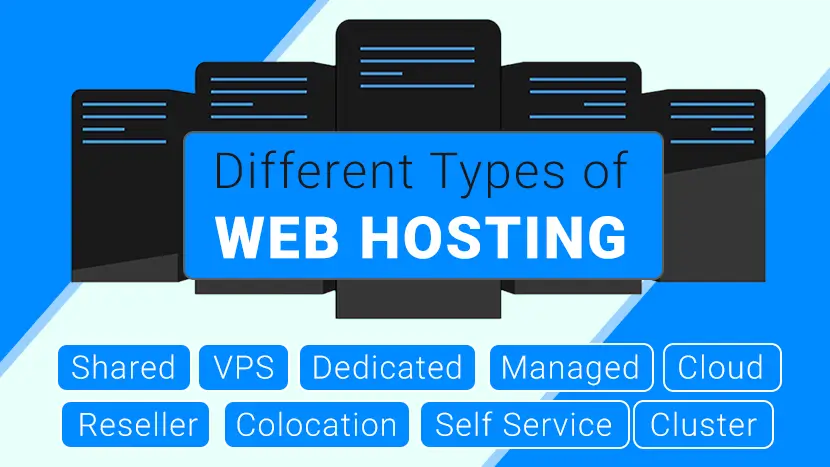
There are different types of web hosting services. So, it can be very difficult to figure out which type of web hosting you need or choose.
In the article, I hope to teach you everything you need to know about web hosting. There are many kinds of web hosting. I can easily see how people get confused so quickly. I will cover the following:
- Shared Hosting — Shared hosting is the most cost-effective plan for entry-level websites.
- VPS Hosting — VPS hosting is for websites that have outgrown shared hosting.
- WordPress Hosting — WordPress hosting optimized for WordPress sites.
- Dedicated Hosting — Dedicated hosting is Enterprise-level servers for large websites.
- Cloud Hosting — Cloud hosting is best for websites that are growing rapidly.
- Reseller Hosting — Reseller hosting is for agencies, web developers, and web designers.
- Managed Hosting — Managed hosting is an IT hosting model in which the client leases servers or cloud computing resources.
- Colocation Hosting — Colocation hosting is where you rent space for your IT hardware at a 3rd party provider’s data center facility.
- Self Service Hosting — Self hosting is a form of running your own website or application by setting up a server and network yourself.
- Cluster Hosting — A Cluster hosting is a host that is configured to take over the role of another host server within a cluster.
Shared Hosting
Shared hosting is a type of web hosting where a single physical server hosts multiple sites. Many users utilize the resources on a single server, which keeps the costs low. Users each get a section of a server in which they can host their website files. Shared servers can host hundreds of users. Each customer using the shared hosting platform’s server has access to features like databases, monthly traffic, disk space, email accounts, FTP accounts and other add-ons offered by the host. System resources are shared on-demand by customers on the server, and each gets a percentage of everything from RAM and CPU, and other elements such as the single MySQL server, Apache server, and mail server.
VPS Hosting
VPS is short for a Virtual Private Server. VPS hosting is one of the most popular hosting services you can choose for your website. It uses virtualization technology to provide you with dedicated (private) resources on a server with multiple users.
It’s a more secure and stable solution than shared hosting where you don’t get a dedicated server space. However, it’s smaller-scale and cheaper than renting an entire server.
VPS hosting is usually chosen by website owners who have medium-level traffic that exceeds the limits of shared hosting plans but still don’t need the resources of a dedicated server.
WordPress Hosting
WordPress hosting is just hosting that has been optimized to better meet WordPress’ performance and security needs. It also typically includes one-click WordPress installs to make it easy to get started with WordPress. And some WordPress hosts will even automatically update your WordPress software as needed.
Dedicated Hosting
Dedicated hosting is a term used to describe web hosting packages that provide a dedicated server with dedicated resources to a single client. Dedicated hosting plans are ideal for WordPress websites with a very large number of visitors. Many WordPress hosting service providers offer Dedicated Hosting plans along with shared and VPS hosting plans.
Cloud Hosting
Cloud hosting is a type of web hosting which uses multiple different servers to balance the load and maximize uptime. Instead of using a single server, your website can tap into a “cluster” that uses resources from a centralized pool. This means that even if one server fails, another kicks in to keep everything running.
Visualize the cloud as a web of different computers which are all interconnected. As more machines are hooked up to the network, more resources are added to the overall cloud.
With cloud hosting, you get a part of the so-called cloud cluster. As opposed to traditional web hosting, where you get a certain amount of space from a single server.
The main benefits of cloud hosting include a major focus on uptime, isolated resources, easy scaling, and a dedicated IP address.
Reseller Hosting
Reseller web hosting is an option that involves one company (a hosting provider) renting hard drive space and bandwidth to another company (small-midsize business), who then rents the space to third parties (entrepreneurs-small business). Simply put, reseller hosting is the ability to provide hosting to your own clients as if you yourself were the web hosting company. This is typical for aspiring entrepreneurs who want to start their own web hosting firm or for current web developers and designers who desire to add additional services to their brand.
Managed Hosting
Managed dedicated hosting is an IT service model where a customer leases dedicated hardware from a managed hosting services provider. This solution includes servers, storage, and networking hardware. Because you aren’t sharing these resources with anyone else, it’s referred to as a single-tenant solution.
When you choose managed dedicated hosting, you get to choose your operating system while your service provider handles the administration, management, and support of your solution. And because you’re not sharing any of these resources with another tenant, you have access to the full performance capabilities of the hardware you’re leasing.
Colocation Hosting
Colocation hosting is a type of service a data center offers, in which it leases space and provides housing for servers. The clients own the servers and claim full authority over the hardware and software. However, the storage facility is responsible for maintaining a secure server environment.
Colocation services are not the same as cloud services. Colocation clients own hardware and lease space, with cloud services they do not have their hardware but lease it from the provider.
Colocation hosting should not be confused with managed (dedicated) services, as the second implies the data center also assumes management and maintenance control over the servers. With colocation hosting, the clients are the one who is responsible for supplying, maintaining, and managing their servers.
Self Service Hosting
Self-service web hosting is done completely on your own. This is the most advanced web hosting. You need to have a place to rent that stores your server. Then you’re responsible for the cooling, power, bandwidth, hardware, system administrator, backups, etc.
Cluster Hosting
Cluster hosting is sometimes confused with Cloud or Grid hosting. It is simply a group of servers that operate together and act as one “mega” server. The big difference between cluster hosting and cloud hosting is cluster hosting is over a smaller area. For instance, there could be a cluster of servers along the eastern coast of the United States.
Cluster hosts are typically billed on an hourly or monthly rate.
List of Popular Web Hosting Service Providers:
Read More : You can explore here 30+ Best Web Hosting Providers
Video - Best Web Hosting For Small Business
Affordable Website Hosting for your domainIf you found this article helpful, we encourage you to share it on your social media platforms—because sharing is caring! For more information about article submissions on our website, feel free to reach out to us via email.
Send an emailWritten by RGB Web Tech
Latest Technology Trends
Latest technology trends shaping the future, including AI advancements, blockchain innovation, 5G connectivity, IoT integration, and sustainable tech solutions. Explore breakthroughs in quantum computing, cybersecurity, augmented reality, and edge computing. Stay ahead with insights into transformative technologies driving innovation across industries and revolutionizing how we live, work, and connect.
19 Best Front End Framework for Web Development
Last updated on January 19, 2025 by RGB Web Tech
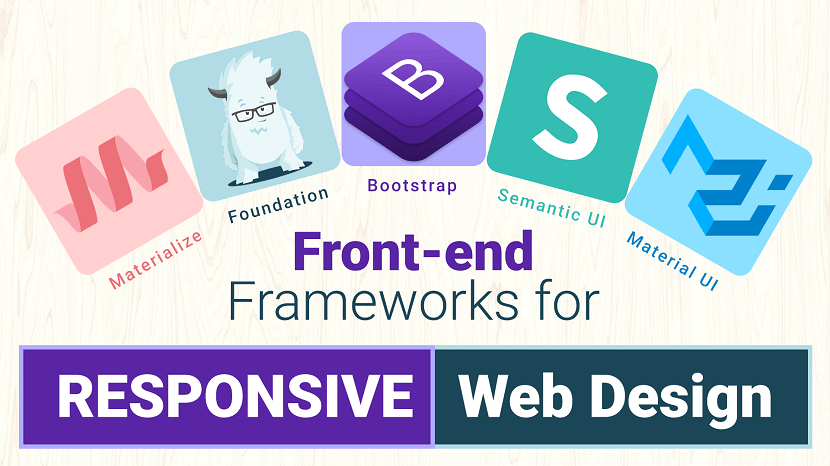
Front-end frameworks for responsive web design have become essentially important for the websites. There has already been too much buzz about the ongoing practice of using a responsive framework while initiating web designing. Because of the effectiveness of these frameworks, they are becoming more popular among the developers. Responsive frameworks are far better than the non-responsive ones. Additionally, they are effective and help in the development of user-centric applications.
Responsive web design front-end frameworks include CSS and HTML5 tags and thus they are the best choice to create exceptional website designs. There are several best front-end frameworks available to use to create exceptional websites. Here is a brief on some of the most renowned frameworks used popularly by developers.
1. Twitter Bootstrap
This list would be woefully incomplete without the inclusion of the wildly popular frontend framework, Bootstrap. Created by Twitter developers and initially released in 2011, it's the most used open source framework in the world.
Like any effective frontend framework, Bootstrap includes CSS, HTML and JavaScript, or JS, components. It adheres to responsive web design standards, allowing you to develop responsive sites of all complexities and sizes.
Because it is updated continually, Bootstrap typically includes the latest and best features. For example, it added themes that met Google's material design guidelines shortly after they were published, and it was also upgraded to use Sass as a CSS preprocessor.
Pros:
- Massive community support.
- Widest variety of themes.
- Best browser capability.
- Has both a fluid and fixed pattern grid system.
- More development tools available.
- Many popular websites are built on this framework.
- Superiority in mobile support.
- Most of the celebrated custom web development companies prefer this tool.
Cons:
- Not as lightweight when compared to others. Out-of-the-box file size of 276 KB due to an excessive number of rarely used styles.
- Difficult to use jQuery plugins.
- Websites are easily recognizable.
- The excessive number of HTML classes and DOM elements can be messy and confusing.
Ideal for: Beginners and those who prefer a robust front-end framework.
2. Foundation
Created by web design company Zurb, Foundation is a highly advanced, enterprise-grade frontend framework that is ideal for developing nimble, responsive websites. Used on sites like Facebook, eBay, and Mozilla, it is also fairly complex and may not be suitable for newbies.
This features-rich framework supports GPU acceleration for smooth, lightning fast animations and Fastclick.js for fast rendering on mobile devices. It runs on the Sass preprocessor and includes the Foundation-developed data interchange attribute, which lets you load lightweight HTML sections for mobile and "heavier" HTML sections for larger screens. For a comparison between Foundation and Bootstrap, read our complete article, Bootstrap vs Foundation.
Pros:
- Offers finest of the customization abilities.
- Possess a robust grid system.
- Provides rapid development of code.
- Easy to use templates available for download.
- Offers services for sites as well as emails.
- Design-it-yourself approach.
- Lightweight.
Cons:
- More complex when trying to customize.
- Not a great framework for beginners.
- Less popular in comparison to Bootstrap.
Ideal for:Developers who have decent amounts of experience and who are primarily concerned with developing fast, attractive, responsive websites.
3. Semantic UI
A relative newcomer on the scene, Semantic-UI stands out in several ways and is poised to become one of the most popular front-end frameworks out there.
This framework's main claim to fame is its simplicity. Because it uses natural language, the code is self-explanatory. Even those with very little coding experience will feel fairly at home working with this framework.
Another notable feature of Semantic-UI is that it is integrated with a dizzying array of third-party libraries. So much so, that you probably won't need to use any others. Therefore, the development process is a bit easier and more streamlined.
Pros:
- Semantic class names make for a low barrier of entry, so even beginners can hit the ground running.
- Small file sizes and minimal load times because you can load only the components that you need; each has its own JS file and style sheet.
- Versatile elements make for easy customization.
Cons:
- Very large packages when compared to Foundation and Bootstrap.
- Those with more complex design and development needs may find this framework lacking.
Ideal for: Beginners and those who want a lightweight, nimble framework.
4. Material UI
If you're looking for a front-end framework that makes it easy to adhere to Google's material design guidelines, you can't go wrong with Material UI. It is by far the most elaborate framework to implement these guidelines thus far, but there is one caveat: It isn't meant to be a starting point for a brand-new web design project.
Loaded with ready-to-use CSS and material design-compliant components, Material UI uses a CSS-in-JS solution. This unlocks many great features including theme nesting, dynamic styles, self-support, etc.
Pros:
- The easiest way to meet Google's material design guidelines when using a framework.
- Highly customizable.
Cons:
- Not intended to serve as a starting point for from-scratch web design projects.
- Need a decent understanding of React to use effectively.
Ideal for: Developers who understand and have experience with React and who need an easy way to adhere to material design guidelines.
5. Materialize
The Materialize responsive front-end development framework also implements Google's material design specifications and is loaded with ready-to-use buttons, icons, cards, forms, and other components. It is offered in both a standard version and in one that runs on Sass.
Materialize includes a convenient IZ column grid feature that can be used for website layouts. It is also loaded with CSS that's ready to use out of the box for material design shadows, typography, colors, and other features.
Additional features include ripple-effect animation, drag-out mobile menus, Sass mixins, and more.
Pros:
- Huge selection of components.
- Responsive support ensures that websites are supported across all devices.
Cons:
- The large file size makes this a bulky framework to work with.
- No support for Flexbox model.
Ideal for: Less experienced developers who need guidance regarding Google's material design specifications.
6. UIKit
UIKit is a highly modular front-end framework that stands out among most front-end development frameworks for many reasons. Chief among them is the fact that it includes both Less and Sass CSS preprocessors.
Loaded with an array of nimble, responsive components with consistent naming conventions, UIKit has become one of the most popular front-end frameworks out there.
It's more than 30 extendable, modular components can be combined for even more versatility. It includes navigation components like side navigation bars; elements like HTML forms and tables; JavaScript components like off-canvas bars and modal dialogs; common elements like buttons, badges, and overlays; and layout components, including a fluid, completely responsive grid system.
Pros:
- Highly customizable.
- Exceptionally modular, so you can add components to the style sheet without negatively impacting overall style.
- Create advanced user interfaces using components like nestable.
Cons:
- Very few resources out there due to the relative newness.
Ideal for: Fairly experienced developers due to the current lack of available resources. Otherwise, it is great for simple and complex projects alike.
7. Pure
Created by the Yahoo development team, Pure comes with a lightweight array of CSS modules that can be used in just about any project. Using Pure, you can easily create responsive buttons, menus, grids, tables, and other features. Because it is purely CSS based, however, it does not support JavaScript or jQuery plugins.
When minified and compressed with Gzip, Pure clocks in at just 4.5 KB, making it one of the lightest and nimblest front-end development frameworks out there. As a result, it is terrific for mobile website development, and many developers rely on it for precisely that.
Pros:
- Extremely lightweight, ensuring fast loading times even on mobile devices.
- A flexible array of CSS modules can be used on just about any web design and development project.
Cons:
- CSS only - does not include jQuery or JS plugins.
Ideal for: Developers who are focusing on creating responsive, fast mobile websites.
8. CreateJS
CreateJS is a suite of open-source JavaScript libraries and tools for creating rich, interactive HTML5 content. It consists of 5 modular JavaScript libraries. It will help you with implementing animation effects, supporting HTML5 audio on your website, and much more.
Adobe, Microsoft, and AOL sponsor this project.
Pros:
- It is helpful for rich, interactive HTML5 content.
Cons:
- You have basic knowledge of JavaScrip.
Ideal for: It is ideal for creating animation effects and HTML5 Audios on your website.
9. HTML5 Boilerplate
In 2010, HTML5 Boilerplate became one of the first, and subsequently, most popular open-source front-end web development tools for getting HTML5 websites and web apps up and running in no time. It’s a compilation web development solution that enables our websites to support modern web browsers.
Included in HTML5 Boilerplate is a mobile-friendly HTML template, placeholder icons, CSS resets for normalizing/standardizing your stylesheet property values, standard media queries for popular viewing screens, an HTML5shiv for non-modern web browsers, and more.
Pros:
- It is an open-source front-end web development tool.
- Mobile-friendly HTML template.
Cons:
- It required basic knowledge of HTML/HTML5 and CSS/CSS3.
Ideal for: It is ideal for designing responsive websites.
10. Milligram
Milligram is another extremely lightweight framework similar to Skeleton. When Gzipped, it comes out to just 2 KB in size and is used to provide developers with a simplistic and convenient starting point.
Milligram’s grid system is different than most because of its use of the CSS Flexible Box Layout Module standard. It also includes a few key components for getting you started including typography, buttons, forms, lists, tables, blockquotes, etc.
Pros:
- Very lightweight, only 2 KB when Gzipped.
- Uses CSS Flexbox as the grid system.
Cons:
- Few resources available due to the relative newness.
- Minimal styling components available compared to other larger frameworks.
Ideal for: Developers who are creating a small project that doesn't require any styling components and want to use a CSS Flexbox grid system.
11. Susy
Some would argue that Susy isn't a Front-end Framework in the truest sense of the term because it is focused on solving complex layout needs. Many classify Susy as a grid maker more than anything, but it can be an indispensable tool for those who have specialized layout needs.
Susy arms you with mixins that can be used to create grids. The framework does all of the calculations for you, saving a lot of time and effort.
With Susy, you can create any kind of grid layout imaginable. If you have been looking for a way to do this, Susy may be the answer.
Pros:
- Superior flexibility, so you can create any kind of grid layout that you need.
- Automatically performs all calculations.
Cons:
- Does not cover all aspects of website design, so you still need another framework solution.
- No pre-built grids.
Ideal for: Anyone who has unique or specialized layout requirements.
12. Zebra
Zebra is a rich UI open-source framework that leverages HTML5 canvas as the backbone of its rendering abilities.
Zebra says that using it “isn’t rocket science” and that you can get started in 5 minutes.
13. Siimple
Flexible, aesthetically built and a concise front-end CSS framework to accomplish clean web pages. Siimple is beautiful and mostly used for building web pages that are flat and clean. Working on these simple things sometimes proves to be exceptionally well for the development of user-centric websites. This framework is certainly minimal, having a few lines of codes that can also be zipped down to 6KB in total size. This framework is suitable for newbies who are just starting with their website designing and require a framework to experiment freely. Siimple helps such developers to create minimal and clean web designs.
14. Less Framework
Less Framework is a modern Front-end framework for building responsive designs. Similar to Skeleton (discussed above), Less Framework focuses on being just a plain and simple layout grid framework.
It has 4 pre-built layouts: Default, Tablet, Mobile, and Wide Mobile.
15. Montage HTML5 Framework
Being an HTML5 framework, Montage is great to kick start modern web page development. Montage has got the elements that help in the creation of scalable and feature-rich websites. These exceptional elements also help to maintain the HTML5 applications for a range of devices whether a desktop or a smartphone. Montage is amazing in its ways. It has got reusable components along with HTML templates in addition to the declarative component model, declarative data binding, and much more than it.
16. SproutCore
SproutCore is a front-end framework for building HTML5 apps rapidly.
It follows the MVC architecture pattern and promises its users the ability to craft native-like user experiences for the Web.
17. Cascade
Cascade is a great relief to the developers as it offers both semantic and non-semantic grid layouts along with base templates, navigational elements, table designs. Cascade has got a universal approach and thus it is easy for designers to include several elements in their design. With Cascade in use, designers, as well as developers, have got the option of creating high-performance web pages for a variety of browsers right from the older ones to the new browsers. Cascade can be used by developers to choose and work on the components most important for a particular project.
18. Skeleton
Skeleton is a lightweight responsive boilerplate that contains only 400 lines of code. This framework is meant to include only the minimum requirements to get you started on the development of a web project. It is not meant to be all-inclusive such as other frameworks as mentioned above.
Skeleton is also responsive, based on a 12-column grid system, and includes the bare essentials such as buttons, lists, tables, forms, etc.
Pros:
- Extremely lightweight.
- Greater simplicity and useful for smaller projects.
Cons:
- It does not include a wide selection of utility/styling components such as larger frameworks do.
Ideal for:Someone who is creating a smaller project that doesn't require all of the style components of a larger framework.
19. HTML KickStart
One of the newest kids on the block, HTML5 KickStart is a lean and mean package of HTML, CSS, and JavaScript files that promises to save UI developers hours of work.
At about 300KB, HTML KickStart packs quite a punch: UI components like stylish buttons and navigation bars, scalable icons (using Font Awesome), a responsive grid layout, a touch-enabled slideshow component and so on.
FAQs - Front-end frameworks
1. Which is the Best CSS Framework?
Answer : That depends on the website you’re looking to build. The most popular CSS framework, however, is Bootstrap.
2. What is a CSS Framework?
Answer : A CSS framework is a library of CSS stylesheets with pre-done code to help you design websites faster.
3. Why Do CSS Frameworks Use Preprocessors?
Answer : CSS frameworks use preprocessors to automate tasks.
4. Which Files Do You Need for CSS Frameworks?
Answer : You need CSS files from respective frameworks and sometimes JavaScript and HTML files.
Conclusion
There are plenty of Front-end frameworks, but we have chosen the best Front-end frameworks that matter in 2023. Out of these 19, we cannot say which one is best, as each has its own set of features. By choosing the right Front-end frameworks for your needs, all the complicated and time-consuming styling is taken care of, and you can focus on writing business logic.
If you’re just starting out with CSS and UI, go for Pure, or Skeleton. However, to build more complex elements, you’ll need a more inclusive framework like Bootstrap, Foundation, Material UI etc. read our complete article, Bootstrap vs Foundation.
If you found this article helpful, we encourage you to share it on your social media platforms—because sharing is caring! For more information about article submissions on our website, feel free to reach out to us via email.
Send an emailWritten by RGB Web Tech
Latest Technology Trends
Latest technology trends shaping the future, including AI advancements, blockchain innovation, 5G connectivity, IoT integration, and sustainable tech solutions. Explore breakthroughs in quantum computing, cybersecurity, augmented reality, and edge computing. Stay ahead with insights into transformative technologies driving innovation across industries and revolutionizing how we live, work, and connect.
Bluehost Web Hosting Plans Review
Last updated on January 19, 2025 by RGB Web Tech
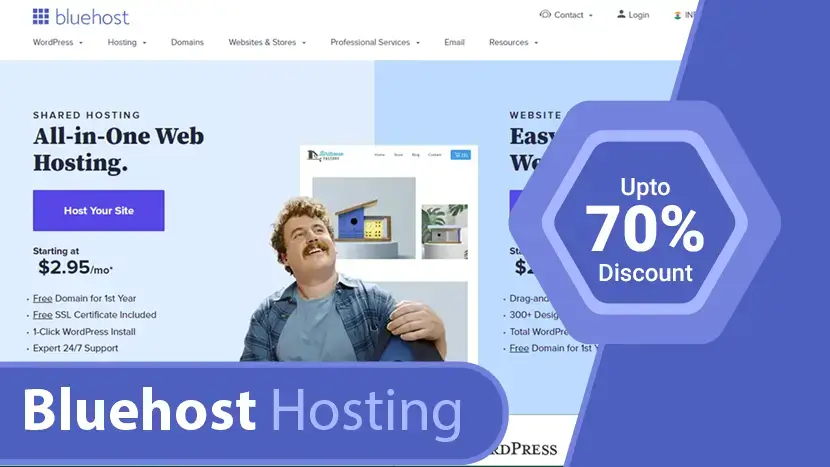
Bluehost started in 1996 and steadily grew to become one of the largest web hosting companies in the world. It now powers more than 2 million websites from all over the world.
Bluehost has a long-standing relationship with the WordPress community. They have been an official WordPress.org recommended web host since 2006.
They pride themselves in their 24/7 customer support, great hosting infrastructure, and support for the free open source software like WordPress.
On top of that, they are offering RGB Web Tech users an exclusive 63% off discount, a Free Domain, Free SSL, and a free Site Builder with templates.
Top Features
- Unlimited Websites
- Unmetered SSD Storage
- Unmetered Bandwidth
- 100+ Free WordPress Themes
- Free Domain for 1 Year
- Free Staging Environment
WordPress Website Builder
- Quick-Start AI Powered Templates
- Drag-n-Drop Builder
- Mobile-Responsive Themes
- Automatic Site Optimization
- 100+ Free Stock Image Library
Performance, Security, & Marketing
- SSL Certificate Protection
- Automatic Daily Malware Scan
- Speed Boosting CDN
- Website Stats Dashboard
- Email Marketing Tool
- WordPress Website Migration
- Free Bluehost SEO Tools
- Microsoft Office Email - Free 30 Days
- Domain Privacy
- Daily Website Backup
Bluehost Review Summary
- Performance grade - A+
- Average load time - 1.48 ms
- Average response time - 1.26 ms
- Free domain - Yes
- Free SSL - Yes
- 1-click WordPress - Yes
- Support - Phone / Live Chat / Knowledge base
Bottom line: In our Bluehost review, we found them to be reliable, fast, and affordable with friendly 24/7 customer support.
That’s why we’ve chosen to recommend Bluehost as one of the best WordPress hosting companies.
Now let’s dive into our detailed Bluehost hosting review so that you can decide for yourself.
In this comprehensive Bluehost review, we’ll put their promises to test with a rigorous and through analysis using industry standard benchmarking tools.
Following are the areas we’ll look into:
1. Speed: How fast will your website load with Bluehost? We will test their speed and server response time to assess that.
2. Performance: How does Bluehost perform under traffic spikes? We’ll test that by performing the stress test and see how well it performs under traffic.
3. Reliability: Will your website be available 24/7/365 without any downtime?
4. Customer Support: Can you count on Bluehost’s customer support when you immediately need help with your website?
5. Features: Do they offer all the features that you’ll need to build your website?
6. Pricing: Do they have the best pricing in the industry? Are there any Bluehost deals that can save you money?
This is our complete Bluehost review and we’ll be doing an in-depth analysis of Bluehost pros and cons. If you don’t want to read the full review, here is the quick scorecard of Bluehost with our verdict right below it.
Pros and Cons of Bluehost
All best web hosting services have their pros and cons. Some you can live with, and some you cannot ignore.
Here are the pros and cons of Bluehost that we learned.
Pros
First, let’s take a look at the advantages that make Bluehost the top choice.
1. Pricing: Their hosting plans are well within the reach of most users, particularly those who are just starting out.
2. Reliability: They power a large number of websites with minimum downtime.
3. No hidden charges: There are no hidden fees when signing up for your account.
4. Free domain: You get a free domain name for the first year when you sign up.
5. Free CDN + SSL: For each website, you get a free SSL certificate and free Cloudflare CDN to block malware and improve security.
6. Money Back Guarantee: They offer a 30 day money back guarantee on all plans.
Cons
As we mentioned earlier, there are always downsides with every hosting company. The following are some disadvantages of choosing Bluehost as your host.
1. Higher Domain Renewal Price: Their free domain renewal price is higher than average.
2. Upselling Addons: They have an aggressive upsell process during signup. But you can easily uncheck SiteLock and all other addons if you don’t need them.
Bluehost Hosting Plans and Features
Bluehost offers a variety of hosting plans for all budgets and sizes. Let’s take a look at Bluehost hosting plans and their features.
1. Shared Hosting:Shared hosting is the perfect way to start a new website with low traffic volume. In a shared hosting environment, your website shares server resources with other websites.
2. Cloud Hosting: A more reliable upgrade to the shared hosting plan. It allows you to utilize multiple cloud servers, allowing your website to automatically switch to a different server in case of a hardware failure or high traffic.
3. WordPress Hosting: Their WordPress plans are designed specifically for WordPress powered websites. It is optimized to run WordPress and can even protect your WordPress site against common threats.
4. VPS (Virtual Private Server) Hosting: An upgrade to shared WordPress hosting, VPS hosting allows you to virtual dedicated resources in a shared environment.
5. Dedicated Hosting Server: A dedicated hosting server for your website, means you will have all the resources of the dedicated server to yourself. The downside is that you will have to manage the server on your own.
All Bluehost hosting plans allow you to install WordPress with 1-click.
All plans come with an easy-to-use hosting control panel where you can manage your hosting, create databases, etc.
Bluehost has a custom control panel that improves ease of use for beginners. It also uses a customized version of the cPanel hosting dashboard for more advanced options.
Breakdown of Bluehost’s Shared Hosting Plans
Bluehost offers a shared hosting package suitable for starter websites. Their shared plan is available at four different levels.
Let’s take a look at Bluehost pricing and what’s included in each plan.
1. Basic: The basic plan only allows you to host one website. It hosts one domain and 25 subdomains, 50GB SSD storage, 5 email accounts of 100 MB disk space for each account. For the first term you’ll pay $2.75 per month. When you renew the account, you’ll have to pay $8.99 per month.
2. Plus: The Plus plan includes unlimited websites with unlimited storage space and unmetered bandwidth. You’ll also get unlimited email accounts. The price for the first term starts from $4.95 per month. When you renew the account, you’ll have to pay $11.99 per month.
3. Choice Plus: The Choice Plus plan includes all features of the plus plan. You will also get free domain privacy, and automated daily backups powered by CodeGuard as extras worth over $80/year. The price for the first term is $5.45 per month. When renewing, you’ll have to pay $16.99 per month.
4. Pro: The Pro plan starts from $13.95 per month for the first term after that you’ll pay $23.99 per month. It includes all features of above plans + dedicated IP address.
If you are just starting your website, then you can select any of these plans. You can easily upgrade your hosting plan as your website grows.
Bluehost Customer Support and Service
We all need help every now and then. It is really important that you choose a web hosting company that offers help and support when you need it.
Bluehost maintains a huge library of articles, step by step guides, and video tutorials as part of their extensive knowledge base. This is a huge help for beginners and most common issues can be quickly resolved by a simple search.
However, sometimes you may need to talk to an individual to get more help.
Bluehost offers a 24/7 support system where you can talk to their support team representatives using live chat or phone support. This is really helpful when you need quick help from technical support staff and you know they are just one-click away.
One thing that is missing is the ticket based support system. Bluehost recently decided to eliminate ticket-based support to focus on a personal approach of live chat support and phone-based support.
However, some users may still miss the ticket-based support system which is particularly good if your issue cannot be resolved in one live chat or phone session.
FAQs - Bluehost Web Hosting
In this detailed Bluehost review we have tried to cover all the aspects of their hosting services. The following are some of the most frequently asked questions about Bluehost that we hear from our users.
1. Can I make an online store using WooCommerce on Bluehost?
Answer : Yes, you can. In fact, Bluehost is one of the best WooCommerce hosting service providers. Their starter plan is perfect to start an online store.However, keep in mind that you’ll need to upgrade as your store starts getting more traffic. Hopefully, by that time you’ll be making enough money to justify the upgrade costs.
2. Is Bluehost good for beginners?
Answer : Yes. Bluehost is the most beginner-friendly WordPress hosting company on the market. They automatically install WordPress for you when you sign up. They also have an easy to use control panel which allows you to manage your hosting account by yourself.There is plenty of help available with detailed guides, video tutorials, and articles. You also have 24/7 access to their expert support via live chat and phone.
3. Can Bluehost handle high traffic?
Answer : Their shared hosting plans are suitable for starter websites and small businesses. In our stress test, their shared hosting plan was able to handle 100 virtual users without any slowdown.These plans can handle reasonable and sudden traffic spikes. However, they are still quite limited in server resources. If you are expecting high traffic then you’ll need to upgrade your hosting plan.
4. Why use Bluehost for WordPress?
Answer : Bluehost is one of the largest hosting companies in the world and an officially recommended WordPress hosting provider. They have been supporting the WordPress community for a very long time and know WordPress very well.Their platform is highly optimized for WordPress websites and engineered to run WordPress at peak performance. They also have WordPress engineers in their team so you know your website is in safe hands.
5. Do I need a credit card to sign up with Bluehost?
Answer : Bluehost accepts credit cards but you can choose to show more payment options during checkout and select PayPal as your payment method if you wish.
6. Is Bluehost better than GoDaddy?
Answer : Bluehost is better than GoDaddy because we believe Bluehost support is better. My Sites dashboard and overall onboarding experience is a lot more beginner friendly. Not to mention, Bluehost offers better pricing for small businesses.
7. How does Bluehost compare with SiteGround and HostGator?
Answer : When comparing Bluehost with SiteGround and HostGator, there are several pros and cons you should be aware of.Bluehost offers more value for the price when compared to SiteGround. Their plans start at $2.75 per month and include a free domain, whereas SiteGround plans start at $4.99 and do not include any free domain.On the other hand, the SiteGround platform comes with better speed and security features. For more details, see our comparison of Bluehost vs SiteGround vs WP Engine.In terms of Bluehost vs HostGator, they’re pretty similar when it comes to hosting CPU resources, functionality, site migration tools, pricing, and more. Bluehost is also more comparable with shared hosting providers like Inmotion hosting or Dreamhost. We find Bluehost user experience to be slightly better as they’ve invested heavily in their WordPress website builder platform.
8. Where are Bluehost servers located?
Answer : Bluehost operates its own in-house data center located in Utah, US. It is a massive 50,000 square feet facility that serves as their primary data center.
9. What Bluehost plan should I get?
Answer : If you are just starting out a brand new website, blog, or online store, then we recommend starting with their basic plan. It is good enough for a starter website and you can always upgrade later.Ready to start your website with Bluehost? Click here to select your Bluehost plan.
10. What are the types of web hosting?
Answer : This answer will be different for everyone. It depends on the type of website you have, the resources you need, your budget, and traffic.We gave our top recommendation for each category in this guide, so that’s the best place for you to start your search.Once you know what you need, you can narrow your options. To figure out what category you fall in, here’s a quick recap of the different hosting types.
Conclusion: Is Bluehost the Right Choice for You?
After reading this review, you might be wondering if Bluehost is the right choice for your website?
Bluehost is often ranked #1 web hosting provider by many websites. They offer a wide range of hosting options with tons of features that help you easily build your website.
All their hosting plans include expert 24/7 customer support from knowledgeable staff.
Most importantly, they offer affordable starter plans that fit any budget requirement.
If you are just starting out, then you cannot go wrong signing up for a Bluehost shared hosting plan. It’s easy on your pocket and comes with all the right tools. As your site grows you can easily upgrade your hosting plan accordingly.
Ready to start your website with Bluehost? Click here to select your Bluehost plan.
Alternatives - Web Hosting Providers
If you want to explore more web hosting plans, here is some web hosting services provider companies as below:
Read More : You can explore here 30+ Best Web Hosting and Domain name Providers 2023
Video - Best Web Hosting For Small Business
Affordable Website Hosting for your domainIf you found this article helpful, we encourage you to share it on your social media platforms—because sharing is caring! For more information about article submissions on our website, feel free to reach out to us via email.
Send an emailWritten by RGB Web Tech
Latest Technology Trends
Latest technology trends shaping the future, including AI advancements, blockchain innovation, 5G connectivity, IoT integration, and sustainable tech solutions. Explore breakthroughs in quantum computing, cybersecurity, augmented reality, and edge computing. Stay ahead with insights into transformative technologies driving innovation across industries and revolutionizing how we live, work, and connect.
Hostinger Web Hosting Review
Last updated on January 19, 2025 by RGB Web Tech
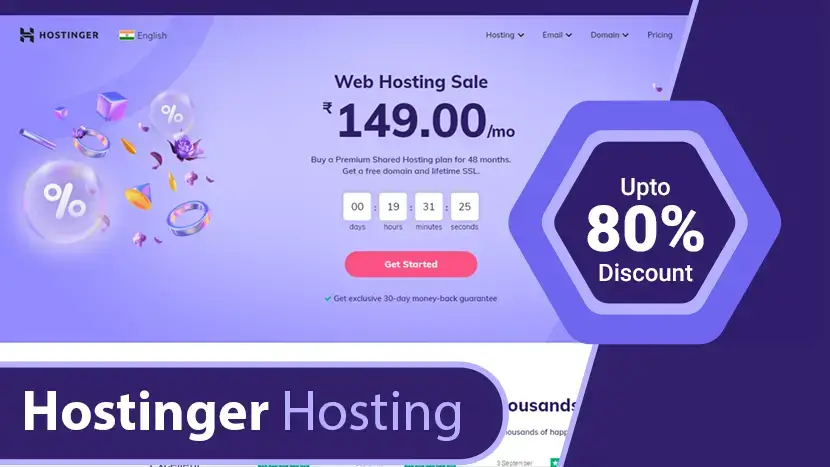
Hostinger is known for its inexpensive shared, cloud, and VPS hosting. All of their plans come with a 30-day money-back guarantee and a free website builder. Do these low-cost plans scrimp on features? Let’s take a closer look at Hostinger’s server speeds, performance, ease-of-use, and customer service.
Hostinger may be best known for its deeply discounted hosting. These Hostinger hosting plans are incredibly cheap compared to industry averages. All plans come with a 30-day free trial.
Hostinger provides free SSL certificates on all plans except for the entry-level Single Shared Hosting plan. SSL certificates are a must for all sites. Browsers may mark your site as ‘unsafe’ if you do not have an SSL certificate. Many hosting companies charge extra for SSL certificates.
Features
- Free Domain (₹679.00 value)
- Free SSL (₹855.00 value)
- Free Email
- 200 GB SSD Storage
- ~100000 Visits Monthly
- 30 Days Money Back Guarantee
- Daily Backups (₹660.00 value)
- Free CDN (₹545.00 value)
- Cloudflare Protected Nameservers
- 24/7/365 Support
- 99.9% Uptime Guarantee
- Unlimited Bandwidth
- Managed WordPress
- Unlimited Databases
- DNS Management
- 100 Websites
- 100 Subdomains
- Unlimited FTP Account
- Unlimited Cronjobs
What Are the Pros and Cons of Hostinger?
Pros
- Comprehensive knowledge base.
- User-friendly control panel.
- Competitive Pricing.
- Multiple Data Centers.
- Excellent onboarding.
- Free nightly backups.
- 30-day money-back guarantee.
- Free SSL & Domain name on entry-level plan
Cons
- Inconsistent website speed.
- Refund exceptions.
- Limited Support.
How is Hostinger’s Performance and Uptime?
Hostinger provides good server response speeds. Over the period from April 2019 through June 2019, our tests showed an average response of 509 ms.
Hostinger uses various technologies to boost site loading speeds, including:
1. SSDs: Solid-state drives are faster and more reliable than HDDs (hard-disk drives).
2. HTTP/2 and HTTP/3 (Quic): This is a network protocol that increases speed.
3. PHP 7: Most modern dynamic websites (like those built with WordPress) use the PHP language. PHP 7 provides greater speed and reliability.
4. Litespeed: Litespeed is a brand of web servers known for its speed.
5. GZIP compression: This is a form of file compression used to increase speed.
Uptime refers to the amount of time that servers are up and working correctly from the host’s end. A high uptime indicates that a host is stable, well-built, and can fend off network threats.
Hostinger provides a 99.9% uptime guarantee.
How Does Hostinger Keep Your Site Secure?
Hostinger’s SSL security guarantees lifetime security. Their web hosting plan offers a free SSL certificate to provide a safe online environment as it offers the highest level of encryption and immediate access results. Their servers have advanced security modules (such as mod_security, Suhosin PHP hardening, PHP open_basedir protection, and others) that give the highest security level available today.
Their free SSL certificate will ensure the safety of their client’s data including their clients’ target audience. Hostinger’s SSL for WordPress will also protect their clients’ blogs or e-commerce shops, ensuring the safety and reliability of every online transaction. The encryption, which protects their client’s data from theft and any other malignant act, is the strongest form of encryption in the open market and follows the SSL protocol – a guaranteed security service of Hostinger.
Hostinger’s Cloudflare is a CDN (Content Delivery Network) that not only speeds up your website’s loading speed but also protects it from intrusions and DDoS attacks. All of their hosting plans fully support Cloudflare that establishes a secure connection for sensitive data protecting their clients’ websites. This security service requires an additional fee before setting up.
Does Hostinger Handle Site Backups?
Hostinger provides daily backups with the majority of their hosting plans – the only plans that have weekly backups are their Shared Single and Premium hosting plans.
Their hPanel contains backup features that allow you to backup your files and data You can download both the website files and the database when backing up your site manually. In your hPanel, backups can be made by accessing your Backups option under the Files section. Click on Select near Generate new backup section, give it some time, your new Files and Databases backups will be made.
How is Hostinger’s Help and Support?
Hostinger provides 24/7 support. You have 2 main options.
Hostinger knowledge base – Consists of hundreds of tutorials and solutions to common issues. It’s easy to search, and from what I see, the answers are all easy to understand.
Live chat support – Available 24/7, every day of the year.
Hostinger is also active on social media and usually responds to messages and posts within a few hours.
FAQs - Hostinger Web Hosting
1. Which Company Owns Hostinger?
Answer : Established in 2004, Hostinger now has over 29 million users, collectively with its subsidiaries in 178 countries. Hostinger is the parent company of 000Webhost, Niagahoster and Weblink.
2. Which Languages Does Hostinger Support Team Speak?
Answer : Their customer support provides support in English for all locales. Additional languages they speak are Lithuanian, Portuguese and Brazilian Portuguese, Indonesian and Malaysian, Spanish, Russian, Ukrainian, French, Arabic, Thai, Vietnamese and Chinese.
3. What Kind of Support Do I Get With Hostinger?
Answer : Hostinger offers 24/7/365 support via live chat.
4. Where are Hostinger’s Servers Located?
Answer : Their servers are located all around the world. They have datacenters in Europe (the Netherlands, Lithuania, the United Kingdom), Asia (Singapore), North America (the USA).
5. What is Hostinger's Cheapest Hosting Plan?
Answer : Hostinger cheapest plan is their Single shared hosting package, which costs $1.39 per month.
6. Does Hostinger Have a cPanel?
Answer : Hostinger does not provide the classic cPanel to manage domain and hosting accounts. It has its own control panel, which is known as hPanel.
7. What are the types of web hosting?
Answer : This answer will be different for everyone. It depends on the type of website you have, the resources you need, your budget, and traffic.We gave our top recommendation for each category in this guide, so that’s the best place for you to start your search.Once you know what you need, you can narrow your options. To figure out what category you fall in, here’s a quick recap of the different hosting types
Conclusion
Hostinger is a user-friendly, secure, reliable, and affordable hosting option, especially if you are just starting out with your website.
Alternatives - Web Hosting Providers
If you want to explore more web hosting plans, here is some web hosting services provider companies as below:
Read More : You can explore here 30+ Best Web Hosting and Domain name Providers 2023
Video - Best Web Hosting For Small Business
Affordable Website Hosting for your domainIf you found this article helpful, we encourage you to share it on your social media platforms—because sharing is caring! For more information about article submissions on our website, feel free to reach out to us via email.
Send an emailWritten by RGB Web Tech
Latest Technology Trends
Latest technology trends shaping the future, including AI advancements, blockchain innovation, 5G connectivity, IoT integration, and sustainable tech solutions. Explore breakthroughs in quantum computing, cybersecurity, augmented reality, and edge computing. Stay ahead with insights into transformative technologies driving innovation across industries and revolutionizing how we live, work, and connect.
What is VPS Hosting? - Virtual Private Server
Last updated on January 19, 2025 by RGB Web Tech

A VPS ( Virtual Private Server ) is a virtual machine sold as a service by an Internet hosting service. The virtual dedicated server (VDS) also has a similar meaning.
A virtual private server runs its own copy of an operating system (OS), and customers may have superuser-level access to that operating system instance, so they can install almost any software that runs on that OS. For many purposes it is functionally equivalent to a dedicated physical server and, being software-defined, can be created and configured much more easily. A virtual server costs much less than an equivalent physical server. However, as virtual servers share the underlying physical hardware with other VPSes, performance may be lower, depending on the workload of any other executing virtual machines.
How does VPS work?
If you’re familiar with VMware or Virtualbox, you’ll be familiar with how VPS hosting works. These programs let you run what are known as virtualized operating systems from one machine. For example, your computer might be running OS X, but you could run different systems such as Linux or Windows XP without having to reconfigure or restart your computer.
VPS web hosting environments work in the same way as a virtualized operating system in the sense that one server will run numerous, one of a kind virtualized OS’s on a single server -since each virtualized system behaves as though it is a dedicated server. Virtualization is possible through a hypervisor. A hypervisor is computer hardware, software or firmware that creates and runs virtual machines (VM) by separating the underlying physical hardware from a computer’s operating system and applications. The computer system on which the hypervisor runs is known as a host machine, and each VM is called a guest machine.
The hypervisor provides each guest machine (each website using the VPS) with a virtual operating system and takes care of managing and executing guest operating systems. This process makes the most effective use of computer resources such as network bandwidth, memory space and processor cycles. For this reason, a hypervisor also goes by the name of a virtual machine monitor (VMM).
VPS hosting relies on a hypervisor to take resources from the physical server and provide each website with access to an emulated server (the VM). These physical servers are often held in a data center and divided equally between several virtual compartments (known as server virtualization). Each compartment is rented out, and server software is set-up on them separately so that each unit is capable of functioning as an independent unit. Each individual VPS is called a container, and the server each container is held within is known as a node.
With VPS, you benefit from many of the advantages of a dedicated server for a significantly lower cost. It offers more privileges within the OS and allows users to install any type of software capable of running on that OS. Each virtual server’s software is installed separately, enabling independent functionality for all users.
Defined amounts of CPU time and memory are shared throughout all the accounts sharing the server space. So, despite the fact that there might be far bigger websites than yours on another VPS compartment powered by the same server, that doesn’t matter. You are guaranteed the system resources you are paying for.
VPS is a step up for most users, but you'll also benefit by knowing a bit more about the technology. When your website is stored on a VPS, you are solely responsible for setting up, maintaining and running the server yourself. Handling an internet server is not an easy task! It involves taking care of security patches, server configuration, software updates, and so on. Unless you have the degree of technical skills required, it is going to tricky, and for this reason, there are two versions of VPS hosting – managed VPS and unmanaged VPS.
There are different types of VPS Hosting
Unmanaged VPS
With unmanaged VPS, your web hosting takes over installing the operating system, and you as the site owner take over managing various aspects of the server such as:
- Installing software, your control panel and taking care of software updates.
- Monitoring for security threats, installing security patches and fixing error messages.
- In the event of an outage or hardware failure you won’t get much if any support from your host.
- Configuring and maintaining your server including any upgrades you might want to see.
- You take over the responsibility of setting up your sites backup services.
This is recommended for site owners who have a technical background.
Managed VPS
Site owners with less technical acumen or a smaller staff can benefit from managed VPS. With managed VPS hosting, IT professionals lighten your load by keeping your server running correctly and taking care of your virtual server. Here’s what you should expect from a web hosting provider:
- Initial server setup : When you launch your site with a VPS there are a few steps to take in order to set the server up including installing your control panel, server software and installing any applications and your operating system. A managed host will take care of this.
- Updates : Similarly, all applications and OS updates, and ongoing fine tuning of the server will be handled for you.
- Security Patches : Security patches for your OS and core server software are installed and updated, on your behalf.
- Monitoring : Monitors for early warning signs of hardware failure and malicious attack.
- Automated Backups : In the event anything goes wrong with your site, you can retrieve it back to an earlier version.
Check with your VPS hosting provider to see what levels of management they offer. Some have greater flexibility, like Namecheap; we offer Self-Managed, Managed, Fully Managed and Emergency Assistance.
The tradeoffs between managed and unmanaged hosting are cost vs flexibility. While unmanaged services are, naturally, far cheaper than managed plans, there’s a snag - you need to have the tech know-how to run and maintain a server, or be prepared to hire someone to keep it running smoothly and safe from potential attacks.
What are the benefits of VPS Hosting?
The main merits of VPS servers is that they give you the freedom of having your own virtual machine just like you would from a more expensive, dedicated server with performance that can allow you to handle moderate traffic with the occasional heavy spike.
- Customization : Since you have your own OS, with a VPS, you can customize it to your needs. For example, if you have your own instances of server applications from PHP, to MySQL, or Apache, you can customize them so that the server fits your needs.
- Control : Offers the ability to oversee a hosting environment. Also, if you plan to install applications that need you to perform a system restart to finalize the installation, you can do this without affecting anyone else, at any time. Even though you share a VPS server with others, yours can be restarted without disrupting others.
- Cheaper : More affordable than a dedicated server.
- Dedicated resources : With a VPS Server, you have a predefined amount of RAM available to you whenever you need it. In contrast to shared web hosting, where there could be others sharing your server that could eat up the RAM when you want it most!
- Scalable : Another great thing about VPS is that you can purchase the resources you think you will need, and if that’s insufficient, you can simply increase its size.
Virtual Private Server Pros and Cons
VPS hosting can be an ideal solution for you if that’s the service you really need. Below, you can read the pros and cons of running a virtual private server.
Pros
- It’s faster and more reliable than a shared hosting server.
- As server resources such as memory or processing power are guaranteed, there’s zero to minimal fluctuation in available resources.
- Issues and traffic surges of other server users don’t affect your site.
- You get superuser (root) access to your server.
- You have better privacy, as your files and databases are locked from other server users.
- It’s an easy-to-scale service. As your website grows, you can easily upgrade your server resources (RAM, CPU, disk space, bandwidth, etc.).
Cons
- It’s more expensive than shared hosting.
- It requires more technical knowledge to setup your VPS, though there are a lot of tutorials available online.
- Server management is more technically demanding than shared or cloud plans.
- Improperly configured servers may lead to security vulnerabilities.
Do I need VPS hosting?
There are use cases for every type of hosting, so who exactly is VPS hosting for? You should consider VPS hosting if:
- Your business is expanding beyond the constraints of shared hosting.
- You are expecting a substantial increase in site traffic within the next few months. For example, your site is geared toward a new marketing effort or promotional campaign, or if you’re expanding into other markets.
- You might have enough bandwidth to handle a single website, but two, three? If you plan on hosting several websites in the near future you’re going to need more resources. Similarly, if your current shared hosting account is eating through the resources and your host is asking you to consider upgrading, it’s time to consider VPS.
- Your website needs better privacy and performance compared to what’s available with shared hosting.
- You want full control over the server, things like custom configurations, root access and installations unavailable with shared hosting.
Conclusion
VPS style hosting is the best way to keep up the success of any site going through rapid growth and expansion. It’s the next best plan that can afford some form of scalability. With VPS, not only will you enjoy a tremendous amount of storage and bandwidth (that’s entirely yours), it’s a cost effective solution to meeting the demands of a busy site. Of course we’ve mentioned dedicated hosting, which for most will be a vast amount of resources you may not need, and you’ll pay significantly more for it.
When deciding between the type of VPS, consider how hands on you want to be, or whether you are able to employ someone else to do the heavy lifting for you. If you like the sound of running your own server, go for unmanaged VPS, if on the other hand you’d like some help with server maintenance, automated backups and software updates, opt for the managed version. When it comes to choosing a VPS host.
Namecheap has the most optimized VPS hosting plans, we provide three types of VPS management: self-managed, managed (which includes root access) where we provide assistance with the additional configuration of core services to meet the specific requirements of each site. We can also help to optimize the server performance. We offer constant monitoring of all services on the server to prevent any of them from being down, and the ability to take immediate actions to resolve the issue in the case sudden downtime occurs. Our fully managed service plans (when root access is granted to Namecheap) includes all the features of the managed option including extras such as priority support and weekly backups.
List of VPS (Virtual Private Server) Service Providers:
Read More : You can explore here 30+ Best Web Hosting Providers 2023
Video - Best Web Hosting For Small Business
Affordable Website Hosting for your domainIf you found this article helpful, we encourage you to share it on your social media platforms—because sharing is caring! For more information about article submissions on our website, feel free to reach out to us via email.
Send an emailWritten by RGB Web Tech
Latest Technology Trends
Latest technology trends shaping the future, including AI advancements, blockchain innovation, 5G connectivity, IoT integration, and sustainable tech solutions. Explore breakthroughs in quantum computing, cybersecurity, augmented reality, and edge computing. Stay ahead with insights into transformative technologies driving innovation across industries and revolutionizing how we live, work, and connect.
Best WordPress Hosting - Fast & Secure
Last updated on January 19, 2025 by RGB Web Tech
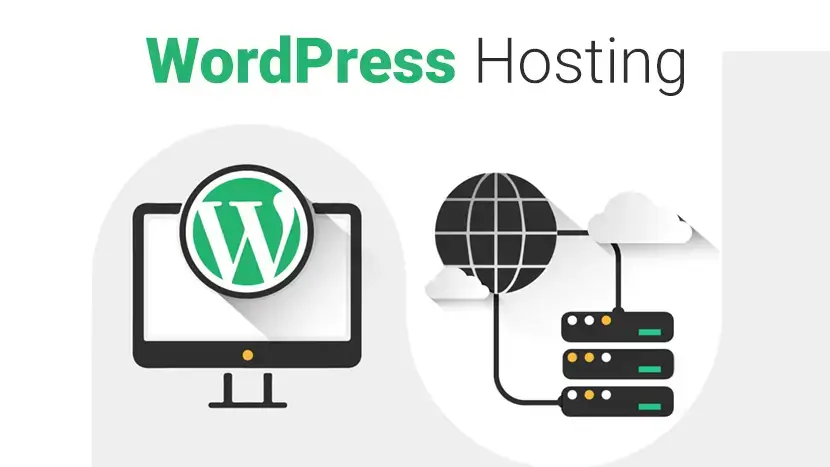
In this post, we’re going to tackle head-on the confusion that seems to keep coming up in the world of hosting with the terms WordPress hosting vs Web Hosting.
Using some form of web hosting is essential if you want to take your business online. Picking the right host can boost your site’s SEO, increase your sales, and provide tools and packages to help your business. But what is the difference between WordPress hosting and web hosting, and which is the better option?
WordPress hosting and web hosting are two very different types of hosting and are not to be confused. There are a few key differences between the two, and each has its own advantages, plans, and providers. Here’s a guide to WordPress hosting vs. web hosting and how to differentiate and choose between the two.
What is WordPress hosting?

In a nutshell, WordPress hosting is a form of web hosting optimized to run WordPress sites.
By using a WordPress host, you’ll receive lots of tools and services that are specifically tailored to WordPress sites. These may vary depending on what WP hosting service you opt for, but often include features such as one-click-install, automatic software updates, and a team of support staff who specialize in WordPress to provide you with customized support.
What is web hosting?
Web hosting is a much more general term and describes the process of an individual or organization buying a spot online to make their website accessible on the Internet.
A web host works by allocating space on a server to store the files associated with your website and by providing internet connectivity for your site. This allows your website to go live on the Internet and appear in search results.
Web hosting is very much an umbrella term, and there are lots of different types of web hosting, as well as different providers and features. If you plan on creating a website for your business, you’ll need to use some form of web hosting because you won’t be able to get your site online without a host.
What’s the difference between web hosting and WordPress hosting?
The key difference between web hosting and WordPress hosting is that web hosting is a much broader, overarching service, while WordPress hosting refers to a specific niche tailored to WordPress installs.
Web hosting is a more generalized service and refers to any hosting service that stores a site’s files on a server to make the site live on the Internet. A web host will cater to a wide range of site builders, and the websites stored on one of their servers may be operating on thousands of different platforms.
WordPress hosting, on the other hand, is a specific niche in web hosting. WordPress hosting can also use shared servers to host multiple websites at once but, unlike web hosting, every website on a shared server will be a WordPress site. A WordPress host caters specifically to WordPress installs and offers customized solutions, services, and support optimized for WordPress performance.
How to choose the best hosting option for your business
With over 338,561 web hosting service providers available worldwide, it can be difficult to choose the right one for your business – especially if you’re still deliberating between WordPress hosting vs. web hosting.
Both options have their advantages and are available from a wide range of providers in a variety of plans. To choose the best option for your business, keep in mind the key things a business needs in a web hosting service:
- Dedicated 24/7 customer service
- Supported domain name management
- Basic security features
- Uptime guarantee
- Server accessibility
WordPress Quick Overview
WordPress powers 35% of all websites on the Internet right now – and with a 4% annual growth, this is set to rise. WordPress is a hugely popular site builder and is used by businesses such as eBay, The New York Times, and Sony to create and power their websites.
According to research, WordPress is the most used CMS, and more than 1.1 million new domains are registered every six months. If you’re looking to create a business website or migrate your existing one, WordPress is a leading site builder – and it’s a noteworthy hosting option, too.
WordPress is an easy-to-use, simple, and fully customizable hosting option, and using a WordPress hosting service alongside your WP site will optimize your site’s performance and results.
WordPress hosting benefits
1. Improved Security : WordPress hosts offer servers equipped against WordPress-specific threats alongside a dedicated team who will stay on top of security issues and ensure your site is safe and secure.
2. Fast set-up and Performance : The website set-up process is made incredibly quick using pre-configured web technologies and the WordPress servers ensure fast loading times and quick uptime from the moment your site’s live.
3. Better Plugin Function : You won’t need to use as many plugins with a managed WP hosting service, because performance, security, and caching will all be optimized by the host. And for the plugins you do want or need, WP hosted sites are optimized to work with the most popular of them, which can be automatically updated.
4. Easy-to-add SSL Certificates : Most managed WordPress hosting plans allow you to add an SSL certificate to your site in a couple of clicks, at no extra charge.
5. Automatic Updates : Your website will receive automatic updates and upgrades, and security packages can be added to every website on a server at once.
6. Tailored Support : When using a WordPress hosting service, you’ll be able to access dedicated customer support services, experts in resolving WordPress issues.
Who should use WordPress hosting?
If you built your website using WordPress, you’ll benefit hugely from using WordPress hosting. WP hosting integrates perfectly with websites built with WordPress and will improve your site’s functioning, security, and offer automatic updates. You don’t have to use WordPress Hosting if you have a WordPress website, but combining the two creates the ultimate package.
Those looking for a managed hosting plan would benefit from WordPress hosting, too. WordPress hosts often offer managed services, where your site is run and maintained for you by WP experts. This is a great option for those with limited time or experience with running a website.
Web Hosting and WordPress Hosting Plans
Whether you choose to use WordPress hosting or web hosting, you’ll have to choose a hosting plan. Shared hosting, VPS hosting, Dedicated server hosting, and Cloud hosting are popular services offered by both WordPress hosts and web hosts.
WordPress hosts also offer some additional managed hosting services that can help with the running of your site.
Here are six of the most popular hosting plans available:
1. Shared Hosting : When you use a shared hosting plan, your website will share a server with other clients. This is a cheaper option and is easy to set up, making it ideal for those who are creating a starter website or who don’t have much site traffic.
2. Virtual Private Servers : A VPS plan is similar to shared hosting; you will share your server with other users, but you will be more isolated and have your own allotted space. This plan is ideal for those operating on a lower budget and who want a higher level of control and customization.
3. Dedicated Server : If you have a high-traffic website and need optimized performance and fast loading speeds, a dedicated server is a good choice. Dedicated servers offer you total customization, improved reliability, and the chance to scale your business up; but they are a high investment option.
4. Cloud Hosting : This is a relatively new type of hosting, where your website is hosted on a cloud infrastructure rather than stored on a physical server. This hosting plan has lots to offer to those looking for scalability and stability at a cheaper price, but pricing isn’t always fixed, so if your site experiences an increase in traffic, you might see an unexpected rise in costs.
5. Managed WordPress Hosting : Lots of WordPress hosting providers offer a managed service, where the host manages and runs all the technical aspects of your WordPress site for you. Managed Hosting plans can be run across any of the hosting plans listed above, and offer optimum security, performance, and configuration.
6. Optimized WordPress Hosting : If you’re looking for a hosting plan that offers pre-installed features and technologies to optimize your site, Optimized WordPress Hosting is a great choice. Optimized WordPress Hosting is a complete package plan and comes with pre-installed WordPress hosting, WordPress optimized servers, built-in WordPress security, and WordPress expert support.
Which plan you choose will depend on your budget, the amount of traffic your site receives, and how much help you want from your host in the running of your site.
List of WordPress Web Hosting Service Providers:
Read More : You can explore here 30+ Best Web Hosting Providers 2023
Video - Best Web Hosting For Small Business
Affordable Website Hosting for your domainIf you found this article helpful, we encourage you to share it on your social media platforms—because sharing is caring! For more information about article submissions on our website, feel free to reach out to us via email.
Send an emailWritten by RGB Web Tech
Latest Technology Trends
Latest technology trends shaping the future, including AI advancements, blockchain innovation, 5G connectivity, IoT integration, and sustainable tech solutions. Explore breakthroughs in quantum computing, cybersecurity, augmented reality, and edge computing. Stay ahead with insights into transformative technologies driving innovation across industries and revolutionizing how we live, work, and connect.
What is Reseller Hosting? And How Does It Work?
Last updated on January 19, 2025 by RGB Web Tech

Reseller web hosting is an option that involves one company (a hosting provider) renting hard drive space and bandwidth to another company (small-midsize business), who then rents the space to third parties (entrepreneurs-small business). Simply put, reseller hosting is the ability to provide hosting to your own clients as if you yourself were the web hosting company.
This is typical for aspiring entrepreneurs who want to start their own web hosting firm or for current web developers and designers who desire to add additional services to their brand.
Advantages of Reseller Hosting
1. Cost : Plans for reseller hosting are fairly cheap. This is why they’re a good option for people looking to get into the web hosting business. Additionally, it simplifies things because you don’t have to purchase the technology, infrastructure, and equipment usually needed to become a web hosting service provider.
2. Focus on the Business : When you choose reseller hosting you can focus on the business aspects rather than the technical aspects of running a web hosting business. This is because all of the tasks related to updates, server maintenance, connectivity, security and so forth, are the responsibility of the web hosting service you’ve rented or purchased from.
3. Room to Expand : If you have a website that gets a lot of traffic, has a lot of pages or your business has several sites, reseller hosting will provide you with a larger number of features and space. For instance, you can run different parts of your sites from different URLs and different servers without having to purchase additional hosting plans.
4. Additional Features : In comparison to basic hosting plans, reseller hosting has a greater number of features. The control panel for the website will also be more powerful, enabling you to manage your site more effectively. Furthermore, a lot of companies will offer unlimited SSL certificates as well as features such as Cpanel.
5. Build Your Brand : Although you’re selling the resources of another web hosting service provider, reseller hosting lets you build your own identity and brand. Essentially, this means that clients won’t know that you’re renting from another web hosting company.
6. Income Opportunities : It’s possible to make additional profit from reseller hosting by selling add-ons such as SSL Certificates, Dedicated Hosting, VPS Hosting, Dedicated IP, domain name registrations, etc.
Disadvantages of Reseller Hosting
1. You’re Dependent on the Original Web Hosting Company : The quality of the original web hosting company will determine the success of your business. This means that if their server regularly goes down or if there are a lot of technical issues, your business will be affected.
2. You’ll Need to Dedicate Time to Customer Service : If you’re providing a web hosting service, even if it's reseller hosting, you’re still responsible for answering questions from clients. If you don’t take the time to answer these questions correctly, it could ruin your business.
3. High Level of Difficulty : Unless you’re an expert at running a website you’re going to find the features and control panels of reseller hosting difficult.
4. Changing Providers will Affect Your Clients : If you decide to change your web hosting provider you have to shift all the data from your clients. This can be incredibly difficult so it’s recommended that you have a dedicated server or Virtual Private Server (VPS). Having a dedicated server or VPS will make it easier to change providers but it does make things more expensive.
5. Limited Access to the Server : You are going to have to go through your web hosting service provider for most things because reseller hosting only offers limited access to the server.
How Do You Make Money as a Reseller?
Nobody is going to pretend you’re going to get rich with reseller hosting but you can make extra income from it. You also gain an income from those clients attracted by the complete packages a web designer can offer that includes site setup and hosting in one.
Essentially, if you offer full managed hosting to your customers, you can charge a premium as compared to standard hosting, where you would charge let’s say $50/month to each client, but handle all their technical needs and maintenance, such as upgrades of core CMS, plugins, backups, security, etc.
Your residential income depends on the wholesale price you pay to the host and the maximum your market can sustain. As mentioned, some hosts charge a monthly maintenance fee for reseller hosting accounts but many don’t. It pays to research the market, what’s on offer and at what price before you settle on one provider.
Most reseller accounts are scalable so you can start small when you first launch your offering and scale up only when you need to. This is a cost-effective way to do business and keeps your costs down as much as possible.
How to Choose the Best Reseller Hosting?
If you have your business plan in order then the main task left to you is to choose the best reseller hosting for your needs. When you’re considering a web hosting service that has reseller plans make sure to check for the following:
- Does the reseller have a solid reputation for reseller hosting?
- Does the hosting service have a plan that meets your budget and hosting needs?
- Do they have a good software interface to manage your reseller account?
- If you’re not satisfied, do they have a money-back guarantee?
- Do you have access to technical support? What kinds of support services? Phone/email/chat?
- If your business grows and requires an upgrade, will they provide an upgrade path for your hosting service?
Choosing a service is often a matter of personal preference and perspective, but this checklist should help lead you to a reseller host that will provide the solution you need.
FAQs - Reseller Hosting
1. What is reseller hosting?
Answer :Reseller web hosting is an option that involves one company (a hosting provider) renting hard drive space and bandwidth to another company (small-midsize business), who then rents the space to third parties (entrepreneurs-small business). Simply put, reseller hosting is the ability to provide hosting to your own clients as if you yourself were the web hosting company. This is typical for aspiring entrepreneurs who want to start their own web hosting firm or for current web developers and designers who desire to add additional services to their brand.
2. How does reseller hosting work?
Answer : Here are the (perhaps over-simplified) steps to establishing a reseller business: 1. Research and select a hosting company. 2. Purchase the reseller package that meets the goals of your business. 3. Know and understand your target market to locate your new customers. 4. Create your own branded hosting packages. 5. Decide your price. 6. Sell hosting packages to your clients. 7. Earn profit
3. What’s included in a reseller package?
Answer : Below are some of the common features often included in Reseller packages: 1. Disc Space 2. Bandwidth 3. Domain Hosting 4. Ability to brand your own web hosting company with the hosting provider company unknown to your client (also known as “white label”) 5. Latest cPanel control panel. 6. Manage your own plans and configure different accounts based on your needs. 7. Pass on features to your own clients such as email, control panel, additional scripts and monitoring tools. 8. Premium support (usually 24/7) offered by hosting providers.
4. Will my clients know it’s me…or my hosting company?
Answer : They will believe it’s you! You see, you can run your own hosting business under your banner and brand without your clients knowing who your actual upstream hosting provider is. This gives you total control in promoting your business with your name written all over it!
5. Do I need to be a hosting expert to succeed at this?
Answer : Nope. Your provider will handle all the backend, “dirty” work, so you can focus on building your business. Server hardware, connectivity, network infrastructure, hardware setup and maintenance, security and updates for your servers are all addressed by your web hosting provider. It’s a good idea to check into these things as you do your research to ensure that you’ll receive the best tech support if certain issues arise…and they likely will.
6. If my business grows, can I upgrade at any time?
Answer : Absolutely…you can upgrade your reseller hosting account at any moment to expand with the demands of your business.
7. How do I get started?
Answer : To get started, you simply follow the steps outlined in FAQ-2. The foundation to your success will lie in choosing a good reseller web hosting provider that not only meets the objectives of your business, but can provide you with consistent, reliable service and support because it's your name that is on the line when dealing with your customers. Choose wisely…which leads to the final FAQ…
8. How do I choose the best hosting provider?
Answer : It’s important to know that you can offer your own customers the best possible web hosting experience prior to building your clientele. Here are just some qualities to keep in mind when searching for your reseller web hosting service: 1. Easy to use cPanel 2. At least 1 site builder 3. Satisfaction guarantee 4. Private nameservers 5. Brandable client panel 6. 24/7/365 impeccable support 7. A 99.999% uptime guarantee 8. Fully managed services
Conclusion
In sum, reseller hosting can be lucrative if you’re looking to get into the web hosting business or if you’re a developer or designer. However, it is a lot of work and is certainly not for everyone. Make sure you research web hosting service providers to ensure they can offer your site optimal performance and make sure you’re comfortable with advanced website controls.
List of Reseller Web Hosting Service Providers:
Read More : You can explore here 30+ Best Web Hosting Providers 2023
Video - Best Web Hosting For Small Business
Affordable Website Hosting for your domainIf you found this article helpful, we encourage you to share it on your social media platforms—because sharing is caring! For more information about article submissions on our website, feel free to reach out to us via email.
Send an emailWritten by RGB Web Tech
Latest Technology Trends
Latest technology trends shaping the future, including AI advancements, blockchain innovation, 5G connectivity, IoT integration, and sustainable tech solutions. Explore breakthroughs in quantum computing, cybersecurity, augmented reality, and edge computing. Stay ahead with insights into transformative technologies driving innovation across industries and revolutionizing how we live, work, and connect.
Best Domain Name Provider
Last updated on January 19, 2025 by RGB Web Tech
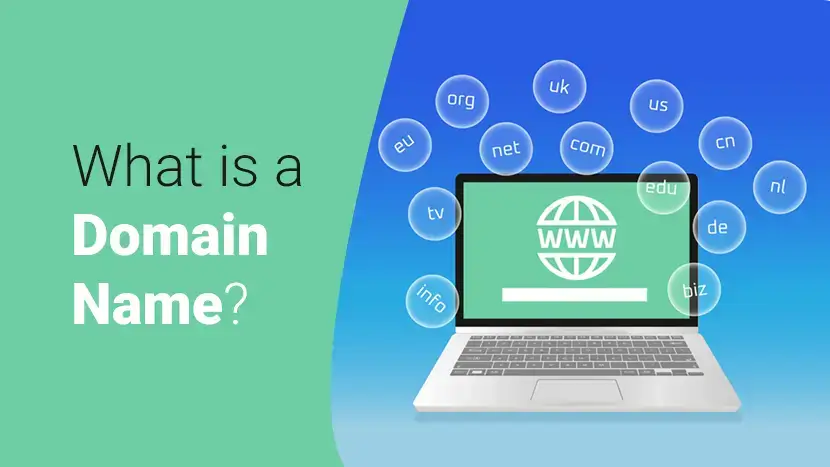
Choosing a domain name is an important decision for any website owner. If you’re wondering what domain names mean, you’re not alone. The following information will shed some light on the subject matter.
Definition of Domain Name
A domain name is used to recognize one or more IP addresses. Domain names are used in URLs to recognize Web pages. For instance, in the URL https://www.rgbwebtech.com, the domain name is rgbwebtech.com.
Since the Web is supported by IP addresses, every Web server must have a Domain Name System or DNS server. A DNS server translates domain names into IP addresses.
Each domain name that exists has a suffix that displays which ‘top level domain’ it belongs to. What is a domain name suffix? Here are a few examples:
- .com – Commercial business
- .gov – Government agencies
- .org – Non-profit organizations
- .net – Network organizations
- .mil – Military agencies
- .edu – Education facilities
- .ca – Canada
- .uk – Europe
- .th – Thailand
Best Domain Name Providers
If you want to explore more domain name plans, here is some domain name services provider companies as below:
Read More : You can explore here 30+ Best Web Hosting and Domain name Providers 2023
Registering a Domain Name
It is a simple process to register your domain name. Simply choose a web hosting site, choose your domain name, and pay the registration fee. However, it is not as simple if the domain name you have chosen is already taken. All reputable domain registration websites use WHOIS to determine eligible domain names. WHOIS can also show you the owner of the domain name you have chosen which is not available.
Choose a domain registration website which offers more than purchasing your domain name. Do your research on prices and services offered. You will need services to host your website as well. Otherwise, no one will find your domain. You will also benefit if you choose a domain registration website which offers services such as fixing your domain and how to help your website gain traffic.
Your web hosting plan does not necessarily have to be purchased through the same site as the domain registration. However, the convenience of having all your services under one roof is beneficial and cost-effective for most e-commerce website owners.
Choosing a Domain Name
Choosing a domain name is not always the easiest part of creating a successful website. You need a domain name that is creative, brand worthy, and easy to remember. However, the one you choose for your business might not be available. While this can be frustrating, there are ways to make it easier.
Domain Name Generators
Using a reputable domain name generator reduces the amount of time you spend trying to find an available domain name. Domain name generators use an algorithm to filter through thousands and thousands of available names and suffixes.
When your chosen domain name is not available, you can use suggestions that will add prefixes or suffixes, abbreviations or other variations of that domain name. Most domain name generators provide available suggestions.
Tips for Choosing a Domain Name
The following tips will help you in narrowing down your options.
1. Brandable: While a generic domain name is convenient and easier than sifting through thousands of options, a creative domain name is brandable. Customers will remember it when they think of your products and services building your brand in the process.
2. Get Creative: Google, Yahoo, and Pepsi are all made up words, which through marketing strategies has worked well for their companies. Use a thesaurus when you have trouble coming up with words that mean the same as your keywords. A catchy domain name that is easy to say and spell will stick with targeted customers.
3. Short and Easy to Type: Use words customers can easily spell. Do not use the slang version as it will cause misspelled domain names, lead to the wrong IP address, and loss of customers to the competition.
4. Use keywords :Keywords in your domain name that describe your business make it easy for customers to remember. Search engines also like keywords in the domain name.
5. Do not use hyphens or numbers : Often numerical numbers get written out, and hyphens are misplaced or not used at all. If another domain name is similar to yours, you will lose this customer to the competition.
6. Use .com : You may have noticed there are multiple top-level domain (TLD) extensions available to use. However, using .com, which is the most recognized and thought of TLD, will ensure customers get to your website.
7. Protect Your Domain Name : It is a good marketing strategy to buy as many variations of your domain name as possible. All variations are then forwarded to your top-level domain name which you will use for your website and all marketing purposes. Typo squatters trying to steal customers will use variations of your domain to trick customers into thinking their website is yours, the one they were looking for.
8. Long-term thinking : The top-level domain name you choose is tied to your brand and your business for life, like a marriage. If you decide to change it in the future, you are going to be starting from scratch again. It will cost you in branding, SEO marketing, and possibly the loss of customers.
Also, in long-term thinking, consider the niche you have chosen. Are you comfortable staying within that niche, or do you have dreams of expanding to different niches? This is a business-making decision that needs to be made in the beginning. You will have a hard time expanding to different niches with the same domain name and could lose the chance of loyal customers following you on your business adventures.
1. Now What : What do you do after choosing your domain name? What if you are not ready to use it yet? No worries, you will not lose the domain name you have finally chosen to purchase.
2. Park it : If you are not ready to create a website or use the new domain name for your new email address, you will not lose the domain name. Your domain registration provider or web hosting service has options for you to park it until you are ready.
3. Use it for email : Having your new domain name means you can now send and receive emails using it. It will be personalized, unique and more professional than a Yahoo, Hotmail, or another temporary account. Get a webmail, e-mail package or buy a web hosting package which usually includes e-mail for your new domain.
4. Create a new website : Build it yourself or use a professional web design service. Tell the world what you have to offer or what is important to you.
5. Sell It : Domain names can make great investments. Build a single ‘For Sale’ page and point your domain at that. Many such websites have been created just for brokering domain names.
What are the benefits of a domain name?
There are so many websites in the world already, does having a custom domain name still make a difference? On a basic level, domain names affect how easily your potential customers can find you on search engines, and what a visitor’s first impression of your service will be. The short answer, then, is yes: domain names are important.
What are the tangible benefits to having a domain name?
Domain names can benefit your business by helping you to:
- Reach your target market
- Maintain brand ownership
- Be memorable (get found easily by customers)
- Build an online presence
- Set expectations
- Develop credibility
- Boost your SEO
- Compete with other businesses
- Grow and expand
Benefits of Domain Names: For the Business
1. Connect with your market : A bespoke, high quality domain name enables you to speak directly to your specific corner of the market by setting more precise expectations regarding what your business has to offer. This saves you – and your customers – time and enables you to connect with them clearly and quickly.
2. Control your brand : If you don’t secure your preferred business domain name, you run the risk of somebody else purchasing it and losing control of your brand. Even if you’re not sure you’ll want to use it, buying a domain name for your business benefits you by ensuring that no one else can secure your name and potentially siphon you customers (or even maliciously damage your reputation). For example, if you’re the proprietor of Holly’s Handbags, you’ll want to have a domain as similar to Hollyshandbags.com as possible.
3. Be remembered and get found online : A domain name helps you stand out and be memorable. Having a site with a ‘.blog’ before your name doesn’t exactly help customers find you in a quick search and makes it hard to remember your business’s URL. Buying a domain name can help you solve this problem and ensure your clients remember you and can find you whenever they need.
4. Online presence, Identity and branding : Your site’s name allows you to communicate something to your visitor about what your services are and what your core message is. Used correctly, a name can contribute to your overall reputation and branding – and we all know that a good reputation means more customers and sales. A good domain name basically helps you set up a vision for your business’s identity, and secure better online visibility.
5. Add a layer of credibility and professionalism to your business : Having a personal domain name is a good sign that your company is trustworthy, and should be taken seriously.
6. Increase your site’s SEO : This is all about how your website appears to (and on) search engines. Having a relevant domain name that directly links to your service or product and the words people commonly use to search for these is sure to impact on your website’s ranking.
Of course, there are a myriad of factors that can affect how a site ranks on search engines like Google. That said, a good domain name can definitely bolster your site’s ranking on search engines and help drive more traffic to it.
7. Develop a competitive edge : A personal domain name puts you on a more even playing field in comparison to big companies, helping you compete alongside every one of your competitors – even if they’re much bigger.
To put it bluntly, every well-known business has an independent domain name these days. As such, a unique domain name is just part of the process of starting a business in 2023. It can form a big part of your growth, and might even be the first step to your business’s long success.
Benefits of Domain Names: For the Consumer
1. You may be wondering: what are the benefits of an independent domain name from the consumer’s perspective? When it comes to the consumer, the advantages of having a domain name largely boil down to expectations and finding the relevant services quickly.
2. They know what to expect : For a potential customer, an accurate domain name is how it helps you to understand the kind of business you’re dealing with and what to expect from it. For instance, if you spotted a website called ‘onlyorchids.com’, but you were actually looking to buy a bouquet of roses for your mother, you’d immediately know from the domain name that the flowers on offer from this business weren’t for you.
3. Save time : Domain names help weed out irrelevant results on a search engine, helping potential customers find the exact services they’re looking for more quickly and cutting down on unnecessary searching time. The end result? Consumers are able to get a better sense of all the relevant businesses offering a particular service through a quick search.
All in all, the benefits of domain names for your consumers can’t be overlooked. Whilst your site’s name only represents one part of creating a business, domain names do play a role in helping consumers connect to the services they’re looking for quickly and with ease. They set expectations, helping consumers identify exactly what a business is offering and whether it is for them.
FAQs - Registering a Domain Name
1. What is a domain name?
Answer : A domain name enables your customers to access your website through the world wide web.
2. Why do I need a domain name?
Answer : A domain name serves as a distinct identity on the word wide web. If you would like to promote yourself, take your business online, etc. a domain name is a must.
3. Is there a character limit for a domain name?
Answer : Yes, the minimum character limit for a domain name is one and maximum 63 characters.
4. How do I protect the contact information associated with my domain name?
Answer : Domain Privacy Protection hides the domain registrant's personal information from the public WHOIS database.
5. Is Privacy Protection worth it?
Answer : The contact information for all domain owners is available in the WHOIS directory. You can protect your personal information by opting for Domain Privacy Protection. We hide your information from public view.
6. Besides a domain name, what else do I need to have a website?
Answer : Apart from purchasing a domain name, you need to develop your website, blog. There are several options to host your website. For eg., Content Management System (a.k.a. CMS) such as WordPress, Magento, Drupal, Joomla or hire a developer to code your website. You can also have a look at the various web hosting plans.
7. How do I restore a deleted domain from the redemption grace period?
Answer : If a domain name is not renewed within the Renewal Grace Period, it would be queued for deletion at the end of the Renewal Grace Period and subsequently Deleted.
8. What are some tips when choosing a name?
Answer : Search for a domain name that's easy for people to remember and spell. This approach can help establish your brand and credibility. Unless your brand name is already well established, purposeful misspellings will just confuse potential clients and website visitors.
9. How do I choose a domain that stands out?
Answer : Every domain is unique, just like every physical address or telephone number. But you want a domain that really sets you apart and reflects your brand, style or personality – the type of domain name that clients will be sure to remember.
10. What if I need help choosing the right domain?
Answer : If you're still feeling stumped in your domain name search, you can reach out to our amazing support team, who are always on standby to talk to you and help you with your domain name registration.
Conclusion
These were the top domain name registrants in India. The aim of this blog was to give you an idea regarding where to purchase domain names. While purchasing, always remember that the right domain name brings in more credibility and traffic to your business. To conclude, a domain name builds your brand hence do not delay purchasing a domain and always use the right site to make the purchase.
We can now conclude that the overall best Domain Registrars are Bluehost, Hostinger, ScalaHosting etc.
Video - Best Web Hosting and Domain Name Provider
Affordable Website Hosting for your domainIf you found this article helpful, we encourage you to share it on your social media platforms—because sharing is caring! For more information about article submissions on our website, feel free to reach out to us via email.
Send an emailWritten by RGB Web Tech
Latest Technology Trends
Latest technology trends shaping the future, including AI advancements, blockchain innovation, 5G connectivity, IoT integration, and sustainable tech solutions. Explore breakthroughs in quantum computing, cybersecurity, augmented reality, and edge computing. Stay ahead with insights into transformative technologies driving innovation across industries and revolutionizing how we live, work, and connect.
What is On Page SEO? How to Optimize Web Page
Last updated on January 19, 2025 by RGB Web Tech
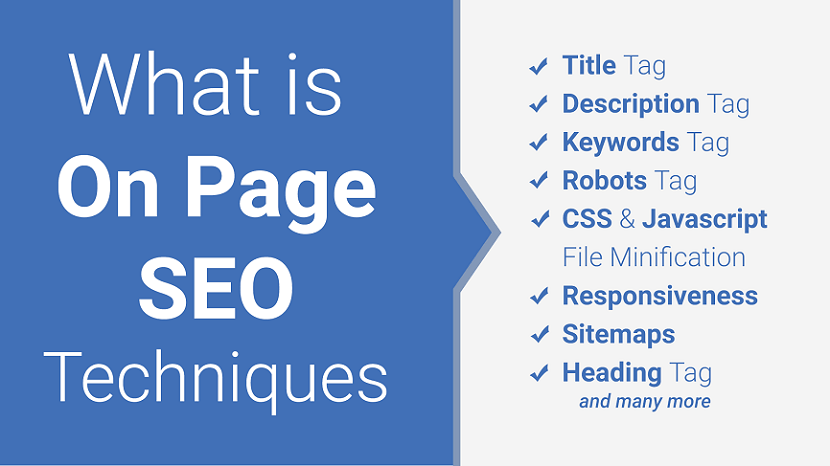
On Page SEO involves the actions that you take on your web pages to gain higher page rank through search engine results. The main technique of On Page SEO is creating high-quality content that online visitors will find useful. On top of it, adding meta tags will enable google bots to identify your content for ranking. Also, make sure to use HTML tags for headings and other elements so that there are no duplicate pages or broken links.
In addition, choose images that are not too large, and add alt tags to all of them. These are some of the On Page SEO techniques. The agency you hire will provide you more details.
If you want your site to rank on Google and increase your brand's organic traffic, you’ll need to look at Off Page SEO, Technical SEO and Local SEO also.
But before you starting SEO also learn techniques of SEO ( White Hat SEO, Black Hat SEO, Gray Hat SEO and Negative SEO )
On Page SEO Techniques
- Meta Title
- Meta Description
- Meta Keywords
- Favicon Icon
- Social Meta Tag
- Meta Robots Tag
- CSS & Javascript File Minification
- Mobile Friendliness / Responsiveness
- Sitemaps Updates (XML, Text, HTML)
- Content Optimization
- SEO-Friendly URLs
- Heading Tag Optimization
- Image Optimization
- Image Alt Text Optimization
- Anchor Title Optimization
- Internal Links optimization
- Use Social Sharing Buttons
- Call to Actions
- Conversion Form
1. Meta Title
A meta title (also called title tag) is an element in the head section of an HTML document that defines the title of each page of a website. It is retrieved by web browsers and also used by search engines such as Google to display a webpage in search results (SERPs). Often the meta title is mistakenly categorized as a meta tag. However, this is not correct since it is a unique HTML element.
Meta Title Examples
Characteristics of a good Meta Title
Below we have summarized the most important points to consider when optimizing your meta titles:
- Optimal length between 55 and 65 characters (maximum 70)
- Combine important keywords to a meaningful sentence
- Most important keyword should come first
- Avoid word repetitions and spelling errors
- Provide a concise and understandable description of the page content
- Use a call-to-action if necessary
- Use individual titles for each page of a website
2. Meta Description
A meta description is an HTML element that provides a brief summary of a web page. A page’s meta description tag is displayed as part of the search snippet in a search engine results page (SERP) and is meant to give the user an idea of the content that exists within the page and how it relates to their search query.
Meta Description Examples
Characteristics of a good meta description
Based on the research we did on this topic, as well as our own experience, we came up with this list of elements you need to write a good meta description:
- Keep it up to 155 characters
- Use active voice and make it actionable
- Include a call-to-action
- Use your focus keyword
- Show specifications, where possible
- Make sure it matches the content of the page
- Make it unique
3. Meta Keywords
Meta keywords are meta tags that you can use to give search engines more information about a page’s content. They’re found in a webpage’s HTML source code, and are not visible to visitors.
Meta Keywords Examples
Do you still need to use meta keywords?
Google hasn’t used the meta keywords tag to help rank web pages for at least a decade. We know this because Matt Cutts, Google’s former Head of the Webspam Team, released a video in 2009 where he said - we don’t use the keywords meta tag in our search ranking.
However, it’s important to remember that there’s more to SEO than Google, so there are a couple of reasons why you might still want to use the keywords meta tag.
- It may still be used by Yandex
- It’s used for some internal site searches
- Create an internal tagging system
4. Favicon Icon
A favicon is a small 16×16 pixel icon that serves as branding for your website. Its main purpose is to help visitors locate your page easier when they have multiple tabs open. Due to their tiny size, favicons work best as simple images or one-to-three characters of text. Favicons are not to be confused with logos but are sometimes the same. Due to its small size and resolution, the favicon may need to be an even smaller size or part of a company’s original logo.
What sizes are needed for a Favicon on each Browser?
As stated above, 16px is generally recommended because it can be used across all browsers, but if you would like to create a favicon for every possible use, then follow the guide below:
- 16px: For general use in all browsers, could be displayed in the address bar, tabs or bookmarks views
- 24px: Pinned Site in Internet Explorer 9
- 32px: New tab page in Internet Explorer, taskbar button in Windows 7+ and Safari ”Read Later” sidebar
- 57px: Standard iOS home screen (iPod Touch, iPhone first generation to 3G)
- 72px: iPad home screen icon
- 96px: Favicon used by the Google TV platform
- 114px: iPhone 4+ home screen icon (twice the standard size for the retina display)
- 128px: Chrome Web Store
- 195px: Opera Speed Dial
5. Social Meta Tag
When sharing an article link, you want your post to look nicely when published on social media. You’d like it to contain a quality image, correct name, description, and URL. Facebook, Twitter and other social media platforms get these parameters from your website. You can control what they pull from the post by including social media meta tags (for example open graph tags) in the html code of your posts.
If the Facebook meta tags (Open Graph meta tags) are present, you determine what’s being displayed in the Facebook post. If you do not include these Open Graph (og) meta properties, Facebook will still display the information about your blog post but probably not in the way you’d want it to. This works analogically with Twitter meta tags, too.
Facebook Social Tag Example
Twitter Social Tag Example
6. Robots Meta Tag
A robots meta tag, also known as robots tags, is a piece of HTML code that's placed in the
section of a web page and is used to control how search engines crawl and index the URL.This is what a robots meta tag looks like in the source code of a page:
Robots tags are page-specific and allow you to instruct search engines on how you want them to handle the page and whether or not to include it in the index.
Indexation-controlling parameters:
- Noindex: Tells a search engine not to index a page.
- Index: Tells a search engine to index a page. Note that you don’t need to add this meta tag; it’s the default.
- Follow: Even if the page isn’t indexed, the crawler should follow all the links on a page and pass equity to the linked pages.
- Nofollow: Tells a crawler not to follow any links on a page or pass along any link equity.
- Noimageindex: Tells a crawler not to index any images on a page.
- None: Equivalent to using both the noindex and nofollow tags simultaneously.
- Noarchive: Search engines should not show a cached link to this page on a SERP.
- Nocache: Same as noarchive, but only used by Internet Explorer and Firefox.
- Nosnippet: Tells a search engine not to show a snippet of this page (i.e. meta description) of this page on a SERP.
- Noodp/noydir [OBSOLETE]: Prevents search engines from using a page’s DMOZ description as the SERP snippet for this page. However, DMOZ was retired in early 2017, making this tag obsolete.
- Unavailable_after: Search engines should no longer index this page after a particular date.
7. CSS & Javascript File Minification
CSS & Javascript minification is the process of removing unneeded code from CSS & Javascript source files, with the goal of reducing file size without changing how the CSS & Javascript file executes in the browser. By stripping unnecessary data from the CSS & Javascript code, minification helps the browser download and process these files faster, increasing page performance and improving user experience.
You can minifier CSS & JavaScript here
- Free Formatter - https://www.freeformatter.com
8. Mobile Friendliness/Responsiveness
Mobile is changing the world. Today, everyone has smartphones with them, constantly communicating and looking for information. In many countries, the number of smartphones has surpassed the number of personal computers; having a mobile-friendly website has become a critical part of having an online presence.
The web is being accessed more and more on mobile devices. Designing your websites to be mobile friendly ensures that your pages perform well on all devices.
You can test here mobile friendliness
9. Sitemaps Updates (XML, Text, HTML)
A sitemap helps search engines discover URLs on your site, but it doesn't guarantee that all the items in your sitemap will be crawled and indexed. However, in most cases, your site will benefit from having a sitemap.
It is also essential to know there are two different types of sitemaps.
- XML sitemaps
- HTML sitemaps
You can Generator Sitemaps for your website here
- XML-Sitemaps - https://www.xml-sitemaps.com
- Small SEO Tools - https://smallseotools.com/xml-sitemap-generator/
10. Content Optimization
Content optimization is the practice of ensuring that your content has the best possible chance of achieving its intended goal, whether that’s to rank in a search engine or to turn leads into conversions.
You can implement a number of basic, time-tested methods to achieve these goals, but it’s not just about performing technical tasks and ticking boxes. Significant marketing and editorial elements to web content optimization need to be covered, too.
Let’s say that you’ve written a great top-of-the-funnel (TOFU) blog that’s related to your core product, and you want to get as many eyes on it as possible. Two to three months after publishing, you check the performance of the post only to find that nobody has seen it.
Why? Well, maybe:
- The keywords you have used have little to no search volume
- You haven’t covered the topic in any real level of detail
- You haven’t used a coherent heading structure, so Google’s bots have had a hard time making sense of your article
- Your title tag doesn’t accurately reflect what the article is about
11. SEO-Friendly URLs
SEO friendly URLs are URLs that are designed to meet the needs of users and searchers. Specifically, URLs optimized for SEO tend to be short and keyword-rich.
Along with your title tag, link anchor text, and the content itself, search engines use your webpage’s URL to understand what your content is all about.
Best practices for creating SEO-friendly URLs.
- Describe your Content
- Include Keywords in URLs
- Use Hyphens to Separate Words
- Use Lowercase Letters in URLs
- Keep URLs Short
- Use Static URLs
- Be Careful with Subdomains
- Limit Folders in URL Structure
12. Heading Tag Optimization
Header tags are HTML tags that tell a browser what styling it should use to display a piece of text on a webpage.
If we looked up the HTML for the heading above, it’d look something like this:
What is a Header Tag?
Like headings in print content, header tags are used to title or introduce the content below them. HTML header tags follow a hierarchy, from h1 to h6.
- H1 tags are used to denote the most important text, such as the main theme or title of a content.
- H2 and H3 tags are commonly used as subheadings.
- Finally, H4, H5, and H6 tags may be used to provide further structure within those subsections.
13. Image Optimization
The majority of a website’s data is typically comprise of images. Website image optimization refines images so as to lighten pages, reduce load times and lessen the burden of network resources, including data usage in the case of mobile data plans.
Image optimization can also increase your search engine optimization (SEO) rankings, as search engines factor in page load speed when ranking sites. The result is significant load savings, an improved user experience and increased site visibility.
Image Optimization Methods
- Image Compression
- Vector Images
- Image Caching
14. Image Alt Text Optimization
Adding images to your posts and product pages encourages people to read them, and well-chosen images can also back up your message and get you a good ranking in image search results. But you should always remember to provide your images with good alt attributes. Because alt text strengthens the message of your pages with search engine spiders and it improves the accessibility of your website.
This is a complete HTML image tag:
Bad Image Alt Text
Good Image Alt Text
Image Alt Text Best Practices
Ultimately, image alt text needs to be specific but also representative of the topic of the webpage it's supporting. Get the idea so far? Here are a few important keys to writing effective image alt text:
- Describe the image, and be specific: Use both the image's subject and context to guide you.
- Add context that relates to the topic of the page : If the image doesn't feature a recognizable place or person, then add context based on the content of the page. For example, the alt text for a stock image of a person typing on a computer could be "Woman optimizing WordPress website for SEO" or "Woman researching free blogging platforms," depending on the topic of the webpage.
- Keep your alt text to fewer than 125 characters : Screen-reading tools typically stop reading alt text at this point, cutting off long-winded alt text at awkward moments when verbalizing this description for the visually impaired.
- Don't start with an alt text of picture : Do not write an alt text of image, write alt text article specific.
- Use your keywords, but sparingly : Only include your article's target keyword if it's easily included in your alt text. If not, consider semantic keywords, or just the most important terms within a longtail keyword. For example, if your article's head keyword is "how to generate leads," you might use "lead generation" in your alt text, since "how to" might be difficult to include in image alt text naturally.
- Don't cram your keyword into every single image's alt text : If your blog post contains a series of body images, include your keyword in at least one of those images. Identify the image you think is most representative of your topic, and assign it your keyword. Stick to more aesthetic descriptions in the surrounding media.
- Review for spelling errors : Misspelled words in image alt text could hurt the user experience or confuse search engines crawling your site. You should review alt text like you would any other content on the page.
15. Anchor Title Optimization
Anchor text is the clickable text that appears in a hyperlink.
It's designed to stand out from the rest of the text so that users know it can be clicked on. So it should have a different color than regular text. (Often, it’s blue.) Other stylistic elements, like an underline, can be added.
Anchor text should indicate to users what kind of page they’ll be taken to if they click the link.
These are most common types of anchor text you can use on your site:
- Branded
- Brand + Keyword
- Exact Match
- Partial Match Keywords
- Related Keywords
- Naked Link
- Generic
16. Internal Links optimization
An internal link is any link from one page on your website to another page on your website. Both your users and search engines use links to find content on your website. Your users use links to navigate through your site and to find the content they want to find. Search engines also use links to navigate your site. They won’t see a page if there are no links to it.
It’s crucial for your site’s SEO to evaluate and improve internal linking strategy regularly. It’s one of the ways to improve the fitness of your website. By adding the right internal links, you make sure Google understands:
- The relevance of pages
- The relationship between pages
- The value of pages
17. Use Social Sharing Buttons
Social share buttons give customers the ability to display their ecommerce purchases on Facebook, Twitter, Pinterest or other platforms. The majority of online shoppers also use at least one form of social media, so these buttons create free promotion for an online store. Include this feature on individual product pages to call attention to particular items. Social share buttons also add convenience for users who want to post a particular product by removing the extra steps of copying, pasting and posting to a separate website.
18. Call to Actions
A call-to-action, also known as a CTA, is a clickable button or link on your site or in your email, or on your ad. You want people to click your CTA. You call them to action. Typically, these actions look like this:
- Download
- Submit
- Subscribe
- Sign up
- Purchase
19. Conversion Form
Form conversion is when a website visitor completes and successfully submits an online form from a homepage, landing page, or any other page on a website. Form conversion is a micro-conversion, which leads to a macro-conversion such as a newsletter sign-up or a purchase.
Why is form conversion important?
Creating straightforward, easy-to-complete forms is key to a successful conversion rate optimization (CRO) strategy, and form submissions are usually the final hurdle in the conversion process.
It’s easy to overlook the value of a well-designed form. It’s not nearly as exciting as choosing bold imagery or writing persuasive copy, but it’s just as important to the user experience.
If a visitor starts to fill out your form, you’ve already sold them on the idea of converting—you’ve successfully countered their objections, and they’re willing to give you their personal information. Having to enter their data (name, email address, phone number, credit card info, etc.) requires trust and effort though, so if the form isn’t straightforward and easy to fill out, your visitor might move on to the next website.
FAQs - On Page SEO
1. What is On Page SEO?
On Page SEO (also known as on-site SEO) refers to the practice of optimizing web pages to improve a website's search engine rankings and earn organic traffic. In addition to publishing relevant, high-quality content, On Page SEO includes optimizing your headlines, HTML tags (title, meta, and header), and images.
2. What are the benefits of On Page SEO?
On Page SEO helps search engines analyze your website and the content connected to it so that it can identify if a searcher's query is relevant to your site. Google is constantly updating their algorithm so that it can better understand a searcher's intent and deliver search results that meet that user's needs.
3. Is On Page SEO different from technical SEO?
On Page SEO optimizes at the page level, while technical SEO deals with sitewide issues such as crawlability, overall site speed, information architecture, sitewide internal linking, etc.
Final Thoughts
Now that you have a better idea of On Page SEO signals, make sure you keep them in mind with every page you create.
Using the On Page SEO Checker, you can also find plenty of On Page Optimization ideas for potential quick wins.
That being said, the most important part of any SEO strategy is patience. Great results take time, effort, and some trial and error to get right.
On Page SEO may seem overwhelming, but our digital marketing service and experts are here to help you with anything you need to know more about Off Page SEO, Technical SEO and Local SEO.
If you found this article helpful, we encourage you to share it on your social media platforms—because sharing is caring! For more information about article submissions on our website, feel free to reach out to us via email.
Send an emailWritten by RGB Web Tech
Latest Technology Trends
Latest technology trends shaping the future, including AI advancements, blockchain innovation, 5G connectivity, IoT integration, and sustainable tech solutions. Explore breakthroughs in quantum computing, cybersecurity, augmented reality, and edge computing. Stay ahead with insights into transformative technologies driving innovation across industries and revolutionizing how we live, work, and connect.
What is Off Page SEO? How can you take Advantage of it
Last updated on January 19, 2025 by RGB Web Tech
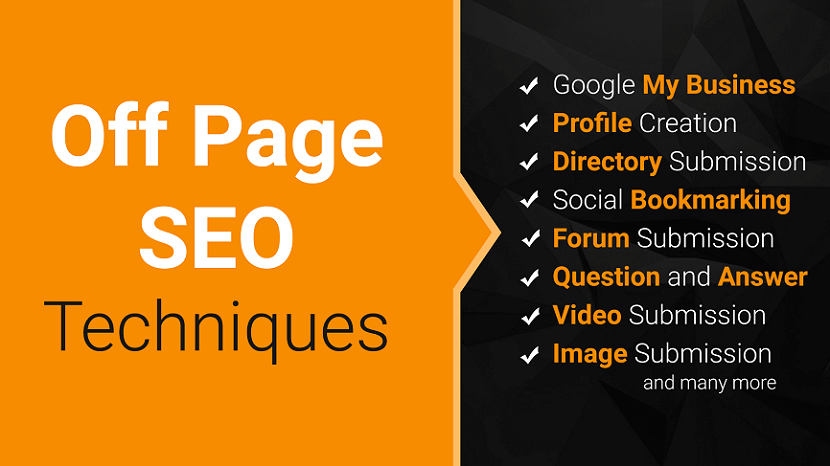
Off Page SEO is one of the essential parts of a successful SEO strategy. We’ll share what it is, how it works, and how to use it to increase your site’s visibility.
If you want your site to rank on Google and increase your brand's organic traffic, you’ll need to look at On Page SEO, Technical SEO and Local SEO also.
But before you starting SEO also learn techniques of SEO ( White Hat SEO, Black Hat SEO, Gray Hat SEO and Negative SEO )
What is Off Page SEO?
Off Page SEO refers to all SEO tactics that do not involve updating or publishing content to your website.
In the past, many used “Off Page SEO” and “Link Building” interchangeably, but in reality, there are many Off Page SEO tactics you can use, including:
- Brand Building
- Citation Building
- Content Marketing
- Social Media, and more
These tactics help both search engines and users better understand your website and increase your site’s authority, trust, and relevance.
Think of it like this:
- Your website=On Page SEO
- Another site or platform=Off Page SEO
Why is Off Page SEO important?
Think about Off Page SEO as building your site’s domain authority. Without this, your site might struggle to outrank websites with higher authority.
Higher authority websites tend to rank better than those with low or no authority because search engines consider them more credible, relevant, and trustworthy.
You want to signal that many people trust, share, and reference your site to search engines. Links are one way to show that, but you can not focus on link building alone. There are many other Off Page SEO Techniques you can use—let’s take a look at a few.
Top 20 Off Page SEO Techniques to increase Ranking and Domain Authority
Below are the tested and proven off page SEO techniques that can be implemented for all the niches to increase the website ranking and domain authority.
- Social Bookmarking
- Directory Submission
- Article Submission
- Classified Submission
- Social Networking
- Forum Submission
- Press Release
- Search Engine Submission
- Video Submission
- Story Submission
- Image Submission
- RSS Feed Submission
- Web 2.0 Submission
- Digital Portfolio Submission
- Blog Commenting
- Blog Submission
- Infographic Submission
- PDF Submission
- Government Backlink
- SEO News
- Wiki Submission
- Ping Submission
- Profile Creation Sites
- Creating Shareable Content
- Influencer Outreach
- Local Citation
- Convert Brand Mention
- Use Google My Business
- Question and Answer
1. Creating Shareable Content
Amazing content is always the KING in search engine optimization. Creating amazing and shareable content is a smart way to generate more and more natural backlinks to our website or blog. Research often and keep your content always fresh and updated.
Here’s what we’ll be talking about:
- Find Out What’s Trending
- Engage With Your Community
- Tie in Pop Culture
- Use Lists
- Write Long-Form Content
- Interviews With Influencers
- Include Images
- Include Social Sharing Buttons
- Write Killer Headlines
- Create Outstanding Content
2. Influencer Outreach
If you have created any kind of share-worthy content, don’t hesitate to reach out to relevant influencers and ask them to share. Tell them to check your blog and ask for linkbacks from their blog. Make sure you get the links from completely relevant domains.
Here are some tips for Influencer Outreach
- Prior to Influencer Outreach, Research Top Candidates
- Establish Connections with Your Potential Influencers
- Contact Them About a Campaign
- Be Clear About Your Expectations
- Make the Partnership Mutually Beneficial
- Create Great Content
- Think Long Term: Nurture Your Relationships
3. Contribute as Guest Author
There are a number of good and quality blogs that are open for guest posts from various authors. Write an amazing research piece and reach them with the content for the guest posts. Don’t focus on the number of links but rather focus only on quality links. Also, don’t keep posting multiple times on the same guest blog site.
How to Attract Guest Authors to Your Site
- Make Sure You are Consistently Producing New and Quality Content
- Create Mutual Social Connections
- Make Yourself Known Amongst That Writer’s Circles
- Have a Clear Set of “Write For Us” Guidelines on Your Site
- Bring Up Any Way You Might be Connected
- Show That You Really Know and Love the Author’s Work
- Offer Metrics About Your Website or Where You Plan to Take it in the Coming Months
- Vet the backlinks
- Create a replacement page
- Do outreach
- Ranking higher for local search queries (maybe)
- Helping people discover your business online
- Structured citations
- Unstructured citations
- Get listed with the data aggregators
- Submit to other core sites
- Submit to popular industry and local sites
- Pursue unstructured citations
- Have a proper description with 250 characters.
- Make sure your primary is available in the first paragraph along with your city name.
- Regularly update the posts or gallery or products or offers.
- Keep watching your reviews and reply to them instantly.
- Upload real photos under proper categories.
- Keep sharing the great content
- Update the site regularly
- Build a backlink for a published article
- Versions of URLs with and without "www"
- URLs with and without "index.html" at the end
- Variants of URLs with "HTTP" and "HTTPS" protocols
- Uppercase and lowercase letters in URLs
- Organization Schema Markup
- Person Market Schema Markup
- Local Business Schema Markup
- Product & Offer Schema Markup
- Breadcrumbs Markup
- Article Schema Markup
- Video Schema Markup
- Event Schema Markup
- Recipe Schema Markup
- Rating/Review Schema Markup
- XML sitemaps
- HTML sitemaps
- XML-Sitemaps - https://www.xml-sitemaps.com
- Small SEO Tools - https://smallseotools.com/xml-sitemap-generator/
- 1xx: Informational : It means the request has been received and the process is continuing.
- 2xx: Success : It means the action was successfully received, understood, and accepted.
- 3xx: Redirection : It means further action must be taken in order to complete the request.
- 4xx: Client Error : It means the request contains incorrect syntax or cannot be fulfilled.
- 5xx: Server Error : It means the server failed to fulfill an apparently valid request.
- PageSpeed Insights - https://pagespeed.web.dev
- GTmetrix - https://gtmetrix.com
- Use a Content Delivery Network (CDN)
- Move your website to a better host
- Optimize the size of images on your website
- Reduce the number of plugins
- Minimize the number of JavaScript and CSS files
- Use website caching
- Implement Gzip Compression
- Database optimization in CMS
- Reduce the use of web fonts
- Detect 404 errors
- Reduce redirects
- Use prefetching techniques
- Serverside redirects
- Client-Side redirects
- Largest Contentful Paint (LCP): measures loading performance. To provide a good user experience, LCP should occur within 2.5 seconds of when the page first starts loading.
- First Input Delay (FID): measures interactivity. To provide a good user experience, pages should have a FID of 100 milliseconds or less.
- Cumulative Layout Shift (CLS): measures visual stability. To provide a good user experience, pages should maintain a CLS of 0.1. or less.
- Help Improve Rankings in Search Engines
- Validation Helps Teach Best Practices
- Improved Website User Experience
- Make Website Browsers Friendly
- Multiple Device Accessibility
- Validation Help for Easy Coding and Maintenance
- Validation as a Debugging Tool
- HTML Validator - https://validator.w3.org
- CSS Validator - https://jigsaw.w3.org/css-validator/
- Verify site ownership.
- Make sure Google can find and read your pages.
- Review mobile usability errors Google found on your site.
- Consider submitting a sitemap to the Search Console.
- Monitor your site's performance.
- Track Online Traffic
- Understand User Behavior
- Offline to Online Tracking
- Data Reports and Customization
- Improve Online Advertising with Marketing Analytics
- Improve Search Engine Optimization and Content Marketing
- Google Analytics Conversion Tracking
- Find your Target Audience
- Google Analytics Cost
- Google Analytics Improves Websites
- Getting Started is Easy
- New Ideas for Business
- eCommerce Performance
- Increase your agility : Efficiently add and update your own website tags to better understand conversions, site analytics, and more.
- Integrate easily : Tag Manager supports and integrates with all Google and third-party tags.
- Put your mind at ease : Error checking, security features, and speedy tag loading ensure that all your tags work.
- Collaborate across your team : Improve collaboration across your business. Features like workspaces, granular access controls, and support for multi-environment testing mean that marketing and IT can work together efficiently.
- Monitor your site’s performance and see what keywords you rank for.
- See how Bing crawls and indexes your site.
- Submit your website / new pages to be crawled.
- Remove any content you do not want to be indexed.
- Disavow links.
- Monitor and resolve potential malware or spam issues.
- Use a strong color for all CTA (call-to-action) buttons
- Place CTAs above the fold
- Use urgency (e.g., time-limited offers) to drive sales
- Always display testimonials
- Use fewer form fields on your forms
- Create and verify a Google My Business page.
- Use Google Posts within your account.
- Encourage your customers to share reviews online.
- Respond authentically to reviews, specifying location. For example, “We appreciate your feedback on [product/service] in [city, state]. We value your input and look forward to working with you again. Thank you from the [full company name] team.”
- Sponsorships or Partnerships
- Guest Blog Posting
- Scholarships
- Meaning of your query.
- Relevance of web pages.
- Quality of content.
- Usability of web pages.
- Context and settings.
- Cost: In the long run, white hat SEO is cheaper than Black Hat SEO, as it is not necessary to repair violations that have been identified and penalized by Google. A typical example is the time-consuming, manual removal of spam links in blog comments or forums.
- Ethics: Entrepreneurs opt for white hat SEO to justify their positioning in the SERPs to their visitors just for ethics reasons.
- Security: Sites optimized with white hat SEO are secure against Google Penalties. Accordingly, the Damocles sword of sales failures occasioned by a penalty is not constantly hung over the website.
- Consistency: The Rankings achieved are usually more stable and, in particular, long-term compared to pages optimized with unfair means, with the probability of penalties.
- No hiding text behind an image.
- No keeping text off-screen using CSS.
- No using a font size of 0.
- No making one little character, like a period, a link.
- You could publish a guest post from someone who includes hidden content.
- Your commenting system could be insufficiently rigorous and, as a result, fail to pick up on hidden content.
- Your website could get hacked, and the hackers could put up hidden content. This is also known as parasite hosting.
- An authorized user could accidentally put up hidden content because they copied and pasted text with CSS styling from a different source.
- Bridge pages.
- Portal pages.
- Jump pages.
- Gateway pages.
- Entry pages.
- Read aloud to visually impaired users by screen readers.
- What gets displayed if an image file cannot be loaded.
- Helpful to search engines trying to understand images.
- Using a 301 redirect to redirect all of the link power to your current domain to improve its authority.
- Going to a site like Wayback Machine, finding archives of the old content, and republishing it on the site to resurrect it back to how it was before the domain expired. This can give you an instantly successful website with targeted traffic.
- Buying a link placement on an existing article that’s indexed in Google.
- Buying a guest post opportunity that includes a link back to your website.
- Trading links with another site owner (i.e. I link to you and you link to me).
- Trading a product or service in exchange for a link on someone’s site.
- To target similar types of search queries without having to write new content. The most common example is with local SEO keywords where multiple pages are created for each local city. Every page has duplicate content except the city name is swapped out for the city being targeted. This strategy will allow the appropriate page to rank for the target phrase while the other pages get suppressed.
- Copying content from another website and posting it on a strong domain can sometimes outrank the original source of the content so the target site can steal the traffic.
- Duplicate content can be used to flood the search engine with multiple copies of the same text in hopes that one of them will stick and rank high for the target keywords.
- By scraping content from other websites and combining it into one page on your site. Article spinning can also be used here to make the content unique and undetectable for plagiarism.
- By using artificial intelligence (AI) and machine learning to automatically write content for your site. AI content creation tools use natural language generation (NLG) to write the content without any human involvement.
- Locating text behind an image.
- Using CSS to position the text off-screen.
- Setting the font size to 0.
- Hacking your website
- Building hundreds or thousands of spammy links to your website
- Copying your content and distributing it all over the internet
- Pointing links to your website using keywords like Viagra, poker online, and many others
- Creating fake social profiles and ruining your reputation online
- Removing the best backlinks your website has
- Using a strong administrator’s password
- Employing two-step authentication when available
- Maintaining an up-to-date website
- Installing security plugins (If you’re a HubSpot user, read about the tools built-in security here)
- Establishing an automatic backup system
- Search: This is the action people take to locate answers to their questions or to find products or services that suit their needs.
- Search Engine: Websites such as Google or Bing where users conduct searches.
- Search Engine Optimization: The strategies implemented to ensure that search engines link these searches to your website.
- Title Tags: Each page should have a unique title that includes the main keywords for the page. The title tag should be concise and informative, accurately reflecting the content of the page.
- Meta Descriptions: Although not a ranking factor itself, a well-crafted meta description can improve the click-through rate from search engine results. It should provide a brief summary of the page’s content and include relevant keywords.
- Headings and Content Formatting: Using headings (H1, H2, H3) to organize content is crucial for readability and SEO. The primary keyword should ideally be included in the H1 tag. Other headings can help structure the content and utilize secondary keyword phrases.
- URL Structure: URLs should be concise, include keywords, and be easy for a human to understand. A well-structured URL gives both users and search engines an idea of what the destination page is about.
- Keyword Optimization: Including relevant keywords in your content helps search engines understand what the page is about. However, keywords should be used naturally and not over-stuffed, as this can lead to penalties.
- Content Quality: The content of a page is crucial to its success. Google has continually emphasized the importance of high-quality, substantive, original content that satisfies the search intent of users.
- Images and Alt Text: Using images can make a page more engaging and informative. Alt text (alternative text) for images is used by screen readers and search engines to understand the content of pictures. It’s also useful for SEO when it includes relevant keywords.
- Mobile-Friendliness: With mobile devices accounting for a significant portion of web traffic, your site needs to be responsive and easy to navigate on smartphones and tablets.
- Page Performance: Websites that load faster provide a better user experience. Google considers page speed as a ranking factor, so optimizing your site’s speed is important.
- Internal Linking: Linking to other pages on your site helps search engines crawl your site more effectively and helps improve rankings for your other pages. It’s also useful for users, as it makes navigation easier.
- Backlinks: The cornerstone of off-page SEO is building backlinks, which are links from other websites to your website. These can be achieved through natural links from external sites that link to yours without any action on your part, manually built links generated through deliberate link-building activities, and self-created links through adding a backlink in an online directory, forum, blog comment signature, or a press release with optimized anchor text.
- Domain Authority: Sites with higher domain authority are seen as more reputable and trustworthy, and links from these sites are more beneficial. Tools like Moz’s Domain Authority and Ahrefs’ Domain Rating help assess this metric.
- Social Media Marketing: While social media links don't directly impact search rankings, social media platforms can amplify the visibility of your content and increase your brand presence. This can lead to more people viewing your content and potentially linking back to it.
- Guest Blogging:Writing articles or posts for other relevant blogs can drive traffic back to your site through backlinks. This not only helps in creating more outreach but also enhances your reputation as an expert in your field.
- Influencer Outreach: Collaborating with influencers to promote your content can lead to natural backlinks, as their followers and other interested parties are likely to link to your content if it is valuable.
- Content Marketing: Publishing high-quality, valuable content is vital not just for on-page SEO but also for off-page tactics. Great content is more likely to be shared and referenced by other websites, blogs, and social media users.
- Forum Participation: Engaging in industry forums can help establish your expertise. By contributing to discussions and providing helpful answers, you can attract interest in your profile and website.
- Local SEO: For businesses with a physical location, off-page SEO includes managing local listings and citations in business directories like Google My Business, Yelp, and others. Accurate and consistent information across these platforms can improve your local search visibility.
- Brand Mentions: Google considers both linked and unlinked mentions of your brand. Getting your name out there through press releases, articles, or other content can influence your site’s search rankings.
- Reviews: Positive reviews, especially on authoritative platforms like Google My Business and Yelp, can enhance your business’s credibility and influence its search rankings.
- Site Speed: Enhancing how quickly your site loads is crucial as it affects user experience and search engine rankings. Techniques include optimizing images, reducing server response times, and leveraging browser caching.
- Mobile-Friendliness: With mobile-first indexing, Google predominantly uses the mobile version of the content for indexing and ranking. A mobile-friendly site is essential, and responsive design is the recommended approach to accommodate all device types and screen sizes.
- Crawlability: Search engines use web crawlers to understand the content of your site. Ensuring that these crawlers can access and interpret your site content without issues is critical. This includes proper use of robots.txt files to guide crawlers, creating and maintaining XML sitemaps, and avoiding deep nesting of pages.
- Security: Implementing HTTPS provides a secure connection by encrypting data between the user and the site, which is a factor Google uses for ranking.
- Structured Data: Using schema markup (structured data) helps search engines understand the content of your site and can enhance how your site appears in SERPs with rich snippets. These can include ratings, prices for products, or event information.
- Indexation: Ensuring that the pages you want are being indexed properly without duplication. Tools like Google Search Console can be used to monitor index status and optimize visibility.
- Canonical URLs: Use canonical tags to tell search engines which version of a page is the master or preferred version to address duplicate content issues.
- 404 Errors and Redirects: Properly managing 404 errors and setting up 301 redirects for pages that have moved permanently helps preserve link equity and improves user experience.
- Site Architecture: A well-organized site structure helps users and search engines find content on your site more easily. This involves a logical hierarchy for your content and ensuring that no important pages are more than a few clicks away from the homepage.
- Hreflang Tags: For sites that have content in multiple languages or regional variants, hreflang tags help search engines understand which version of the content is relevant to users in a specific region or language setting.
- Google My Business (GMB) Optimization: Setting up and optimizing your Google My Business profile is essential. This includes accurate and detailed business information such as your name, address, phone number, and business hours. Regularly updating the profile with posts, offers, and events can also help increase visibility.
- Local Keywords: Utilizing keywords that reflect local searches. This includes city or neighborhood names where the business is located. The content on your website should include these local keywords to improve local search rankings.
- Citations and Local Listings: Ensuring your business is listed on local directories and citation sites such as Yelp, YellowPages, and Bing Places. Consistency in business listings (name, address, and phone number) across these platforms is crucial for local SEO success.
- Reviews and Ratings: Encouraging customers to leave positive reviews on your Google My Business profile and other review sites. Responding to reviews, whether positive or negative, can also improve credibility and attract more local customers.
- Localized Content: Creating content that speaks to local news, events, or activities relevant to your business and area. This helps attract local customers and signals to search engines that your business is actively participating in the local community.
- On-Page SEO for Local Keywords: Besides integrating local keywords into the content, it’s important to optimize the title tags, meta descriptions, and header tags of your website with local SEO in mind.
- Mobile Optimization: With the increase in mobile searches, ensuring your website is mobile-friendly is essential, especially for local SEO, as many local searches are performed on the go.
- Backlinks from Local Sources: Gaining backlinks from well-regarded local sources (like local newspapers, blogs, and business associations) can significantly boost local search rankings.
- Structured Data Markup: Using schema markup to provide search engines with specific information about your local business, such as the type of business, operating hours, and location. This can enhance your search listings with rich snippets that attract more clicks.
- Local Maps Optimization: Ensuring your business appears correctly on map services like Google Maps. Accurate location data and a clear, precise map pin can help customers find your business more easily.
- Keyword Research: Identifying the right keywords that your target audience is using to search for products or services like yours. This research informs the themes and topics of your content, helping ensure it meets the search intent of users.
- Content Quality: Producing high-quality content that is informative, engaging, and provides value to the reader. Search engines favor content that effectively satisfies user intent, keeping users engaged and on your site for longer periods.
- Content Freshness: Regularly updating existing content and adding new content to keep your website dynamic and informative. Fresh content is a signal to search engines that your site is current and relevant.
- Use of Keywords: Integrating targeted keywords naturally within your content, including in the title, headings, body text, and meta descriptions. The key is to use keywords thoughtfully and avoid over-optimization, which can lead to penalties from search engines.
- Content Structure: Organizing content using headings (H1, H2, H3) to make it easier to read and navigate. Proper use of headings helps search engines understand the structure and hierarchy of the content, improving indexing.
- Meta Descriptions and Title Tags: Crafting compelling meta descriptions and title tags that include relevant keywords. These elements can influence click-through rates from search results, drawing more traffic to your site.
- Image SEO: Including images with optimized file names and alt text descriptions can contribute to SEO efforts. Alt text helps search engines understand the image content and can improve accessibility.
- Internal Linking: Using internal links to connect content within your site helps search engines crawl the site more effectively and can keep visitors engaged longer by encouraging them to explore further.
- Content Length: While quality is more important than quantity, longer content can often provide more depth, increase engagement, and improve SEO performance. However, the length should be appropriate to the topic and user expectations.
- Readability and User Engagement: Ensuring the content is readable and engaging for the audience. This includes using simple language, short paragraphs, and visual elements to break up text, which can enhance user experience and retention.
- Responsive Design: Ensuring that your website is responsive, meaning it automatically adjusts to fit the screen size of the device being used. This is important because it improves usability, making it easier for mobile users to read and navigate your site.
- Mobile-First Indexing: Google predominantly uses the mobile version of the content for indexing and ranking since the majority of users now access Google search through mobile devices. This makes it crucial to prioritize the mobile version of your site in your SEO efforts.
- Page Speed: Mobile users often rely on mobile data, which can be slower than wired or WiFi connections, so page speed becomes even more crucial. Optimizing images, minifying code, leveraging browser caching, and reducing redirects can help increase mobile page speed.
- Touchscreen Navigation: Ensuring that your site is easily navigable with a touchscreen. This includes making buttons and links large enough to be clicked easily without zooming and spacing them adequately to prevent accidental clicks.
- User Experience (UX): Providing a good user experience is vital. This includes clear and readable fonts, accessible menus, and avoiding intrusive pop-ups and excessive interstitials that can frustrate users and lead to high bounce rates.
- Local SEO: Since mobile searches are often performed on the go, local SEO becomes even more important. Ensure that your business is listed in local directories, and use local keywords in your SEO strategy.
- Viewport Configuration: Setting the viewport (which controls how a webpage is displayed on a device) correctly ensures that your site can be viewed properly across different devices.
- Content Accessibility: All content on your site should be accessible on mobile devices, which means avoiding software like Flash, which isn’t supported on mobile.
- Mobile-Friendly Test Tools: Utilizing tools like Google's Mobile-Friendly Test can provide insights into how well your site works on mobile devices and highlight areas that need improvement.
- Avoiding Mobile-Specific Errors: These can include unplayable content, faulty redirects, or blocked JavaScript, CSS, and image files. Ensuring that mobile users have access to all necessary resources and content is crucial for good SEO.
- Keyword Research: Conducting detailed keyword research tailored to eCommerce, focusing on product-specific keywords, category-specific keywords, and transactional keywords that indicate a readiness to buy.
- Site Structure: Designing an intuitive site structure that makes it easy for users to navigate and for search engines to crawl. Ideally, a user should be able to reach any product in three clicks or less from the homepage.
- On-Page SEO for Product Pages: Optimizing product pages with high-quality images, detailed and unique descriptions, product-specific metadata, and structured data (such as schema markup for prices, availability, and reviews).
- Optimized Category Pages: These pages should not only include category-specific keywords but also be designed to facilitate user navigation and improve product discoverability.
- Technical SEO: Ensuring that the website loads quickly, is secure (uses HTTPS), and is mobile-friendly, since many users shop on their mobile devices.
- Content Marketing: Creating valuable content that targets potential customers at various stages of the customer journey, from awareness to decision-making, which can include blogs, buying guides, and reviews.
- User Experience (UX): Providing an excellent user experience by having a fast, easy-to-navigate site with minimal friction in the checkout process and clear calls to action.
- Link Building: Acquiring high-quality backlinks from reputable sources to enhance domain authority. This can be achieved through collaborations, influencer marketing, and guest blogging on relevant sites.
- Social Signals: Leveraging social media platforms to boost product visibility and engagement, which indirectly supports SEO efforts by generating traffic and increasing brand recognition.
- Customer Reviews: Encouraging customer reviews, which can boost SEO through fresh, unique content and improve trust and conversion rates.
- Avoiding Duplicate Content: Especially common in eCommerce sites where product descriptions are often repeated across multiple pages or products. Utilizing canonical tags can help manage duplicate content issues.
- Local SEO: For eCommerce businesses with physical stores, integrating local SEO practices by including local keywords, creating a Google My Business profile, and gathering local reviews.
- Relevant Images: Use images that are relevant to the content of the page. Relevant images enhance the user experience and reinforce the textual content for better understanding and retention.
- File Names: Choose descriptive, keyword-rich file names for your images. Instead of naming an image "IMG_123.jpg," use meaningful names like "homemade-chocolate-chip-cookies.jpg" that describe the image and include a target keyword.
- Alt Text: Alt text (alternative text) is used within an HTML code to describe the appearance and function of an image on a page. Alt text helps search engines understand the image content, which is crucial for SEO. It's also vital for accessibility, helping screen readers interpret the image for people with visual impairments.
- Image Compression: Optimize image file sizes to reduce load times without compromising quality. Tools like Adobe Photoshop, TinyPNG, or JPEGmini can reduce file size, enhancing page speed—a factor in Google's ranking algorithms.
- Image Format: Choose the right file format for your images. JPEG is good for most photos due to its balance of quality and file size. PNG is preferable for graphics with fewer than 16 colors or when you need transparency. WebP is a modern format that provides superior compression and quality characteristics compared to JPEG and PNG.
- Responsive Images: Ensure images display well on all devices, especially on mobile. Using responsive image techniques, such as the HTML srcset attribute, allows different image versions to load depending on the user's screen size and device capabilities.
- Structured Data: Using structured data (schema markup) can help to provide search engines with more information about the images and how they relate to other content. For example, if you have a recipe site, using structured data can link images directly to recipes.
- Sitemaps: Include images in your XML sitemaps or create a dedicated image sitemap. This makes it easier for search engines to crawl and index your images, potentially increasing their visibility in image search results.
- Accessibility: Ensure that your images do not obstruct site accessibility. Use CSS styling to position images and make sure they are integrated seamlessly with the design for users on all types of devices.
- SEO-Friendly Image Hosting: Host your images on a server that quickly delivers images to users. Slow-loading images can hurt your SEO and user experience.
- Keyword Research: Just like traditional SEO, video SEO requires targeted keyword research. Identify keywords relevant to your video content that potential viewers are likely to use during their search queries.
- Video Titles and Descriptions: Optimize your video titles and descriptions with relevant keywords. The title should be catchy, informative, and include main keywords. The description should provide a detailed overview of the video content, including long-tail keywords, without keyword stuffing.
- Video Hosting Platform: Decide where to host your video based on your goals. Hosting on your own site can increase traffic to your site and is good for exclusive content. Using popular platforms like YouTube or Vimeo can enhance visibility and reach due to their large built-in audiences and high domain authority.
- Thumbnail Image: A compelling thumbnail can significantly increase click-through rates. The thumbnail should be visually appealing and relevant to the content of the video.
- Video Transcripts: Adding a text transcript of your video content can greatly improve indexability and accessibility. Transcripts act as page text and are beneficial for SEO as they're crawlable by search engines.
- Video Sitemaps: Create a video sitemap and submit it to search engines. A video sitemap includes important metadata about your video content such as the video title, description, play page URL, thumbnail, and video file URL, which helps search engines understand and index your video content more effectively.
- Engagement Metrics: Encourage viewer engagement by asking for likes, comments, and shares. High engagement rates are a positive indicator to search engines regarding the quality of your content.
- Embedding and Sharing Options: Enable embedding and sharing options to increase the likelihood of your video being shared and linked to. More embeds and links can lead to higher rankings in search engines.
- Social Media Promotion: Promote your videos on social media platforms to increase visibility. More shares and traffic can lead to higher rankings both on traditional search engines and within video platforms like YouTube.
- Accessibility Features: Including features like captions and audio descriptions can make your videos more accessible to a wider audience, including those who are deaf or hard of hearing, which can also improve your SEO.
- Loading Time and Mobile Optimization: Ensure your videos load quickly and are optimized for mobile viewing. This affects user experience and can impact search rankings, especially on mobile devices.
- Watch Time: For platforms like YouTube, watch time is a critical ranking factor. Create engaging and valuable content that compels viewers to watch through to the end.
- Quality Content: Creating content that is original, relevant, useful, and well-written. The goal is to provide value to the user, not just to rank well in search engines.
- Keyword Usage: Using keywords naturally and strategically, without overstuffing. This involves placing them where they make the most sense in terms of context and readability.
- Backlinking: Gaining links from reputable and relevant websites. Unlike Black Hat SEO, White Hat SEO focuses on quality over quantity and on getting backlinks through legitimate ways like guest blogging, content marketing, and natural partnerships.
- Mobile Optimization: Ensuring the website is mobile-friendly, considering that a significant amount of searches are done via mobile devices. This includes responsive design and fast loading times.
- Site Architecture: Structuring a website clearly and logically. A well-organized site helps search engines index your content more effectively and improves user experience.
- Meta Information: Proper use of meta titles, descriptions, and tags that accurately describe page content and encourage higher click-through rates.
- User Experience (UX): Focusing on making the site user-friendly, which includes having a clear navigation, engaging design, and accessible content.
- Keyword Stuffing: Overloading webpages with keywords in an unnatural way to manipulate a site's ranking. This often results in a poor user experience.
- Cloaking: Showing different content to search engines than to users. This technique tries to deceive search engines to rank content for particular keywords that are not actually relevant to the user's actual content.
- Doorway Pages: These are low-quality pages that are overloaded with keywords and are designed only to attract search traffic and then redirect visitors to a different webpage.
- Hidden Text and Links: Implementing text or links that are invisible to visitors but visible to search engine crawlers. These are often used to manipulate the relevancy of content in search results.
- Link Farms: Participating in communities where large numbers of pages are created to hyperlink to each other, solely to increase the number of inbound links to a site. This can artificially increase a site's ranking.
- Content Automation: Using software to generate content automatically, often without regard to quality or relevance. This can include scraping content from other sites and publishing it as new.
- Malicious Behavior: Including malware, phishing, or other malicious techniques to redirect or deceive users.
- Article Spinning: Using software to rewrite content so it appears unique, although it's essentially the same content, often with a slight decrease in quality. This is done to avoid duplicate content penalties and create more content faster.
- Link Exchanges: While link building is a legitimate practice, excessive reciprocal links or partner pages exclusively for the sake of cross-linking can be considered manipulative.
- Buying Expired Domains: Some practitioners buy expired domains that have built up authority and either use them to create link networks or redirect the traffic to their primary website.
- Cloaking with a Twist: Slightly altering the technique of cloaking, such as showing search engines a character-level variation of content that isn't exactly what the user sees.
- Dubious Redirects: Redirecting a high-ranking page to another page to transfer the SEO benefits in a way that isn't entirely transparent.
- Paying for Reviews: Encouraging reviews with incentives or paying for them outright, which can sometimes blur the line between genuine user reviews and sponsored content.
- Using Clickbait: Employing sensationalist headlines that aren’t completely aligned with the content on the page to boost click-through rates.
- Link Farms: Creating or purchasing large numbers of spammy links and directing them to a competitor's website in an attempt to trigger a Google penalty for unnatural links.
- Scraping Content: Copying content from a target website and distributing it across the internet. This can dilute the uniqueness of the content and potentially lead to penalties or decreased rankings due to duplicate content issues.
- Creating Fake Social Profiles: Misrepresenting the target company on social media to create a bad reputation or spread false information.
- Forceful Crawling: Causing heavy server loads by intentionally sending very high volumes of automated requests to a website, making it slow or even temporarily inaccessible.
- Removing Backlinks: Contacting websites that link to a competitor’s site and requesting the removal of those links, often by pretending to be the competitor themselves.
- Posting Negative Reviews: Flooding review sites with negative feedback and reviews to harm a business’s reputation and search engine standing.
- Hacking the Site: Gaining unauthorized access to modify or deface the website, insert malicious code, or negatively affect its SEO performance directly.
- Increased Website Traffic: SEO helps to improve the ranking of your website on search engines. Websites that appear on the first page of search engine results tend to get significantly more traffic. This increased visibility means more visitors, which can translate into more sales and leads.
- Cost-Effectiveness: Compared to other forms of online marketing, such as Pay-Per-Click advertising, social media marketing, or purchasing leads for an email marketing program, SEO provides a relatively good return on investment. While PPC may drive more revenue and social media may be more important for your image, organic SEO in many ways remains a bedrock of your online presence.
- Improved User Experience: SEO involves optimizing the user experience of your website. A well-optimized site is more likely to have clear navigation and relevant, engaging content that meets the needs of users. Search engines like Google prioritize websites that provide a good user experience.
- Brand Credibility and Trust: Ranking higher in search results can also improve the credibility of your business. Users tend to trust the first listings in Google as reputable companies; the further back you are in rankings, the more skeptical users might be about your site.
- Higher Conversion Rates: SEO-optimized websites load faster, are easy to read and navigate, and will display properly in almost all types of devices, including mobile and tablets. Websites that are easy to read and navigate are more likely to grab and hold attention from your readers or visitors – i.e., they’re more likely to become your loyal customers, subscribers, and returning visitors.
- Long-Term Marketing Strategy: While the impacts of a good SEO strategy may take time to manifest, they can be long-lasting. With ongoing effort, the results of SEO can be sustained, unlike advertising which stops the moment you stop paying.
- Competitive Advantage: By investing in your SEO strategy, you can move ahead of your competitors in search engine rankings. This can help you gain market share by being more visible and accessible than your competitors.
- Local SEO Increases Engagement, Traffic & Conversions: Local optimization focuses on specific towns, cities, regions, and even states, to establish a viable medium for a brand's messaging on a local level. SEO pros do this by optimizing the brand’s website and its content, including local citations and backlinks, as well as local listings relevant to the location and business sector a brand belongs to.
- Building Customer Trust
- Increasing Sales
- Optimizing your marketing campaigns to trigger positive reactions and boost ROI.
- How much total improvement can this project offer?
- How valuable will this improvement be?
- How complicated or difficult will it be to implement this improvement?
- Hypothesis: Redesigning desktop CTAs would improve the user experience, which in turn would lead to an increase in desktop content lead conversions.
- Primary metric: Form submission CVR
- Secondary metric: Content leads CVR
- Hypothesis: By redesigning forms, the user experience will improve and increase user clarity. In turn, form submission CVR would increase.
- Primary metric: Form submission CVR.
- Use the three formulas to start the CRO conversation.
- Experiment with CRO strategies to discover what works for your business.
- Leverage the PIE framework to help prioritize your strategy.
- Business Operations Management: (BOM) is a multi-faceted discipline that sits at the heart of any successful enterprise. At its core, BOM is concerned with ensuring that a business's day-to-day activities run smoothly and efficiently, driving both productivity and profitability.
- Definition and Objectives: BOM refers to the administration of business practices to optimize efficiency within an organization. Its primary objective is to transform resources, such as labor and raw materials, into goods and services as efficiently as possible to maximize profit.
- Process Management: This focuses on improving both production and business processes by analyzing, redesigning, and streamlining work flow. It ensures that business activities are as efficient and effective as possible.
- Supply Chain Management: This entails managing and overseeing the entire network of processes involved in production and distribution. It aims to reduce overhead, streamline operations, and expedite production flow.
- Quality Control: A systematic approach to ensuring products or services meet set quality standards. This can involve routine testing, process evaluations, and feedback mechanisms.
- Inventory Management: A balancing act of keeping enough stock on hand to meet demand without overstocking which ties up resources. It’s crucial for ensuring products are delivered in a timely manner and resources are allocated efficiently.
- Driving Efficiency and Productivity: At its essence, BOM strives for efficiency – doing tasks right – and effectiveness – doing the right tasks. By continually refining processes, optimizing the supply chain, ensuring quality, and managing inventory proficiently, BOM not only reduces wastage and costs but also positions a business for sustainable growth and success.
- High-Quality Images and Descriptions : Invest in professional product images and write compelling, unique product descriptions. Detailed and informative content not only helps your potential customers but also appeals to search engines.
- User-Friendly URLs: Optimize your URLs with the product name and relevant keywords. This practice not only improves SEO but also makes it easier for users to navigate your site.
- Mobile Optimization : In a mobile-first world, your site must be responsive and mobile-friendly. Google rewards mobile-optimized sites with higher rankings, and in competitive markets, every advantage counts.
- Customer Reviews: Encourage and showcase customer reviews on your product pages. Not only do reviews instill trust, but they also provide fresh, user-generated content that search engines love.
- Blog Posts: Develop a blog section on your e-commerce site where you can publish relevant articles, guides, and how-tos. These not only drive organic traffic but also establish your site as an authority in your niche.
- Video Content: Don't neglect the power of video. Craft product demonstrations, reviews, and tutorials. Google often displays videos in search results, giving you an edge over text-only competitors.
- Infographics: Visual content, like infographics, is highly shareable and tends to generate backlinks. Use them to convey complex information in an easily digestible format.
- Guest Posting: Author high-quality guest posts on authoritative industry websites to earn backlinks. This not only boosts your site's authority but also broadens your reach.
- Influencer Collaborations: Partner with influencers in your niche for product reviews or mentions. Their endorsement can significantly impact your SEO efforts.
- Broken Link Building: Identify broken links on reputable websites and offer your content as a replacement. This approach can result in valuable, high-authority backlinks.
- Site Speed: Optimize your site's speed to reduce bounce rates and improve user experience.
- Schema Markup: Implement schema markup to enhance the appearance of your site's search results, increasing click-through rates.
- XML Sitemaps: Create XML sitemaps to guide search engines through your site efficiently, ensuring all pages are indexed.
- Keyword Research: Keyword research involves identifying the words and phrases that potential customers use when searching for products or services. his is the foundation of SEO, as it helps you tailor your content to match user intent.
- On-Page SEO: On-page SEO focuses on optimizing the content and structure of your website.
- Optimizing Website Content: Creating high-quality, relevant content is key. Use keywords strategically, but avoid keyword stuffing. Your content should provide value and answer the user's questions.
- Meta Tags and Descriptions: Meta tags, including titles and descriptions, play a significant role in SEO. They provide a brief summary of your page's content and should entice users to click.
- Image Optimization: Optimize images by using descriptive filenames, alt tags, and compressing files for faster loading times.
- URL Structure: A clear and organized URL structure not only helps search engines but also improves user experience.
- Off-Page SEO: Off-page SEO involves factors that impact your site's authority and reputation beyond your website.
- Backlinks and Their Significance: Backlinks, or links from other websites to yours, are a strong signal of your site's authority. Acquiring high-quality backlinks should be a priority.
- Guest Posting: Writing guest posts on authoritative websites within your niche can help establish your brand's authority and drive traffic back to your site.
- Social Media Presence: Active and engaging social media profiles can boost your online presence and help with SEO indirectly.
- Technical SEO: Technical SEO focuses on optimizing the technical aspects of your website.
- Site Speed and Mobile-Friendliness: Faster-loading sites rank higher. Ensure your website is mobile-responsive for a better user experience.
- XML Sitemaps: XML sitemaps help search engines understand your site's structure and index it more efficiently.
- Structured Data Markup: Structured data can improve how search engines display information about your site in SERPs.
- Local SEO: For startups with a physical presence, local SEO is vital.
- Importance for Startups: Local SEO helps potential customers in your area find you quickly.
- Google My Business: Claiming and optimizing your Google My Business profile can enhance local search results.
- Content Creation and Marketing: Quality content is the backbone of SEO.
- High-Quality, Relevant Content: Content should be informative, engaging, and tailored to your target audience.
- Blogging and Content Marketing: Regular blogging and content promotion can attract more visitors to your site.
- Video Content: Video content is becoming increasingly important for SEO. Consider incorporating video into your strategy.
- Monitoring and Analytics: Understanding how your SEO efforts are performing is crucial.
- Google Analytics: Use Google Analytics to track site traffic, user behavior, and more.
- Tracking SEO Performance: Monitor your keyword rankings, backlinks, and other SEO metrics.
- SEO Tools for Startups: Startups often have limited budgets. Fortunately, there are budget-friendly SEO tools available.
- Building an SEO Strategy: A well-defined strategy is the cornerstone of successful SEO.
- Setting Goals: Identify clear and achievable goals for your SEO efforts.
- Creating a Content Calendar: Plan your content in advance to maintain consistency.
- Competitive Analysis: Analyze your competitors to identify opportunities and threats.
- Common SEO Mistakes to Avoid: Mistakes can hinder your SEO progress.
- Keyword Stuffing: Overloading your content with keywords can have a negative impact on rankings.
- Neglecting Mobile Optimization: A poor mobile experience can drive away users and harm your SEO.
- Ignoring Local SEO: If you have a physical location, local SEO is essential.
- Staying Updated with Algorithm Changes: Search engine algorithms are constantly evolving.
- Google Updates and Their Impact: Stay informed about Google's algorithm updates and adapt your strategy as needed.
- The Role of User Experience: A seamless user experience is a ranking factor.
- Site Navigation and Usability: Intuitive navigation and user-friendly design improve the user experience.
- Reducing Bounce Rates: Engage visitors to reduce bounce rates and improve your SEO.
- An SEO checklist serves as a comprehensive blueprint, outlining the essential steps required to enhance your online presence.
- It encapsulates a systematic approach, ensuring that no crucial aspect of optimization is overlooked.
- By adhering to this structured checklist, you create a roadmap for success, reducing the chances of missing key optimization opportunities.
- Time is of the essence in the fast-paced digital realm. An SEO checklist streamlines your optimization efforts, providing a clear path to follow.
- This not only saves time but also allows you to channel your energy and resources more effectively.
- Rather than navigating through a myriad of tasks haphazardly, you can focus on strategic actions that contribute significantly to your brand's marketing goals.
- Building and executing a successful SEO strategy requires a disciplined and process-oriented approach.
- An SEO checklist instils order into the optimization process, emphasising the importance of following a set sequence of tasks.
- By adhering to a structured process, you can systematically address key elements, from keyword research to on-page optimization, ultimately working towards an improved ranking in SERP.
- SEO is more than a checklist; it's a smart work strategy that propels your digital presence ahead of competitors.
- By understanding search engine algorithms, staying updated on industry trends, and employing effective optimization techniques, you gain a competitive edge.
- Smart SEO practices enable your brand to be visible to potential customers when they actively search for related products or services.
- One of the fundamental aspects of SEO is content optimization.
- Beyond just keywords, SEO encourages the creation of content that adds meaningful information for customers.
- This not only enhances the user experience but also aligns with search engine algorithms that prioritise valuable, relevant content.
- SEO isn't confined to your website alone; it extends its influence into your advertising endeavours.
- By aligning your ad campaigns with high-ranking keywords, you ensure that your promotional efforts resonate with your target audience.
- This synergy between SEO and advertising creates a more cohesive and effective digital marketing strategy.
- Speed is a competitive advantage in the hectic digital world. By simplifying various aspects of your internet presence, SEO speeds up procedures.
- Your audience will encounter your digital assets more quickly and easily if you have an optimised SEO plan in place.
- This includes content indexing and website loading speeds.
- SEO isn't just about attracting any traffic; it's about attracting the right traffic.
- By targeting specific keywords and optimising content, SEO directs quality traffic to your website—users genuinely interested in what you have to offer.
- Compared to traditional advertising, SEO is a cost-effective strategy with a high return on investment.
- It focuses on organic traffic, reducing the reliance on paid methods and ensuring a sustainable and economical approach to digital marketing.
- Search engine algorithms are ever-evolving, and SEO is the compass that guides you through these changes.
- Staying updated and adapting your strategies to align with evolving algorithms ensures that your digital presence remains resilient.
- SEO is not a shot in the dark; it's a data-driven process. By leveraging analytics and insights, SEO empowers you to make informed decisions.
- This data-driven approach ensures that every optimization effort is backed by measurable results.
- Without an SEO checklist, your website's performance in search engine rankings becomes a mystery.
- The absence of a systematic approach to optimization means crucial metrics are not monitored, making it challenging to track your site's standing in the competitive realm of search engine results.
- This lack of visibility can result in missed opportunities for improvement and growth.
- Rankings on search engines are dynamic, influenced by various factors such as algorithm updates, competitor activities, and industry trends.
- Without a checklist, you lack a structured plan to adapt and respond to these changes effectively.
- This leaves you unable to chase rankings strategically, making it difficult to optimize your content and website for improved visibility and relevance.
- Without a proactive SEO strategy, businesses find themselves grappling with stagnant income streams as their online presence fails to adapt to evolving search engine algorithms and user behaviors.
- A lack of visibility on search engine results pages (SERPs) directly hinders the potential for customer acquisition, leading to a plateau in revenue growth.
- A staggering statistic that underscores the importance of SEO in driving organic traffic.
- Without a well-optimized website, businesses risk falling into the vast majority of pages that receive little to no visibility.
- This lack of visibility directly translates to missed opportunities for customer acquisition and brand exposure.
- The majority of users are inclined to explore options presented on the first page of search results.
- Without effective SEO practices, businesses find themselves relegated to the less-visible pages, significantly reducing the chances of attracting organic traffic.
- This limitation in visibility can prove detrimental to brand discovery and customer engagement.
- Paid advertising alone is insufficient for sustained online success.
- Organic results, driven by SEO efforts, command the attention of the majority of users.
- Businesses without a solid SEO foundation miss out on the opportunity to capture the trust and engagement that organic results often enjoy.
- For businesses relying on local customers, local SEO is indispensable.
- Without optimizing for local searches, enterprises risk losing a substantial portion of potential foot traffic.
- This statistic emphasizes the real-world impact of SEO on driving physical store visits and conversions.
- Optimize Image File Names: Use descriptive filenames that include relevant keywords related to the image content. For example, instead of "IMG_1234.jpg," use "red-rose-bouquet.jpg."
- Utilize Alt Text: Add concise and descriptive alt text to describe the image content accurately. Alt text helps search engines understand the context of images and improves accessibility for users with disabilities.
- Compress Images: Reduce image file sizes by compressing them without compromising quality. Smaller file sizes improve page loading speed, which is crucial for both user experience and SEO.
- Choose the Right Image Format: Use appropriate image formats such as JPEG, PNG, or WebP based on the content and purpose of the image. WebP offers better compression and quality compared to JPEG and PNG.
- Optimize Image Size: Resize images to match the dimensions required on your website. Avoid using oversized images that slow down page loading times.
- Implement Responsive Images: Use responsive design techniques to ensure images adapt to different screen sizes and devices, providing an optimal viewing experience for users on various devices.
- Include Captions and Descriptions: Add captions and descriptive text near images to provide additional context and improve user engagement. Search engines may also use this information to understand the image content better.
- Utilize Structured Data Markup: Implement schema markup for images to provide search engines with more information about the image, such as the subject, location, or author. This helps search engines display rich snippets in search results.
- Image Sitemap: Create an image sitemap and submit it to search engines to ensure all images on your website are indexed properly.
- Optimize Thumbnail Images: If your website uses thumbnail images, ensure they are optimized for both SEO and user experience. Use descriptive filenames and alt text for thumbnails as well.
- Keyword Research: Identify relevant keywords related to your video content using tools like Google Keyword Planner, SEMrush, or Ahrefs. Use these keywords strategically in your video titles, descriptions, and tags.
- Optimize Video Titles and Descriptions: Craft compelling titles that accurately reflect the content of your video and include primary keywords. Write detailed and keyword-rich descriptions that provide context and encourage viewers to watch.
- Create Engaging Thumbnails: Design visually appealing thumbnails that accurately represent your video's content and entice viewers to click. Test different thumbnail designs to see which ones perform best.
- Transcriptions and Closed Captions: Provide transcriptions or closed captions for your videos to improve accessibility and make your content more searchable. Search engines can crawl the text within your videos, enhancing their visibility in search results.
- Optimize Video Metadata: Use relevant tags and categories to categorize your videos appropriately. This helps search engines understand the content of your videos and improves their chances of ranking for relevant search queries.
- Improve Video Loading Speed: Optimize your videos for faster loading times to enhance user experience and reduce bounce rates. Compress video files, leverage browser caching, and utilize content delivery networks (CDNs) to improve performance.
- Promote Video Across Multiple Channels: Share your videos on social media platforms, embed them on your website or blog, and include them in email newsletters to reach a wider audience and drive traffic back to your video content.
- Encourage User Engagement: Encourage viewers to like, comment, share, and subscribe to your channel. Engaging with your audience signals to search engines that your content is valuable and can improve its ranking in search results.
- Monitor and Analyze Performance: Use analytics tools like YouTube Analytics or Google Analytics to track the performance of your videos. Monitor metrics such as views, watch time, audience retention, and conversion rates to identify areas for improvement and refine your Video SEO strategy.
- In-depth blog posts
- Informative infographics
- Original research and studies
- Engaging videos and podcasts
- Press releases for newsworthy events
- Expert commentary on industry trends
- Participation in interviews or podcasts
- Industry glossaries
- Calculators or interactive tools
- Comprehensive guides or whitepapers
- Natural Link Acquisition: White hat link building focuses on earning links naturally instead of artificially creating them. This organic approach aligns with Google’s guidelines and reduces the risk of penalties.
- Relevance and Context: Ethical link building emphasizes obtaining links from relevant sources within your industry or niche. This contextual relevance is a key factor in Google's assessment of link quality.
- Diversity in Link Profile: White hat techniques naturally result in a diverse link profile, including various types of links from different sources. This diversity is a hallmark of a healthy and natural backlink profile.
- Quality Over Quantity: Instead of focusing on amassing a large number of low-quality links, white hat link building prioritizes acquiring fewer, high-quality links from authoritative sources. This approach is much more valuable in Google's eyes.
- Identifying and disavowing toxic links
- Analyzing the overall quality of your backlink profile
- Identifying opportunities for improvement
- Ahrefs
- SEMrush
- Moz Pro
- Google Search Console
- Following reputable SEO news sources
- Participating in industry forums and discussions
- Attending SEO conferences and webinars
- Time and Resource Constraints: Requires significant time and resources to execute properly
- Measuring ROI: Difficult to accurately measure the return on investment of link-building efforts
- Scaling Efforts: Challenging to scale white hat link building as a website grows larger
- White hat link building focuses on creating valuable content and building genuine relationships.
- Ethical link-building strategies align with Google's guidelines and reduce the risk of penalties.
- Quality and relevance of backlinks are more important than quantity.
- Regular link audits and monitoring are essential for maintaining a healthy link profile.
- White hat techniques may take longer but offer sustainable, long-term SEO benefits.
- Original research and data
- Comprehensive guides or tutorials
- Infographics and visual content
- Expert interviews or roundups
- Thought leadership pieces on industry trends
- Customer Convenience: Most customers turn to search engines for quick, location-based solutions. Without proper optimization, your competitors will rank higher, leaving you out of the equation.
- Cost-Effective Lead Generation: SEO creates a steady stream of organic traffic, reducing reliance on paid ads.
- Credibility and Trust: A strong search ranking signals to potential clients that your business is reputable and trustworthy.
- “Emergency AC repair [city]” during summer.
- “Furnace tune-up before winter” in colder months.
- “Energy-efficient heating systems installation.”
- “How to reduce energy bills with smart HVAC.”
- The most searched HVAC services in your area.
- Times of the year when website traffic peaks.
- Pages or blog posts that are generating the most conversions.
- This data-driven approach ensures that your SEO plan evolves alongside your business.
- Specialized Expertise: SEO agencies bring knowledge of algorithms, trends, and best practices to the table.
- Time Savings: Let professionals focus on growing your online presence while you concentrate on your business.
- Custom Solutions: A good agency will craft a strategy specifically for your HVAC business, taking your goals and audience into account.
- Educational Resources: Create downloadable guides or eBooks about HVAC maintenance to appeal to a national audience.
- Partnerships with Industry Influencers: Collaborate with home improvement or energy-efficiency bloggers to expand your reach.
- Content Diversification: Use videos, infographics, and webinars to address common HVAC concerns and attract a wider audience.
- Google Search Console : This is probably the SEO tool almost every SEO analyst likes to use. It costs nothing, and you can get insights into how Google works. It comes with index coverage and mobile optimization features, alongside error tracking. The reports indicate which pages have scopes for improvement.
- Ubersuggest : This SEO tool has both paid and free versions, so you have some flexibility. Its significant features include backlink tracking, competitive analysis, and detailed keyword research. The commercial version includes enhanced keyword suggestions, metrics, and site audit tools.
- SEMrush : Another commercial SEO tool, SEMrush has a huge user base and a great feature list. This vast SEO platform offers all the features for site audit, competitor insights, backlink analysis, and keyword research. It is also ideal for keyword research. You can use its content optimization features, including detailed report generation.
- Moz Pro : A big name in SEO- it offers plenty of useful features for digital marketers and SEO experts. You get features for detailed backlink analysis and keyword research. Industry veterans also use it for site audits and on-page optimization.
- Ahrefs : This tool does not have a free version, but SEO experts swear by its efficiency. Its backlink analysis is great, and you can count on its keyword research features, too. Ahrefs also packs useful site audit tools and competitive research. This fits the bill for content marketers and SEO professionals seeking accurate data and in-depth SEO analysis.
- AnswerThePublic : Are you focusing on keyword analysis to develop or alter SEO strategy? Try this free tool and get valuable insights on keywords. The paid version packs in more features, naturally. It is better suited for content marketers.
- Yoast SEO : WordPress is unquestionably popular for website development. Yoast SEO is among the most popular WP plug-ins. It is great for improving on-page SEO, and you will love the included tools. The premium version offers features like internal linking suggestions.
- Others : Of course, there are many other useful SEO tools you can try. Screaming Frog and SpyFu deserve special mention.
- Surfer SEO : SEO professionals seeking on-page optimization often choose this paid tool. It helps you analyze SERPs and offers actionable recommendations, which help a lot in content optimization. Try this when you want to improve ranking for specific web pages.
- Schedule posts at peak times;
- Predict which video types will perform best;
- Monitor sentiment analysis in real time.
- Share your brand’s mission;
- Showcase eco-friendly initiatives;
- Highlight community involvement.
- Relevance: Links come from websites or content closely related to your industry or topic.
- Authority: The linking sites have a strong reputation and established credibility.
- Transparency: There's no hidden agenda or undisclosed paid exchanges behind the link.
- Value-driven Content: The link is placed within useful, informative, or entertaining content that genuinely benefits readers.
- Create Outstanding Content: Blogs, research studies, infographics, podcasts—producing valuable content naturally attracts backlinks from people who find it useful.
- Build Relationships: Engage with influencers, journalists, bloggers, and communities in your niche. Genuine relationships often lead to organic backlink opportunities.
- Pursue Guest Posting: Pitching high-quality guest articles to reputable sites in your field is an effective way to earn authoritative links.
- Fix Broken Links: Identify broken links on reputable sites and suggest your relevant content as a replacement. It's helpful for both parties.
- Leverage PR Efforts: Well-crafted press releases, brand stories, and newsworthy events can attract media coverage and valuable backlinks.
4. Broken Link Building
Broken link building is a tactic that takes advantage of broken pages on the web. It involves finding a dead page and asking linkers to swap the links to a working page on your site. The idea is that they’ll do this as they don’t want to send visitors to a dead resource.
Broken link building is a four-step process.
- cFind broken pages with backlinks
5. Local Citation
A local citation is any mention of your business’s name, address, and phone number online. Many SEOs believe they’re a key ranking factor for local SEO.
Citations appear in lots of different places: business directories, social networks—anywhere someone might be looking for information about local businesses.
Creating the profiles from top-rated local citation websites like Google My Business, Yelp, G2, Capterra, and Crunchbase and getting the backlinks is the easiest off page SEO technique. Make sure you keep updating these profiles with the latest information about your brand. Try adding the services, images, and videos about your business.
Citations are useful for two main things:
Two types of citations are there
How to build a citation?
6. Convert Brand Mention
There are a lot of tools that can help you to find the unlinked brand mentions. Brand mention means other bloggers talk about your brand name on their website but without the reference link to your website. If you find any such brand mention, that is actually an opportunity for you. You can immediately connect with that brand mention author, say thanks for mentioning your brand and subtly ask for the clickable link.
7. Use Google My Business
Google My Business is another Google product for free. Optimize this platform for the best local SEO ranking. There are a number of places where you can smartly optimize the content and links; from that, we can generate a decent number of social traffic and brand awareness.
Best Tips for Google My Business
8. Strong Internal Linking
Content strategy is a must-have off page SEO technique this year to increase the ranking of the website. Content is nothing but adding the most important articles and news on your website and adding the proper citation links. This type of content strategy can give you an amazing opportunity to have optimized internal linking. Remember proper interlinking strategy will help you to increase the indexing rate of your website. Increasing the crawl rate and indexing rate will directly help you to increase the ranking of your new blogs and website pages
9. Social Media Engagement
A major Off Page SEO technique is social media engagement. If you want to make your business, website or blog popular, engage with people on multiple social media platforms. Social media presence will help grow your business and also help you get more backlinks.
10. Social Bookmarking Sites
Social bookmarking sites are one of the best platforms to promote your website. When you bookmark your webpage or blog post on popular social bookmarking websites, you gain high traffic to your webpage or blog.
11. Forum Submission
Participate in search forums which are related to your website and business and make a connection with that community. Reply to threads, answer people’s questions and give your suggestions and advice. Make use of “Do-Follow” forums.
12. Blog Directory Submission
Directory Submission is constantly working to build quality backlinks. Choose an effective directory and select a proper category. It takes quite some time to deliver good results, but these results stand out over a longer time period.
13. Article Submission
Submit your articles in a high PR article submission directory. You can also give links to your website. Make sure your content is unique and of high quality. Low-quality content and content that has more keyword stuffing might get rejected. Choose the correct category and give a good title to your content.
14. Question and Answer
One of the best ways you can get high traffic is from question and answer websites. Join high PR question and answer sites and search for questions related to your business, blog or website and give clear answers to these questions. Give a link to your website which will help in bringing you more visibility.
15. Video Submission
If you want to make your videos popular, head to popular video submission sites. Give a proper title, description, tags and reference links. It is one of the more popular ways to get quality backlinks because all video submission websites have high PR.
16. Image Submission
Share your photos on popular image submission websites. Before submitting your images please optimize them with the correct URL and title tag. Before submitting your images, check if they have a proper title, description and tags.
17. Infographics Submission
Make creative infographics. These days, infographics are getting popular on the internet. Submit your infographics on infographics submission websites and give reference links to your webpage or blog. The image sizes differ with different websites.
18. Document Sharing
Create attractive documents relating to your business or blog. The documents should have unique content and should be in either pdf or ppt formats. Submit these documents to the document sharing websites.
19. Press Release
A press release is a document that announces a newsworthy story about your brand that the media might want to cover and provides all of the pertinent information a reporter or editor would need. Some outlets will share your news based solely on the press release.
20. Web2.0 Submission
Above all, Web2.0 is just another technique where we can create subdomains in high domain authority websites. For example, medium.com, tumbler, blogger, wordpress etc.,
Best Tips for web2.0:
FAQs - Off Page SEO
1. What is Off Page SEO?
2. Why do you need Off Page SEO?
3. What is the most important part of Off Site SEO?
Final Thoughts
Off Page SEO has its own importance, but don’t forget about the On Page SEO, Technical SEO and Local SEO. No matter how strong your Off Page SEO is, without proper On Page SEO you may not get a higher ranking in SERPs. You need to have a fast loading website, and SEO optimized hosting can help you to achieve that.
And, the list does not end here! There are many more areas to explore by yourself. Keep one thing in mind: the more high authority websites you have referring to you and talking about you, the more chance you have to rank higher.
If you found this article helpful, we encourage you to share it on your social media platforms—because sharing is caring! For more information about article submissions on our website, feel free to reach out to us via email.
Send an emailWritten by RGB Web Tech
Latest Technology Trends
Latest technology trends shaping the future, including AI advancements, blockchain innovation, 5G connectivity, IoT integration, and sustainable tech solutions. Explore breakthroughs in quantum computing, cybersecurity, augmented reality, and edge computing. Stay ahead with insights into transformative technologies driving innovation across industries and revolutionizing how we live, work, and connect.
What is Technical SEO? Best Practices and a Checklist
Last updated on January 19, 2025 by RGB Web Tech
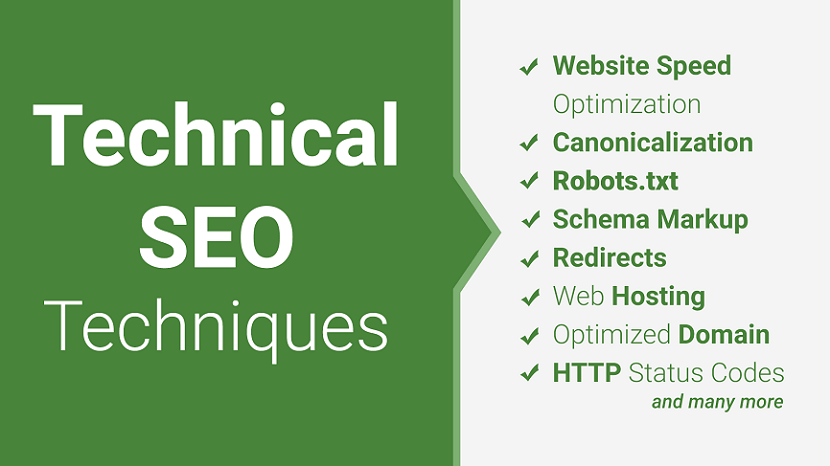
Technical SEO refers to the process of optimizing your website for the crawling and indexing phase. With technical SEO, you can help search engines access, crawl, interpret and index your website without any problems.
It is called “technical” because it has nothing to do with the actual content of the website or with website promotion. The main goal of technical SEO is to optimize the infrastructure of a website.
If you want your site to rank on Google and increase your brand's organic traffic, you’ll need to look at On Page SEO, Off Page SEO and Local SEO also.
But before you starting SEO also learn techniques of SEO ( White Hat SEO, Black Hat SEO, Gray Hat SEO and Negative SEO )
To understand what is the true meaning of technical SEO, let’s start with some basic terminology.
1. Doctype
The HTML document type declaration, also known as DOCTYPE, is the first line of code required in every HTML or XHTML document. The DOCTYPE declaration is an instruction to the web browser about what version of HTML the page is written in. This ensures that the web page is parsed the same way by different web browsers.
In HTML 4.01, the DOCTYPE declaration refers to a document type definition (DTD). A DTD defines the structure and the legal elements of an XML document. Because HTML 4.01 was based on the Standard Generalized Markup Language (SGML), referring to a DTD in the DOCTYPE declaration was necessary.
Additionally, doctypes for HTML 4.01 required the declaration of either strict, transitional, or frameset DTD, each with a different use case as outlined below.
Strict DTD: Used for web pages that exclude attributes and elements that W3C expects to phase out as CSS support grows
Transitional DTD: Used for web pages that include attributes and elements that W3C expects to phase out as CSS support grows
Frameset DTD: Used for web pages with frames
In contrast, the declaration of HTML5 DOCTYPE is much simpler: it no longer requires a reference to DTDs as it is no longer based on SGML. See the examples below for a comparison between HTML 4.01 and HTML5 DOCTYPEs.
Examples:
Doctype syntax for HTML5:
Doctype syntax for strict HTML 4.01:
Doctype syntax for transitional HTML 4.01:
Doctype syntax for frameset HTML 4.01:
2. Canonicalization
A canonical tag is a way of telling search engines that a specific URL represents the master copy of a page. Using the canonical tag prevents problems caused by identical or "duplicate" content appearing on multiple URLs. Practically speaking, the canonical tag tells search engines which version of a URL you want to appear in search results.
Canonicalization Examples
3. Robots.txt
Robots.txt is a text file webmasters create to instruct web robots (typically search engine robots) how to crawl pages on their website. The robots.txt file is part of the the robots exclusion protocol (REP), a group of web standards that regulate how robots crawl the web, access and index content, and serve that content up to users. The REP also includes directives like meta robots, as well as page-, subdirectory-, or site-wide instructions for how search engines should treat links (such as “follow” or “nofollow”).
In practice, robots.txt files indicate whether certain user agents (web-crawling software) can or cannot crawl parts of a website. These crawl instructions are specified by “disallowing” or “allowing” the behavior of certain (or all) user agents.
Basic format:
4. Schema Markup
Schema markup is code that helps search engines to understand your content and better represent it in the search results.
Schema markup powers rich snippets, which often have higher clickthrough rates than ‘regular’ search results. That means more traffic to your site.
However, the primary function of the markup is to help search engines better understand your content.
It’s no coincidence that schema.org, the community behind the markup, was created a year before Google’s Knowledge Graph—a knowledge base of entities and the relationships between them—came to life.
And you guessed it, one of the primary sources for this data is the schema markup.
What are the types of Schema Markups?
There are hundreds of different markup types because there are so many different questions people turn to search engines to answer. But here are the 10 most common schema markups that are used.
5. Sitemaps Updates (XML, Text, HTML)
A sitemap helps search engines discover URLs on your site, but it doesn't guarantee that all the items in your sitemap will be crawled and indexed. However, in most cases, your site will benefit from having a sitemap.
It is also essential to know there are two different types of sitemaps.
You can Generator Sitemaps for your website here
6. HTTP Status Codes
The Status-Code element in a server response, is a 3-digit integer where the first digit of the Status-Code defines the class of response and the last two digits do not have any categorization role. There are 5 values for the first digit:
7. Website Speed Optimization
The term page speed essentially refers to the length of time at which web pages or media content is downloaded from website hosting servers and displayed onto the requesting web browser. Page load time is the duration between clicking the link and displaying the entire content from the web page on the requesting browser.
You can test your website here
Once you have tested the speed of your website, you can start optimizing it. There are a lot of different ways to make your website work faster and we created the list of the most effective ones.
8. Web Hosting
Web hosting is an online service that allows you to publish your website files onto the internet. So, anyone who has access to the internet has access to your website. In practice, it usually refers to the service you get from a web hosting provider like Bluehost.com
9. Optimized Domain
An SEO-optimized domain name is a domain name that introduces your website and tells search engines and users what your website is about, or about the type of products and services it offers, etc. Such domains are more likely to stand out in the search result listings and to get clicked. So, a right domain name helps you target your audience and improve your search engine rankings. You can choose a branding domain or a keyword domain.
10. Redirects
Every page on the web has an address, a URL, which stands for ‘Uniform Resource Locator’. Sometimes, content moves from one URL to another URL. That’s when you need a redirect. A redirect automatically makes a browser go from one URL to another URL.
Types of redirects
11. Core Web Vitals
Core Web Vitals are the subset of Web Vitals that apply to all web pages, should be measured by all site owners, and will be surfaced across all Google tools. Each of the Core Web Vitals represents a distinct facet of the user experience, is measurable in the field, and reflects the real-world experience of a critical user-centric outcome.
The metrics that make up Core Web Vitals will evolve over time. The current set for 2020 focuses on three aspects of the user experience—loading, interactivity, and visual stability—and includes the following metrics (and their respective thresholds):
12. W3C Validation
W3C validation is the process of checking a website's code to determine if it follows the formatting standards. If you fail to validate your website's pages based on W3C standards, your website will most likely suffer from errors or poor traffic owing to poor formatting and readability.
Why Validate a Site on W3C?
How Do You Validate Your Code?
13. Google Search Console
Search Console is a tool from Google that can help anyone with a website to understand how they are performing on Google Search, and what they can do to improve their appearance on search to bring more relevant traffic to their websites.
Search Console provides information on how Google crawls, indexes, and serves websites. This can help website owners to monitor and optimize Search performance.
There is no need to log in to the tool every day. If new issues are found by Google on your site, you'll receive an email from Search Console alerting you. But you might want to check your account around once every month, or when you make changes to the site's content, to make sure the data is stable. Learn more about managing your site with Search Console.
To get started, follow these steps:
14. Google Analytics
Google Analytics is a website traffic analysis application that provides real-time statistics and analysis of user interaction with the website. Google analytics enables website owners to analyze their visitors, with the objective of interpreting and optimizing website’s performance. Google analytics can track all forms of digital media and refer to upstream web destinations, banner and contextual advertisements, e-mail and integrate with other Google products.
Google Analytics Benefits
15. Google Tag Manager
Manage all your website tags without editing code. Google Tag Manager delivers simple, reliable, easily integrated tag management solutions for free.
How tag management solutions can help.
16. Bing Search Console
Bing Webmaster Tools (Bing WMT) is a free Microsoft service that allows webmasters to add their sites to the Bing crawler so they show up in the search engine.
It also helps to monitor and maintain a site’s presence. Bing Webmaster Tools is to the Bing search engine, what Google Search Console is to Google.
How is the search console helpful?
17. Yandex Search Console
Yandex webmaster tools is a free web service provided by Yandex for webmasters to monitor their site’s performance in the Yandex search engine.
You can use it to upload a sitemap, see how much traffic you are getting, get a list of indexed pages, see crawling or indexing errors, site speed problems, etc.
It serves a similar purpose as Google Search Console and Bing & Yahoo Webmaster Tools.
18. Conversion Rate Optimization
Conversion rate optimization (CRO) is the practice of increasing the percentage of users who perform a desired action on a website. Desired actions can include purchasing a product, clicking ‘add to cart’, signing up for a service, filling out a form, or clicking on a link.
Conversion optimization best practices
FAQ - Technical SEO
1. What is Technical SEO?
Technical SEO refers to optimizing your website’s technical elements to ensure that search engines can crawl, index, and render your web pages correctly.
2. Why is Technical SEO important?
Technical SEO is essential because it helps you build a website that search engines can easily understand. If a search engine is able to crawl, index, and render your web pages correctly, it increases your chances of ranking in search results.
Final Thoughts
Technical SEO is not something you can master in a day or two. It requires lots of dedicated research and some trial and error. So keep working and finding Technical SEO errors on your website and resolve them ASAP.
Along with Technical SEO keep working on On Page SEO, Off Page SEO, and Local SEO regularly
If you found this article helpful, we encourage you to share it on your social media platforms—because sharing is caring! For more information about article submissions on our website, feel free to reach out to us via email.
Send an emailWritten by RGB Web Tech
Latest Technology Trends
Latest technology trends shaping the future, including AI advancements, blockchain innovation, 5G connectivity, IoT integration, and sustainable tech solutions. Explore breakthroughs in quantum computing, cybersecurity, augmented reality, and edge computing. Stay ahead with insights into transformative technologies driving innovation across industries and revolutionizing how we live, work, and connect.
What is Local SEO and Why is It Important?
Last updated on January 19, 2025 by RGB Web Tech
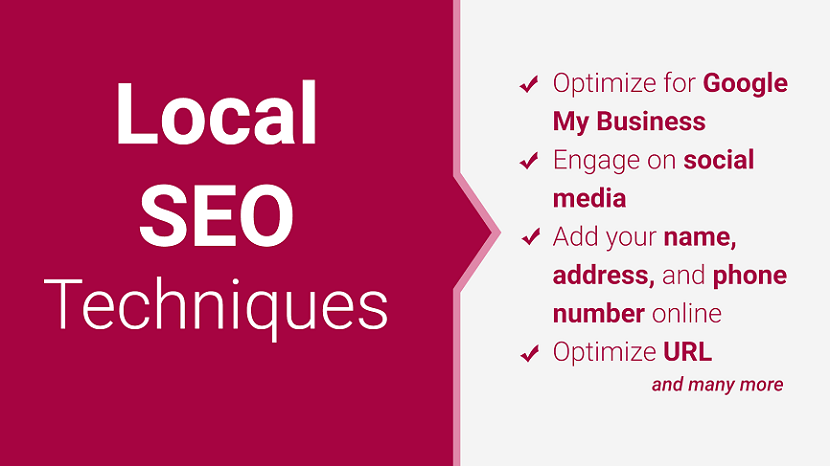
Local search is powerful for small businesses, 46% of all Google searches are looking for local information. If your business is not optimized for local search, you could miss out on potential customers ready to shop in your area. In short, local SEO is critical if you want your business to stay relevant.
If you want your site to rank on Google and increase your brand's organic traffic, you’ll need to look at On Page SEO, Off Page SEO and Technical SEO also.
But before you starting SEO also learn techniques of SEO ( White Hat SEO, Black Hat SEO, Gray Hat SEO and Negative SEO )
To help you optimize your business for local SEO, we've created a comprehensive guide covering local SEO tips and tools.
1. Optimize for Google My Business.
Google My Business has become the RGB Web Tech local search. Since Google supports, verifies, and shares its own content generously, Google My Business is an ideal tool to help your business meet Google's needs.
To ensure you're optimized for Google My Business, you'll want to:
If Google can verify your business as authentic, the search engine could potentially reward your business with a coveted sidebar space in Google's local search.
Don't just do this for SEO, either. By having reviews and keeping your contact information and operating hours up-to-date, you're improving the experience for potential customers to find you. Finding current data is essential to consumers, now more than ever, due to 2020's disruption in consumer shopping behavior and business operation.
2. Engage on social media and add posts to Google My Business
Google considers content shared on social media more important now than ever before.
Now that you've carved out a beautiful Google My Business page, share it on social media, further aligning social and search.
3. Ensure your name, address, and phone number are consistent online
You've got to make it easy for people and search engines to find you, and to do this you have to set up your NAP.
What does NAP mean in local SEO?
The acronym, NAP, stands for the name, address, and phone number (with area code) of a business. Your NAP should be considered crawlable HTML text on your site for Google to display it better according to location-based search results.
Pro Tip: Avoid the common mistake of only including the NAP within an image; images can't be crawled from search engines like HTML text.
The most common location for the NAP is in the footer or header of the site. Additionally, you should include your NAP on a “Contact Us” page, too.
4. Optimize URL, title tags, headers, meta description, and content.
When it comes to content, every new blog post is a new indexed page for your site, a new page on which to target a geographic search phrase, and a new opportunity to get found in the search engine results pages (SERPs).
Every time you write a piece of content, you need to optimize the content for search engines by using high-volume keywords in the URL, title, header, meta description, and body. If you're having trouble coming up with geo-targeted content, consider highlighting customer success stories and case studies.
Pro Tip: The more specifications you add to these assets (especially for each location of your business), the better you’ll be able to optimize “near me” local searches.
5. Add location pages to your website
If you have more than one brick-and-mortar location, create location pages. Location pages provide readers with your name, address, phone number, store hours, unique store descriptions, parking/transit information, promotions, and testimonials from happy customers.
It's also important you avoid duplicating content across multiple location pages. For single-location businesses, create a locally descriptive About Us page. You can even get bonus points if you add a Google Map to your website on your respective location page(s).
6. Create local content
Google continues to get smarter, which means content creators can now write more for users and less to appease search engines. And while writing about general topics will attract a vast crowd, sometimes it's more important to focus and write about local or industry news to attract a local audience.
Be the local authority for your industry by promoting local industry gatherings, news, employees, and other educational content on your blog. Think of top-of-the-funnel content that goes beyond what your business sells.
For example, if you're a local security company and trying to attract businesses new to the area, create a helpful resource to get these businesses well-acquainted with your city. A map of local service providers or a calendar of city-wide events could both provide value for your persona and contain highly relevant on-page local signals.
7. Ensure your website is mobile-friendly
Local and mobile search go hand in hand (61% of all Google searches are performed on mobile).
Some of the most common ways people will use your site in a mobile environment are to look up reviews, find directions to your location, and search for contact information. In fact, "near me" searches on mobile have increased 250% since 2017.
Make it easy for your prospects and customers by making your site mobile-friendly.
8. Get inbound links with relevance and authority
Inbound links are compelling opportunities to boost your local SEO — every inbound link tells Google you're a legitimate company, and inbound links can also raise your domain authority. Here are a few ways to get inbound links:
Start with your network, including the Chamber of Commerce, business improvement districts, licensing bureaus, trade associations, resellers, vendors, manufacturers, and other affiliates.
Consider sponsoring a webinar or meet-up, hosting a community event, promoting something local you love, and building relationships with prominent people and influencers. Additionally, learn to feel comfortable reaching out to partners to see if they can feature you in their partner directory.
Also, being a guest blogger can help attract links. Positively talk to or about other people in your industry, and act as a resource provider for the community. If you're an active participant in community conversations, the buzz around you grows in the form of inbound links, social media growth, and media coverage.
9. Participate in your local community
The more you participate in the local community, the more digital PR you'll receive. Partnering with a nonprofit on a campaign, having a volunteer day in your organization, sponsoring an event (even an online one!), or appearing in the local media as an authority in your industry are all ways to earn press, brand awareness, and inbound links.
For example, given that .edu links are the bee's knees for domain authority, why not earn some links by featuring a scholarship in your geographic region? It should be relevant to your industry, send the right signals to your domain (given the backlinks from schools) and make you feel good, too! Moz built a solid guide on the steps to success for effective scholarship outreach.
FAQs - Local SEO
1. What is local SEO?
Local SEO is the practice of improving your online presence to get more business from local searches. These searches take place on many search engines, but local SEO focuses on optimizing for Google users.
2. Why is local SEO important?
Local SEO is important because many people use search engines to find local businesses. In fact, according to Google 30% of all mobile searches are related to location. 78% of people who search for something nearby on their phones visit the business within a day. 28% of searches for something nearby result in a purchase. In short, customers are searching for your business. If you’re not there, you’re leaving money on the table.
3. How does local SEO work?
Local SEO is a game of two halves because Google shows two types of search results for local searches. These are “map pack” results and organic “blue link” results. You can rank on both of them. 1. Map pack results : The map pack (aka local pack) is a Google SERP feature that shows the top local business listings and a map. It often appears at the very top of Google’s search results for local searches. 2. Organic search results : The “regular” organic search results are the “10 blue links” that we’re all familiar with. They usually appear below the “map pack” results.
4. What is the difference between SEO and local SEO?
Search engine optimization (SEO) encompasses all areas of your website that relate to improving your search visibility, traffic, and conversion. Local SEO is a section of SEO that aims to boost local visibility or awareness of your local establishment worldwide. Local SEO is targeting consumers and clients who are interested in doing business in the local area.
5. How much does local SEO cost
Pricing for Local SEO services can range from $500 to $5000 or more. However, it will depend on what industry you’re in, the competition, and the SEO initiatives. Ultimately, your SEO consultant will be recommending an SEO strategy and a plan that will be presented to you for your approval.
6. What are local SEO citations?
Local citations are any mention of your business’ name, address, phone number and other information on the web. This can happen on websites, social media, or local business directories. It impacts how search engines view your website and can positively affect your local rankings.
7. How do you know if you need local SEO?
You know you need local SEO if you see that you’re not ranking locally or you need more leads and clients. It’s important to know that the ROI from local SEO is higher than other marketing initiatives. With more than 87.3 percent of the US population using the internet, you can be sure that a portion of those are locals looking for your business. So regardless of competition, there’s a lot of opportunities out there that you don’t want your local business to miss out on.
Conclusion
Local SEO is often a digital marketing tool that gets overlooked. Local SEO is just as important as traditional SEO. Ranking in Google Maps and local packs can help boost your foot and online traffic.
These fantastic suggestions, such as website optimization and Google Maps ranking can give you the boost your business needs.
Local SEO may seem overwhelming, but our digital marketing service and experts are here to help you with anything you need to know more about On Page SEO, Off Page SEO and Technical SEO.
If you found this article helpful, we encourage you to share it on your social media platforms—because sharing is caring! For more information about article submissions on our website, feel free to reach out to us via email.
Send an emailWritten by RGB Web Tech
Latest Technology Trends
Latest technology trends shaping the future, including AI advancements, blockchain innovation, 5G connectivity, IoT integration, and sustainable tech solutions. Explore breakthroughs in quantum computing, cybersecurity, augmented reality, and edge computing. Stay ahead with insights into transformative technologies driving innovation across industries and revolutionizing how we live, work, and connect.
White Hat SEO Techniques to Double Your Search Traffic
Last updated on January 19, 2025 by RGB Web Tech
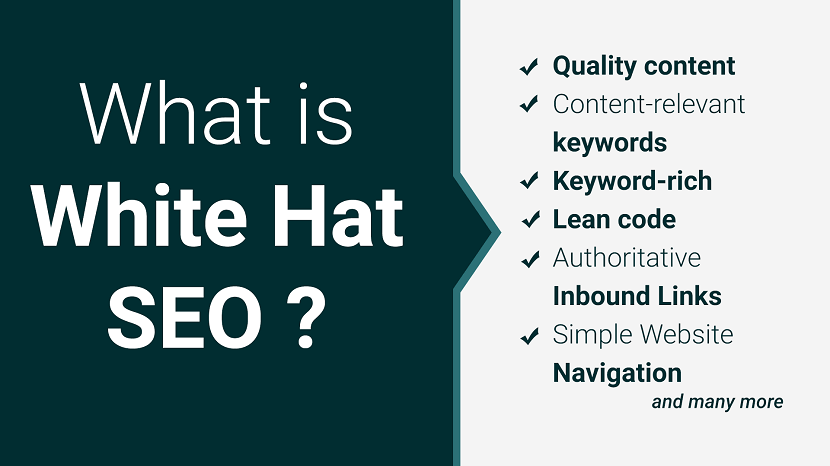
This is a complete guide to White Hat SEO. So if you want to rank your site to Google’s first page (without breaking the rules), you’ll love the strategies and tips in this guide. We’ve got a lot to cover, so let’s get started.
This post reveals white hat techniques that can potentially double, triple, or even 10x your traffic from organic search.
To ensure the algorithms are functioning as intended, Google employs an army of Quality Raters.
They follow strict guidelines developed by Google to ensure the algorithm output matches the standards established for Page Quality and Needs Met. These guidelines are a must-read for anyone serious about building a top-performing website.
According to Google, their search algorithm looks at five key factors in determining which results appear at the top of their search results:
By addressing these five factors, you will be putting yourself in a position to outperform the competition.
What Is White Hat SEO?
White hat SEO is a term used to refer to SEO strategies that function within the rules and expectations of search engines and searchers. It means implementing techniques to improve a website’s search engine ranking without relying on tricks to undermine a search engine’s algorithm.
White hat SEO strategies focus on providing readers with high-quality and relevant content that optimizes user experience rather than using more spammy techniques, like duplicate content that’s only optimized for search engines.
Advantages of white hat SEO
White hat SEO has several benefits for the operator:
Problems with white hat SEO
The biggest problem of white hat SEO is its limited scope. Of course, search engine optimizers can do comprehensive on page optimization. With regard to OffPage Optimization, Technical SEO or Local SEO possibilities are very limited, if you don’t want to end up on the black hat SEO bandwagon or at least gray hat SEO. Google forbids unnatural link building in its Webmaster Guidelines such as spam methods or link buying.
Another problem is the competition. If it uses gray or black hat SEO, the company itself is almost forced to use the same methods, lest it falls behind. It is difficult to overtake another highly-optimized website in the rankings just with pure white hat measures. However, if the website which was optimized with black hat methods is later penalized, it will have a very difficult time to catch up with a website that is optimized with very clean methods.
Moreover, the initial high cost is a barrier for many SEOs. The above-mentioned optimization work, which is allowed within the framework of white hat SEO, is very time-consuming and sometimes complex. Black hat SEO, on the other hand, is comparatively fast and can be performed more cost-effectively. In the long term, white hat SEO is more advantageous in terms of costs.
7 White Hat SEO Techniques
1. Quality content written for the benefit of the reader, not the search engine crawler, is the most crucial element of modern day SEO. It is the best way to be rewarded by search engines and how they rank your site or blog. Always remember that quality content is king!
2. Content-relevant keywords based on disciplined research around page content is mandatory. Also, pay attention to keyword usage. Stick to one primary keyword and 2 or 3 secondary/supporting keywords.
3. Keyword-rich page titles and metadata are also mandatory. It’s easy to overlook or underestimate these areas, but optimization is low-hanging fruit for most sites.
4. Lean code and semantically structured markup language, including the use of keyword-rich heading elements on your pages, aid search engines in finding what they're looking for when crawling your site.
5. Authoritative inbound links that are gained organically versus paid links have become one of the most important elements in your SEO efforts. Attaining authoritative inbound links takes time and dedication, but the tremendous impact on how you rank in SERPs and increased overall site traffic make it well worth the effort.
6. Simple website navigation generally boosts where your site places in organic search rankings. It also helps visitors find what they need without getting frustrated, which is a win for potential conversions.
7. Fast page loading times is a necessity because, like simple navigation or mobile optimization, responsive sites don’t frustrate visitors or encourage bounce. From an SEO standpoint, site speed is a search engine ranking signal. Sites that are slow in responding to visitor requests for whatever reason (large images, image carousels, etc.) generally rank lower in SERPs because the user experience is jeopardized. Be mindful of functionality and features and how they impact load times.
FAQs - White Hat SEO
1. What is White Hat SEO
White Hat SEO (WHS) is any on-page (and off-page) optimization activity aimed at increasing a website's visibility in search results and its attractiveness to users. White SEO activities must always correspond to Google's guidelines for webmasters. Read along to learn some white hat SEO techniques that will boost your website on the search engine results page.
2. Is the White hat method approach to SEO legal?
Yes, it is ethical and not legally objectionable to use the White hat method approach to SEO.
3. Is White Hat SEO more preferred?
White Hat SEO is ethical and legally not objectionable Search Engine Optimization. Since it promotes positive ratings by a search engine, it is more preferred.
The Bottom Line
When we talk about SEO, the First thing that comes to our mind is On Page SEO, Off Page SEO, Technical SEO and Local SEO. But in the initial stage, newcomers do not know the techniques of SEO. These techniques ( White Hat SEO, Black Hat SEO, Gray Hat SEO and Negative SEO ) can rank your website in the search engine's first page or first position. But be careful about the wrong techniques. These techniques can also harm your website ranking or permanently ban on search engines. So before you get started using SEO make sure to read all about SEO techniques.
If you found this article helpful, we encourage you to share it on your social media platforms—because sharing is caring! For more information about article submissions on our website, feel free to reach out to us via email.
Send an emailWritten by RGB Web Tech
Latest Technology Trends
Latest technology trends shaping the future, including AI advancements, blockchain innovation, 5G connectivity, IoT integration, and sustainable tech solutions. Explore breakthroughs in quantum computing, cybersecurity, augmented reality, and edge computing. Stay ahead with insights into transformative technologies driving innovation across industries and revolutionizing how we live, work, and connect.
Black Hat SEO Techniques That Can Harm an SEO Campaign
Last updated on January 19, 2025 by RGB Web Tech
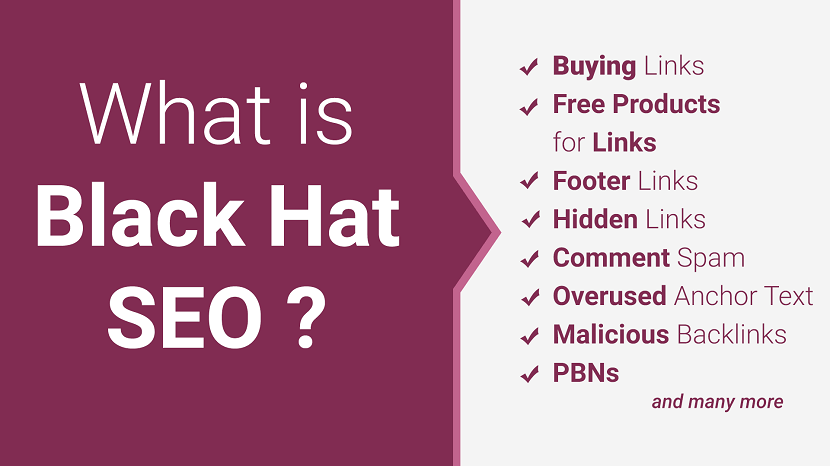
Black hat tactics are heavily penalized by Google, whether done consciously or otherwise. Read about them that can hurt your optimization efforts.
To remain the most popular search engine in the world, Google has to continuously update its algorithm to continue delivering users the most useful results.
To this end, Google also makes available Webmaster Guidelines, so everyone from web developers to SEO professionals knows the rules of the game.
Of course, there are plenty of people who want to win the game without following its rules.
For such people, there’s black hat SEO.
Black hat SEO gets its name from old cowboy movies where the bad guys wear a black hat.
Black hat SEO practitioners know the rules of search engine optimization and use that understanding to take shortcuts that aren’t exactly laid out in Google’s best practices.
This is in juxtaposition to White Hat SEO practitioners who follow Google’s Webmaster Guidelines, promote high-value content, and engage in deep keyword research to win in the SERPS.
Google is good at identifying and penalizing black hat SEO techniques, but that doesn’t stop people from trying them anyway.
Here are black hat practices to avoid because they can land you an algorithmic or manual penalty.
Some of these you may do without intending to, so it’s good to familiarize yourself with black hat SEO to make sure you’re in the clear.
Black Hat Link Techniques
1. Buying Links
A high-quality, relevant link can drive traffic to your domain while also telling Google’s algorithm that you’re a trustworthy source.
A good backlink can also help Google map your website so that it has a better idea of what you’re all about, making it easier to serve you up as a search result.
Buying a link, however, is against Google’s Webmaster Guidelines, and – according to Google – it doesn’t work.
If you’re caught, you could get an automatic and manual penalty that impacts specific pages, or worse, the entire site.
Google tracks links that are likely to have been bought and those that have been earned.
Additionally, the sort of website that sells you a link is the sort of website you wouldn’t want to buy a link from because it is easier than you think for Google to identify unnatural patterns – even for Google’s own properties.
2. Free Products for Links
Whether you’re giving or taking, exchanging free products (or discounts) for links is considered a link scheme by Google.
To not be considered a link scheme, make it a no-follow link, which is a link with a rel=“nofollow” tag.
A no-follow link ensures that the link doesn’t impact the search engine’s ranking algorithm.
3. Footer Links
The footer is prime real estate for a link because footers appear on every page of a website.
If you’ve been adding footer links with commercial anchor text at scale to manipulate results, Google will likely be able to identify those and penalize you for it.
4. Hidden Links
You may think that you can hide a link in your website’s text or by having the link appear as the same color as the background, but Google will notice and penalize you for trying to game the system.
Additionally, if you include enough irrelevant links, you’ll give Google less reason to direct traffic to your target audience since you’ll be diluting your relevance.
Deceptively hidden links are a violation of Google’s guidelines. That means:
5. Comment Spam
You may be able to share a link to your website in the comments section of a website, but you should avoid doing so unless it’s relevant.
Otherwise, you risk being penalized for being a spammer as using comments to build links is essentially not effective.
6. Overused Anchor Text
It may make sense to match your page’s title every time you share a link to it because the title is what your page is about, and consistency could imply relevancy.
But from Google’s perspective, this is also what it would look like if you were lazily spamming.
Instead, you should make your anchor text brief, relevant to the linked-to page, not stuffed with keywords, and unique.
This makes sense given that this is what anchor text would look like if the link were a natural part of its surroundings.
This rule holds for both internal and external links.
7. Malicious Backlinks
Some black hat SEO practitioners will try to use Google’s penalty system to advance their agenda by having websites that you wouldn’t want to associate with link to you to drag down your page rank.
For this reason, Google created a form to help you disavow links.
This way, when you go through your backlinks, you can disentangle yourself from any undesirable domains.
8. PBNs
PBNs are websites that link to each other.
They used to be much more prevalent in the 90s and early 2000s, particularly amongst fan pages for different tv shows, movies, musicians, etc.
They’re not necessarily a bad thing, but webrings are considered a link scheme when they’re designed to manipulate algorithms.
9. Keyword Stuffing
If SEO were only about using keywords, then a block of keywords would be all it takes to rank as number one.
But since Google wants to deliver high-quality results, it looks for content-rich in semantically-linked keywords.
That way, the algorithm is more likely to provide high-quality content instead of content that simply bears the superficial markings of high-quality content.
10. Hidden Content
Like a hidden link, hidden content is content that’s made the same color as the background.
It’s a tactic that intends to include as many keyword phrases, long-tail keywords, and semantically-linked words as possible in a page.
Of course, Google’s algorithm can tell the difference between keywords within the body of a paragraph and keywords hidden in the background.
There are several routes hidden content can take to end up on your site beyond being intentionally put there by the site owner.
Not all hidden content is forbidden, however.
The rule of thumb is that the content is okay so long as the content is visible to both the user and the search engine.
An example may be content that’s only visible to mobile visitors but is hidden to desktop visitors.
11. Article Spinning
Similar to duplicated or plagiarized content, article spinning is a technique that involves re-writing content by substituting synonyms, changing sentence structure, or re-writing text entirely while communicating the same information as the source material.
Article spinning can be done either manually or using technology.
While automated article spinning has advanced to the point where the articles are readable, Google will still penalize you for spun articles.
And for a good reason: spun articles degrade the quality of the internet.
12. Plagiarized or Duplicated Content
Sometimes known as scrapping, duplicating, or plagiarizing content can violate copyright or trademark laws.
Since Google wants to share high-quality domains, plagiarism is grounds for a penalty.
13. Rich Snippets Spam
Rich snippets are snippets with more information. More information can drive more traffic.
But there are many ways that the schema used to generate these snippets can be manipulated. In fact, there is an entire Google support page dedicated to it.
14. Cloaking
Cloaking is an old black hat trick that’s still used to this day: use a flash or animated page to conceal information your visitors that only Google can see in the HTML.
If Google catches you cloaking, you’ll get a penalty.
15. Doorway Pages
Doorway pages are a form of cloaking.
They’re designed to rank for particular keywords but then redirect visitors to other pages.
They’re also known as:
16. Keyword Stuffing in Alt Tags
You might think that alt-tags are a no harm opportunity to use as many keywords as possible, but stuffing in this context can also hurt your site’s rankings.
You’d also be misusing alt tags and, as a result, doing yourself and your site’s visitors a disservice. Alt tags are:
17. Hacked Website
While having an unsecured website can’t technically get you a Penguin or Panda penalty, it could result in the loss of your valuable rankings.
If your website gets attacked or injected with malicious code and Google finds out, they can block your website for people using their search engine.
Not only will this cause you to lose the trust of anybody who visits your site from organic search, but it will cause your website to drop in the rankings just like a Penguin or Panda penalty would.
While it’s true you may receive a notification through Google Analytics that your site has been hacked, it still could mean a real penalty for your website in search results if Google knows your site contains malicious code.
FAQs - Black Hat SEO
1. What is Black Hat SEO?
Black hat SEO is a practice against search engine guidelines, used to get a site ranking higher in search results. These unethical tactics don't solve for the searcher and often end in a penalty from search engines.
2. Does Black Hat SEO Still Work?
Black hat SEO works but for a shorter period of time. Performing black hat SEO will get you penalized, resulting in dropping down the search results or being removed absolutely from the SERPs.
3. What are Black Hat SEO tactics?
The most commonly practiced include - content spamming, keyword stuffing, paid links, redirects, cloaking, misused structured data etc.
4. Why Should I Choose White Hat SEO Instead of Black Hat SEO?
While Black Hat SEO includes duplicated content, irrelevant backlinks, blog comment spam, White Hat SEO helps you build a website containing relevant content, optimized images, natural keyword density, and relevant tags / headings. In sum, the dark path is unreliable, while the light path is a safe port.
Bottom Line
When we talk about SEO, the First thing that comes to our mind is On Page SEO, Off Page SEO, Technical SEO and Local SEO. But in the initial stage, newcomers do not know the techniques of SEO. These techniques ( White Hat SEO, Black Hat SEO, Gray Hat SEO and Negative SEO ) can rank your website in the search engine's first page or first position. But be careful about the wrong techniques. These techniques can also harm your website ranking or permanently ban on search engines. So before you get started using SEO make sure to read all about SEO techniques.
The rewards of the black hat path are short-lived. They’re also unethical because they make the internet worse.
But you can’t do something right without knowing how to do it wrong, which is why every white hat SEO also needs to know about the black hat path.
If you found this article helpful, we encourage you to share it on your social media platforms—because sharing is caring! For more information about article submissions on our website, feel free to reach out to us via email.
Send an emailWritten by RGB Web Tech
Latest Technology Trends
Latest technology trends shaping the future, including AI advancements, blockchain innovation, 5G connectivity, IoT integration, and sustainable tech solutions. Explore breakthroughs in quantum computing, cybersecurity, augmented reality, and edge computing. Stay ahead with insights into transformative technologies driving innovation across industries and revolutionizing how we live, work, and connect.
What is Gray Hat SEO? Is that good for the website?
Last updated on January 19, 2025 by RGB Web Tech
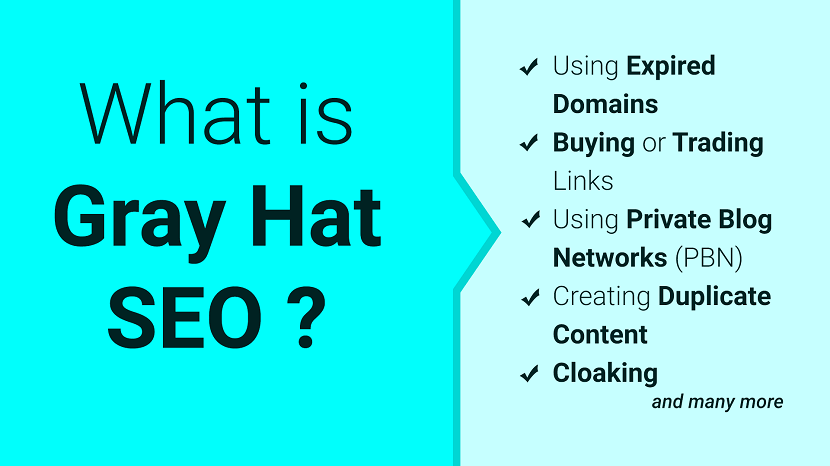
In this guide, we’ll answer the question, “what is gray hat SEO?”
You may have heard of White Hat SEO or Black Hat SEO, but what are gray hat SEO techniques?
Below you’ll find out everything you need to know about this search engine optimization strategy, including what gray hat SEO is, how it differs from white and black hat SEO, and a list of the most popular gray hat activities for increasing search engine rankings and visibility.
Note: Gray hat SEO also goes by the name “grey hat SEO”. The word gray has two spellings: gray and grey. And because this is an SEO-optimized blog post, I’ll switch between the two variations throughout the content to improve the rankings for both keyword phrases. (That’s SEO in action.)
What Is Gray Hat SEO?
Gray hat SEO is an SEO practice that combines white hat and black hat SEO. Gray hat SEO is riskier than white hat SEO because it exploits the search engine guidelines to increase a page’s rankings on the SERPs. Gray hat SEO techniques are black masquerading as white.
That’s the basic definition for what is gray hat SEO. Let’s now get into some of the most popular gray hat search engine optimization strategies being used today.
Gray Hat SEO Techniques
1. Using Expired Domains
This is a common gray hat SEO strategy that borders between black and white SEO.
It refers to buying a domain that the owner has let expire but still has a lot of authority because of the number and quality of backlinks still pointing to the site.
A gray hat SEO method with expired domains can be applied in two ways:
2. Buying or Trading Links
Buying links and trading links are the second most popular gray hat SEO techniques webmasters use to increase authority and rankings for their websites.
However, link schemes like this are technically black hat SEO tactics because they violate Google’s Webmaster guidelines.
This gray hat SEO method comes in four primary forms:
3. Using Private Blog Networks (PBN)
A private blog network (PBN) is a group of websites that you control which are used to build backlinks to a single website to help it rank higher in Google.
The purpose of a PBN for gray hat SEO purposes is to link to one central domain to pass the most link equity to it to improve the authority.
PBN backlinks are actually a black hat SEO strategy, but if you keep it truly private without anyone knowing about it, and you cover your tracks so that Google cannot detect that you own all of the websites, then this technique does fall into gray hat SEO territory.
4. Building Micro-Sites and Blogs
Building a micro-site or blog is a gray hat SEO technique that can improve your search engine rankings without getting penalized.
It’s kind of like a PBN but is much safer because you don’t own the domains that you’re using to link back to your site. They’re also a public network, not private.
Common examples of building microsites for SEO purposes include setting up a blog on multiple web 2.0 and content curations sites with high domain authorities, such as Medium, Weebly, Blogger, Tumblr, Live Journal, etc.
See my post on how to do SEO for a blog for tips on optimizing blog content.
5. Spinning Content
Spinning content is another common gray hat SEO method that can work for getting ranked in Google. However, it’s unethical and not a good practice to follow long-term.
But here’s how it works:
Spinning content is when you take content from another website and then reword it on a sentence-by-sentence basis so that it can’t be recognized by plagiarism software.
Once the content is spun, you post it on your own site so that it can get ranked for the keywords you want to target. Spinning content like this allows you to get around a potential duplicate content penalty, which we’ll cover next.
6. Creating Duplicate Content
Duplicate content is another gray SEO tactic that’s being used in the world of search engine optimization these days.
This technique includes copying and pasting large blocks of content across the same website or various domains.
There are three ways duplicate content is used for SEO:
7. Automating Content
Automating content is when you use software to automate the manual processes required in content creation. The purpose is to feed your blog with a constant stream of content so you have more opportunities to rank higher in Google and to get traffic.
Content automation is done in two ways:
8. Increasing Keyword Density with Hidden Text
Using hidden text is a black hat SEO method that violates Google’s Webmaster guidelines. However, gray hat SEO tries to bend these rules by tricks for hiding keywords from the user but still allows them to be crawled by the search engine.
The most common gray hat SEO techniques for hiding text include:
9. Cloaking
Cloaking is an SEO strategy that presents one set of content or URLs to human users and another set to search engines.
Cloaking is a deceptive gray hat SEO tactic that tricks search engines like Google to get the desired rankings for target keywords while giving users different results than they expect.
10. Submitting Your Site to Web Directories
One of the most overused gray hat SEO techniques is web directory submissions.
Adding your website directories can get you a free backlink to your site, and when done in small numbers, it’s considered a white SEO tactic.
But once you start overusing this strategy to generate tens or hundreds of links to your site, it tips into gray hat SEO territory. Especially if you manipulate the keyword anchor text for the backlink.
11. Creating Multiple Social Media Accounts
Having one social media account for your business on each social network is a white hat SEO method for sharing links and gaining more exposure for your content.
However, if you create multiple social media accounts to artificially inflate the sharing and linking to your website, then that’s a gray hat SEO method.
12. Paying for Positive Reviews
Google is known for rewarding websites with higher rankings that have positive reviews. This is especially true for local SEO.
One way to trick the algorithm in your favor is to pay people to leave a positive review for your listing. You can find an online service provider for positive reviews or entice current customers to review your site for a discount or bonus.
FAQs - Gray Hat SEO
1. What is Gray Hat SEO?
Generally speaking, gray hat SEO is the practice of using techniques that are not strictly against Google's guidelines but perhaps a little outside what would be considered best practice. For example, getting a backlink from an authority site is something that Google encourages.
2. What are some famous Gray hat SEO techniques?
Domain grabbing, Increasing your average length of old content, Web 2.0 for building links, usage of PBN, careful keyword stuffing, social bookmarking sites, Link exchange, web directories, multiple social media accounts, build microsites, are some of the best Gray hat SEO techniques.
3. Is Gray Hat SEO Illegal?
Gray hat SEO is not illegal. There is no law being violated by gray hat SEO techniques. However, gray hat SEO does go against search engine prohibited practices which can get your site banned from the search engine results pages.
4. Gray Hat SEO vs Black Hat SEO
The difference between gray hat SEO vs black hat SEO is that gray hat uses techniques that are not always in direct violation of search engine guidelines. This gray area of search engine optimization is what makes gray hat SEO more tempting than black hat SEO methods.
5. Gray Hat SEO vs White Hat SEO
The difference between gray hat SEO vs white hat SEO is that gray hat SEO is riskier than white hat SEO. A gray hat search engine optimization technique may or may not get your site banned from search engines and their affiliate sites. White hat SEO is 100% safe.
The Bottom Line
When we talk about SEO, the First thing that comes to our mind is On Page SEO, Off Page SEO, Technical SEO and Local SEO. But in the initial stage, newcomers do not know the techniques of SEO. These techniques ( White Hat SEO, Black Hat SEO, Gray Hat SEO and Negative SEO ) can rank your website in the search engine's first page or first position. But be careful about the wrong techniques. These techniques can also harm your website ranking or permanently ban on search engines. So before you get started using SEO make sure to read all about SEO techniques.
I hope you enjoyed this guide on what is gray hat SEO.
In many ways, gray hat SEO techniques are just black hat SEO methods that appear as white. Regardless, many website owners participate in these gray hat SEO tactics to gain more traffic to their sites, so it’s good to understand how these methods work online.
If you found this article helpful, we encourage you to share it on your social media platforms—because sharing is caring! For more information about article submissions on our website, feel free to reach out to us via email.
Send an emailWritten by RGB Web Tech
Latest Technology Trends
Latest technology trends shaping the future, including AI advancements, blockchain innovation, 5G connectivity, IoT integration, and sustainable tech solutions. Explore breakthroughs in quantum computing, cybersecurity, augmented reality, and edge computing. Stay ahead with insights into transformative technologies driving innovation across industries and revolutionizing how we live, work, and connect.
What is Negative SEO & How to Stay Safe
Last updated on January 19, 2025 by RGB Web Tech
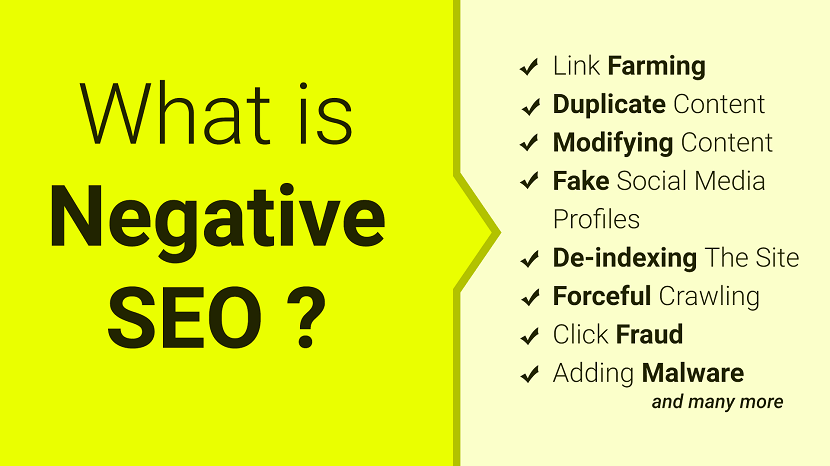
The entire SEO industry experienced a major transformation over the past two years. As a result, many online marketers have dramatically changed their strategies. Ranking high in Google for competitive keywords is not as easy as it was three years ago.
Because Black Hat SEO is harder and harder to execute, and less and less likely to deliver results, a new type of SEO has emerged called “Negative SEO.”
This is a guide that will help you understand what negative SEO is and how you can protect your business from becoming a victim. If you are serious about building your brand online and keeping it safe, this is something you should not ignore.
What is Negative SEO?
Negative SEO refers to the practice of using black hat and unethical techniques to sabotage a competitor’s rankings in search engines. Negative SEO attacks can take a number of different forms:
Type of Negative SEO:
1. Link Farming: Pointing low-quality links to your website from sites created solely for the purpose of housing useless, spammy, unrelated links.
2. Duplicate Content: Copying and pasting your content, and publishing it on multiple sites all over the internet is one of the easiest methods spammers use to penalize your site.
3. Modifying Content: Running invisible scripts from the header or footer templates.
4. Fake Social Media Profiles: Negative reviews published on social media can hurt you. Spammers often choose to attack through social media, creating accounts on Facebook or Twitter with a company’s name, and posting low-quality posts to ruin their reputation.
5. De-indexing The Site: Changing your robots.txt file from the server to remove you from search.
6. Forceful Crawling: Slowing down websites is an easy way for negative SEO practitioners to cause damage. By forcefully crawling the site, taxing the server load, and ultimately crashing the site, negative SEO practitioners can decrease or de-rank your site.
7. Click Fraud: A specially programmed CTR bot looks for the site’s main keywords and branded terms, then clicks on the listing, only to quickly bounce back to the search engine request page. The site gets dropped once Google surmises the site’s owner may be trying to “game the system.”
8. Adding Malware: If malware attacks your site, Google may warn users that “this site may be hacked” before forwarding, causing traffic to plummet.
How To Secure Your Website Against Negative SEO Attacks
Google’s assurances are not enough for the proactive web owner. Fortunately, there are several ways to proactively protect your website.
1. Enable email notification Google Search Console: Now all information and issues pertaining to your website can be kept in the forefront of your mind. Once you see what is going on, you can employ more advanced strategies to prevent negative SEO, including: monitoring website backlinks, disavowing (or removing) suspicious backlinks, and securing your website from malware/hackers.
2. Keep an eye on your backlinks: Online visibility management platforms like SEMrush help you monitor your backlinks through an email summary of changes. Building backlinks to negatively impact websites from low-quality websites is a favored tool of negative SEO practitioners.
3. Closely watch your important backlinks: Again, a tool like SEMrush is invaluable. Mark your most important backlinks and ask to be alerted when they are removed. You can contact the webmasters of the sites and ask to have valuable backlinks restored, so you do not lose search status.
4. Safeguard your website from hackers and malware: With all the high-profile hacks and costly data breaches in the news these days, it’s never been more important to bolster the security of your website against vicious malware attacks. Fortunately, there are easy and affordable steps you can take to do just that, such as:
5. Look out for content thieves and copycats: Copyscape and Grammarly can help you find other copies of your content elsewhere on the Internet if they exist, as well as improve the quality of the writing on your site and avoid accidental plagiarism.
6. Keep an eye on your social media mentions: Play an active role in social media administration through your social page dashboards. HubSpot, Hootsuite, and Social Mention offer social listening tools, so you are alerted whenever your name is mentioned on social media. When mentions are made, be sure you address any concerns directly and promptly to avoid bad publicity from spreading.
7. Speed up your website loading time: Google Analytics Alerts send you emails when your website loading time slows down, so you can identify when and why it’s happening. You may need to enable caching, remove resource-hogging plugins or add-ons, optimize your image sizes, get rid of excess code, or take steps to block spammer activity.
FAQs - Negative SEO
1. What is Negative SEO?
Negative SEO, also sometimes called “Black Hat SEO,” involves the use of malicious tactics on your site to tarnish your reputation with Google and steal search engine rankings for important keywords to be used on a competitor’s site. In the past, negative SEO may have been as simple as hijacking your site with questionable banner ads. However, today’s negative SEO has become much more complex and sophisticated.
2. What are the various types of negative SEO?
Website hacking to modify your files to steal links, Content scraping, Keyword stuffing, Building toxic links to your site in the form of blog directory submission, forum posting, etc. are the various types of negative SEO.
3. What does Google say about Negative SEO?
Obviously, Google wants everyone to play by the rules. The online community of webmasters and marketers were shocked and concerned by Google Webmaster’s admission to the existence of Negative SEO back in 2012. Since then, Google Webmaster Matt Cutts reassures us: “In my experience, there’s a lot of people who talk about negative SEO, but very few people who actually try it. And, fewer still, who actually succeed.” He also went on to say that small businesses shouldn’t worry about being targeted for Negative SEO because it’s a tactic that is only reportedly used in very niche markets of bigger, highly-competitive businesses.
4. Is Google doing anything about Negative SEO?
Of course, Google is doing all sorts of work on the back-end but they can’t explain exactly what happens in each update, though, because the spammers would immediately set to work figuring out ways to exploit the new algorithms. The “link disavow” feature rolled out in October 2012 was Google’s public answer to concern about Negative SEO. This webmaster tool notifies webmasters of manual spam activity or unnatural links, and allows the option to deny backlinks from linking to their site and/or domain. By addressing the problem at the root cause through a simple text file of URL listings, Google makes it easier to keep tabs on fraudulent activity. Yet, the Webmaster Central Blog also wants you to remain confident in their ability to reward the good sites and punish the bad. “The vast majority of sites do not need to use this tool in any way,” they clarified.
The Bottom Line
When we talk about SEO, the First thing that comes to our mind is On Page SEO, Off Page SEO, Technical SEO and Local SEO. But in the initial stage, newcomers do not know the techniques of SEO. These techniques ( White Hat SEO, Black Hat SEO, Gray Hat SEO and Negative SEO ) can rank your website in the search engine's first page or first position. But be careful about the wrong techniques. These techniques can also harm your website ranking or permanently ban on search engines. So before you get started using SEO make sure to read all about SEO techniques.
Negative SEO happens. The best you can do, as a business website owner, is to stay informed on the different ways in which it occurs, remain vigilant, and use the latest tools to protect yourself.
If you found this article helpful, we encourage you to share it on your social media platforms—because sharing is caring! For more information about article submissions on our website, feel free to reach out to us via email.
Send an emailWritten by RGB Web Tech
Latest Technology Trends
Latest technology trends shaping the future, including AI advancements, blockchain innovation, 5G connectivity, IoT integration, and sustainable tech solutions. Explore breakthroughs in quantum computing, cybersecurity, augmented reality, and edge computing. Stay ahead with insights into transformative technologies driving innovation across industries and revolutionizing how we live, work, and connect.
What are Search Engine Optimization Strategies?
Last updated on January 19, 2025 by RGB Web Tech
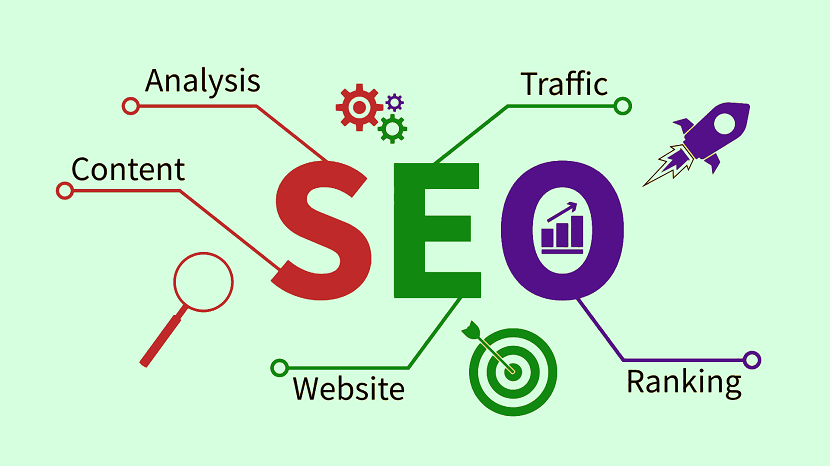
SEO stands for Search Engine Optimization and is the process of improving a website's performance, experience, and authority to gain better visibility in search engines like Google. The goal of SEO is to rank higher in organic (unpaid) search results.
SEO involves various strategies, including optimizing website content and structure, improving meta tags, using strategic keywords, and building backlinks. These tactics help the site appear higher in search engine results pages (SERPs), making it more likely that people will click through to the website. SEO is a critical component of digital marketing.
Contents Overview
What does SEO stand for?
SEO, or Search Engine Optimization, refers to the process of enhancing your website’s visibility in search results. Here’s what that entails:
Types of SEO (Search Engine Optimization)
Search engine optimization (SEO) is a part of internet marketing that aims to increase a website's visibility in organic search results. SEO can be divided into two main types: On Page SEO, Off Page SEO, Technical SEO, Local SEO, Content SEO, Mobile SEO, eCommerce SEO, Image SEO and Video SEO.
1. On Page SEO
On-page SEO refers to the practices used to optimize individual web pages to help them rank higher and earn more relevant traffic in search engines. It involves both the content and the HTML source code of a page (as opposed to off-page SEO which involves links and other external signals). Here are the key elements of on-page SEO:
2. Off Page SEO
Off-page SEO refers to the techniques used to improve the position of a website in the search engine results page (SERPs) that are implemented outside of the actual website. This aspect of SEO focuses on enhancing the perception of a site's popularity, relevance, trustworthiness, and authority. This is achieved through other reputable places on the Internet (pages, sites, people, etc.) linking to or promoting your website, effectively "vouching" for the quality of your content. Here are the key components of off-page SEO:
3. Technical SEO
Technical SEO refers to the process of optimizing the infrastructure of a website to help search engines crawl and index it more effectively. This aspect of SEO focuses on the backend structure and foundation of a site, ensuring that the site meets the technical requirements of modern search engines with the goal of improved organic rankings. Key elements of technical SEO include:
4. Local SEO
local SEO is a branch of search engine optimization that focuses on optimizing a business's presence to attract more business from relevant local searches. These searches take place on Google and other search engines but are specifically aimed at generating local results for users. Local SEO is crucial for businesses that have a physical location or serve a specific geographic area. Here are the key components of local SEO:
5. Content SEO
Content SEO refers to the aspect of SEO focused on creating and structuring content in ways that help improve visibility and rankings in search engine results pages (SERPs). It involves not only producing high-quality, relevant content but also ensuring it is optimized for both search engines and users. Here are the key components of content SEO:
6. Mobile SEO
Mobile SEO refers to the process of optimizing your website to ensure it performs well and provides a good user experience on mobile devices. As mobile traffic surpasses desktop traffic in volume, mobile SEO has become crucial for achieving high search engine rankings and capturing mobile user engagement. Here are the key aspects of mobile SEO:
7. eCommerce SEO
eCommerce SEO is the practice of optimizing online stores to rank higher in search engine results pages (SERPs) and attract more targeted traffic that can convert into sales. It involves a blend of general SEO practices along with strategies specifically tailored for eCommerce platforms. Here are the essential components of eCommerce SEO:
8. Image SEO
Image SEO is the practice of optimizing images to be discovered via search engines' image search features, contributing to the overall SEO performance of a website. It's particularly important for websites that rely heavily on visuals, such as eCommerce sites, art galleries, or recipe blogs. Optimizing images can enhance user experience, reduce page load times, and improve rankings. Here are key strategies for effective image SEO:
9. Video SEO
Video SEO involves optimizing video content to increase its visibility and ranking on search engine results pages as well as within video search engines like YouTube. It is an important aspect for businesses and content creators who use video to communicate with and engage their audience. Effective video SEO can drive more traffic to your website, enhance user engagement, and increase conversions. Here are key strategies for optimizing your video content for search engines:
Type of SEO Techniques
SEO (Search Engine Optimization) involves various techniques to improve the visibility and ranking of websites in search engine results. These techniques can be classified into different types:
1. White Hat SEO
White Hat SEO refers to the use of optimization strategies, techniques, and tactics that focus on a human audience opposed to search engines and completely follow search engine rules and policies. Here are some key aspects of White Hat SEO:
2. Black Hat SEO
Black Hat SEO refers to the use of aggressive SEO strategies, techniques, and tactics that focus primarily on manipulating search engine algorithms to gain higher rankings, rather than serving a human audience. These practices are against search engine guidelines and can result in severe penalties from search engines like Google. Here are some common Black Hat SEO techniques:
3. Gray Hat SEO
Gray Hat SEO is a practice that falls between White Hat and Black Hat SEO. It involves strategies that are not as clearly defined by search engine guidelines but could be considered questionable or might become classified as Black Hat SEO in the future. These techniques are often used by those looking to gain a competitive edge without crossing into outright Black Hat practices, but they still carry risks, including potential penalties if search engines update their algorithms and policies.
Here are some common Gray Hat SEO tactics:
4. Negative SEO
Negative SEO refers to the practice of using Black Hat and unethical techniques to sabotage a competitor’s rankings in search engines. It's a malicious tactic that targets other websites with the intention of causing harm to their search engine credibility and rankings. Here are some of the common methods employed in negative SEO:
Benefits & Importance of SEO (Search Engine Optimization)
SEO (Search Engine Optimization) is crucial for any business or individual seeking to increase their online presence and visibility. Here are some of the key benefits and reasons why SEO is so important:
Frequently Asked Questions (FAQs)
Search Engine Optimization (SEO) is a critical component of digital marketing. Here are some frequently asked questions (FAQs) about SEO that might help you understand it better:
1. What is SEO?
Answer : SEO stands for Search Engine Optimization. It involves optimizing a website or content to improve its visibility and ranking in search engine results pages (SERPs). This is done through various techniques such as optimizing content, improving site structure, and building backlinks.
2. Why is SEO important?
Answer : SEO is important because it helps increase the visibility of a website, attracting more traffic from organic searches. This can lead to increased brand awareness, higher sales, and more engagement.
3. What are the key components of SEO?
Answer : The key components of SEO are On-page SEO, Off-page SEO and Technical SEO
4. How do search engines rank websites?
Answer : Search engines use algorithms to determine the relevance and authority of pages. Factors that influence rankings include the quality and relevance of content, the user experience on the website, the number and quality of backlinks, and technical aspects of the site.
5. Can I do SEO myself?
Answer : Yes, it's possible to do SEO yourself, especially if you have a basic understanding of website management and online marketing. There are many resources available online to learn SEO, from blogs and tutorials to comprehensive guides and courses.
6. How long does it take to see results from SEO?
Answer : SEO is a long-term strategy. Typically, it can take several months to a year to see significant changes in search rankings due to the competitive nature of rankings and the time it takes for search engines to recognize and index changes.
7. Is SEO different from SEM?
Answer :Yes, SEO (Search Engine Optimization) is different from SEM (Search Engine Marketing). SEO focuses on optimizing a website to get traffic from organic search results, while SEM includes tactics like paid advertising (PPC) alongside SEO strategies to increase visibility.
8. How do I know if my SEO efforts are working?
Answer :You can track your SEO progress using tools like Google Analytics and Google Search Console. These tools provide insights into traffic, rankings, and conversions, helping you understand the effectiveness of your SEO strategies.
9. What are some common SEO mistakes to avoid?
Answer : Common mistakes include keyword stuffing, neglecting mobile optimization, using duplicate content, and ignoring meta tags and descriptions. It’s also a mistake to neglect the quality of content while focusing solely on SEO tactics.
10. How does content affect SEO?
Answer :Content significantly affects SEO because it helps to establish relevance and authority. High-quality, relevant content is more likely to be shared and linked to, which boosts SEO. Regularly updated content is also favored by search engines.
Conclusion
SEO, or Search Engine Optimization, is an indispensable strategy in the digital marketing landscape, aimed at enhancing the visibility and ranking of websites in search engine results. By leveraging techniques that span on-page optimization, off-page activities, and technical enhancements, businesses can attract higher organic traffic, improve user engagement, and increase their online authority. While SEO demands patience and consistent effort, the benefits are substantial, offering long-term gains in visibility and competitive advantage. As search algorithms evolve, staying informed and adaptable is crucial, making SEO an ongoing, integral part of any successful digital marketing strategy. Thus, businesses that invest wisely in SEO can expect to not only boost their online presence but also secure a significant edge in the increasingly crowded digital marketplace.
You might also consider exploring our lists of Profile Creation Sites and Directory Submission Sites to build quality backlinks for your SEO.
Additionally, we've put together a Technical SEO Checklist tailored for SEO professionals, which you might find useful.
If you find this article beneficial, please share it on your social media channels. Remember, sharing is caring!
If you found this article helpful, we encourage you to share it on your social media platforms—because sharing is caring! For more information about article submissions on our website, feel free to reach out to us via email.
Send an emailWritten by RGB Web Tech
Latest Technology Trends
Latest technology trends shaping the future, including AI advancements, blockchain innovation, 5G connectivity, IoT integration, and sustainable tech solutions. Explore breakthroughs in quantum computing, cybersecurity, augmented reality, and edge computing. Stay ahead with insights into transformative technologies driving innovation across industries and revolutionizing how we live, work, and connect.
What is Reputation Management?
Last updated on January 19, 2025 by RGB Web Tech
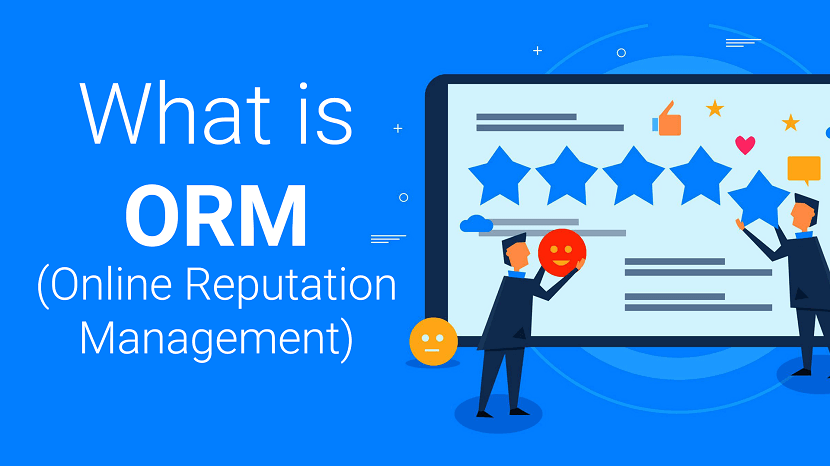
Only a decade ago, things like PR and reputation management seemed like matters of concern for big businesses and celebrity personas. And it seemed like smaller brands had little to care about; their brand perception was a one-way alley with customers having little room for feedback.
After all, they could just choose to ignore the business’s products and services, but their perception had little impact. But we are now living in an era of an active audience, one where people express their opinions about brands and services on several platforms online all the time.
And, with 71% of consumers starting their customer journey with a Google search, no business can afford to show up on the SERPs appearing untrustworthy and disreputable.
To avoid any potential issues, here is an extensive guide on Online Reputation Management for businesses of any size and industry to help digital marketing professionals discover effective ways to manage their brand’s online reputation.
What is Online Reputation Management (ORM)?
Online Reputation Management, or ORM, (not to be confused with online review management) is a multi-faceted concept that is aimed at creating a positive public perception of a brand, business, or person. Reputation management includes monitoring reputation, addressing any content or customer feedback that could damage the brand, and using strategies to prevent and solve problems that could damage an entity's reputation.
How Online Reputation Management Works
In a nutshell, ORM is all about monitoring and managing your brand’s reputation across the web, about ensuring that your business is properly represented and that potential customers are left with a great impression on who you are and what you do.
That said, multiple channels fall within Online Reputation Management, and since it may seem overwhelming at first to embrace all these channels, let’s think about them in terms of the PESO model.
The 12 main benefits of managing your online reputation
Here are the top reasons why it’s worth considering implementing an online reputation management process for your business:
1 Improving brand credibility
Let’s face it – negative comments are bound to come up, regardless of how much effort you invest into keeping your buyers happy. And customers can be merciless – according to PwC, 32% of shoppers would walk away from a brand after just one bad experience.
That said, it all comes down to how you handle a negative brand mention once it shows up. When you manage your online reputation and respond to comments, reviews, and mentions (both positive and negative), you build credibility. There’s no better way to show that you care about your customers than by responding to a negative comment gracefully and making amends, whenever need be.
2 Boosting customer engagement
The more channels your organization monitors and is active on, the higher your chances of boosting your customers’ engagement rates. This is possible by embracing both a proactive and reactive approach to client interactions. By being active online, providing customers with special offers, and responding to their queries and comments swiftly, you can keep them invested in your brand. As a result, they will be less tempted to churn and move to your competitors.
3 Increasing sales
While spontaneous shopping still happens from time to time, most of us do online research prior to buying. In fact, 81% of consumers admit that they surf the Internet gathering information about the product they’re planning to purchase before they do so. Sometimes, one negative review is enough to change our minds and make us lean more towards other products. There is a link between good online reputation and increased sales – the more positive company mentions appear, the higher the chance of closing a sale.
4 Optimizing online marketing to trigger reactions
Monitoring your online reputation can also be a great source of inspiration for your marketing initiatives. In a tool like SentiOne, you can check how your audience reacted to your past content and marketing campaigns. For instance, below is an example of how people reacted to two announcements by mBank, one of the biggest banks in Poland. The first spike, in mid-October 2020, relates to the brand’s support of the All-Poland Women’s Strike, while the second, in January 2021, is a response to the bank’s participation in the country’s biggest charity event, The Great Orchestra of Christmas Charity.
Through tracking your reach and brand mentions, you’ll know which campaigns work and which don’t, what messaging resonates with your customers and leads, and what kind of actions drive negative reactions. Summarizing your findings will help you decide what marketing campaigns to run, which will result in higher ROI.
5 Building trust
Trust is the basis for forming long-lasting relationships with customers, which supports business growth. However, as mentioned earlier in the reputation management definition, responding to brand mentions in your owned media only won’t be enough. Even if you have a good brand reputation today, you can’t take it for granted as there are many threats lurking around the corner. Just imagine what could happen if you failed to notice a major website slamming you in their review!
It’s also necessary to verify the information posted about brands online to make sure it’s consistent and true. This can be certainly achieved by using a tool that tracks and alerts you about mentions from all parts of the web.
6 Showing customers that you care
Monitoring what people say about brands online and responding to both negative and positive comments shows them that you care. Naturally, all of us would like to receive flattering comments only, and these are certainly easier to respond to. However, negative comments can also prove beneficial to a brand long-term. They are a source of invaluable feedback – take into account what customers say and fix the issues. Never ignore disheartening opinions as they might escalate into a social media crisis. Responding to both positive and negative comments will help you build better relationships with customers.
7 Encouraging recommendations
Did you know that 90% of people believe in brand recommendations from friends? Considering the fact that consumers casually talk about brands 90 times per week – online reputation management is definitely something that you should care about. Since people tend to trust other people more than their trust advertising, making sure that you get a continuous flow of word-of-mouth recommendations through effective online reputation management is key.
8 Increasing web traffic
Positive news or opinions – especially those coming from reputable sources – have the potential of becoming viral. With an online reputation management tool, for instance, you’ll be able to spot a top news outlet lauding your service. This will explain any sudden spikes in organic traffic. You can use this to gain further momentum. Display the positive review/brand mention across your online channels to boost your reputation. If done well, this can result in increased conversion.
9 Attracting employees
A positive online reputation not only translates into increased sales but can also attract a lot of interest from potential job seekers. The best candidates are keen on working for companies with a good reputation – and since the war for talent is fierce, it might help companies get the best employees on board.
10 Easier to deal with potential crises
Brands that put in the effort to maintain a good online reputation are overall better equipped to deal with any crisis. Especially if they use an ORM solution that alerts them of any crisis-related terms used in relation to their brand. Also, a gentle stumble will be easier forgiven by customers if a brand has an overall positive reputation.
11 Improving your Brand Health & Customer Satisfaction scores
Online reputation management gives you the chance to react quickly to mentions of your brand. In the case of unflattering reviews on your owned channels, you can make amends quickly and, perhaps, change the customer’s negative opinion into a neutral or positive one. This could have a positive outcome on your customer satisfaction scores like CSAT or NPS.
Respectively, in the case of external channels, ORM will give you a chance to advocate for your brand and quickly put an end to any detrimental rumors.
12 Getting more testimonials for your website
Last, but not least, if you use an online monitoring tool like SentiOne, not only will you be able to identify brand mentions but also filter out the positive ones. You can then reach out to your most delighted fans and ask them for a citation which you can then turn into a testimonial to place on your website. To kickstart your efforts, think of places like Google Play, Apple App Store, and specialized online review platforms.
FAQs - Online Reputation Management1. What does online reputation management mean?
Online reputation management is the process of controlling the online narrative of a person, company, or brand. It consists of reputation protection, monitoring, crisis management, and reputation recovery. 88% of consumers perform online research before making a purchase.
2. Is reputation management illegal?
These tactics are always unethical and, in some cases, illegal. Some black hat reputation management tactics include creating a slew of false accounts to report competitors, developing fake websites for review placements, and developing spam content.
1. What does online reputation management mean?
Online reputation management is the process of controlling the online narrative of a person, company, or brand. It consists of reputation protection, monitoring, crisis management, and reputation recovery. 88% of consumers perform online research before making a purchase.
2. Is reputation management illegal?
These tactics are always unethical and, in some cases, illegal. Some black hat reputation management tactics include creating a slew of false accounts to report competitors, developing fake websites for review placements, and developing spam content.
Final Thoughts - Online Reputation Management
As we’ve mentioned in the online reputation definition provided in this post, there are a variety of actions you need to take to maintain a positive view of your brand online. Regardless of your industry, it is crucial to track, collect, analyze, and manage your brand reputation. If you engage in ORM continuously, there are numerous benefits you can expect, including:
The best way to manage your online reputation is by using an online monitoring tool like SentiOne. You’ll be able to monitor countless online sources including social media, blogs, forums, and portals in real-time. By listening to online conversations and analyzing what customers or leads say about your or your competitors, you’ll be able to identify and respond to any potential PR crisis.
If you found this article helpful, we encourage you to share it on your social media platforms—because sharing is caring! For more information about article submissions on our website, feel free to reach out to us via email.
Send an emailWritten by RGB Web Tech
Latest Technology Trends
Latest technology trends shaping the future, including AI advancements, blockchain innovation, 5G connectivity, IoT integration, and sustainable tech solutions. Explore breakthroughs in quantum computing, cybersecurity, augmented reality, and edge computing. Stay ahead with insights into transformative technologies driving innovation across industries and revolutionizing how we live, work, and connect.
Conversion Rate Optimisation (CRO)
Last updated on January 19, 2025 by RGB Web Tech
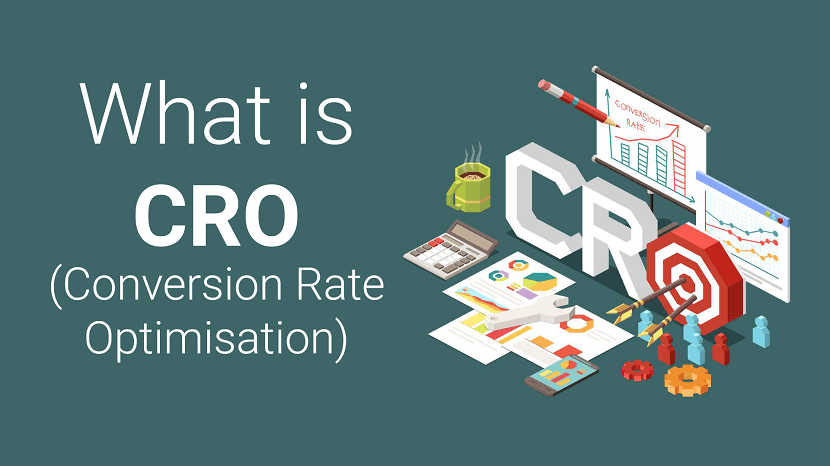
Today, most marketing teams are focused on driving traffic toward websites in hopes that this traffic then converts into qualified leads for sales reps to close. But that's only half the battle.
Getting more out of existing traffic and leads (versus entirely new traffic) can propel companies toward long-term, sustainable growth. That's where conversion rate optimization (CRO) comes in. In this guide, you'll learn about the power of CRO, why your business should focus on improving your conversion rate, and how to get started.
Conversion Rate Optimization
Conversion rate optimization, or CRO, is the process of enhancing your website to increase the number of leads you generate. CRO is achieved through content enhancements, split testing, and workflow improvements. Conversion rate optimization results in highly-qualified leads, increased revenue, and lower acquisition costs.
What is a conversion rate?
A conversion rate is the percentage of visitors who complete a desired action, like completing a web form, signing up for a service, or purchasing a product.
A high conversion rate means your website is well-designed, formatted effectively, and appealing to your target audience. A low conversion rate could be the result of a variety of factors related to either website performance or design. Slow load times, a broken form, or copy that doesn’t convey the value of the offer are common reasons for a poor conversion rate.
What is a good conversion rate?
A "good" conversion rate depends on your industry, niche, goals, traffic channel, and audience demographics, among other factors. For example, the average conversion rate of ecommerce sites globally was 2.17% in the third quarter of 2020, which was down from 2.37% the previous year. The ecommerce conversion rate in the US was higher, however, at 2.57%.
The average not only differs by year and by country — it also differs by niche. For example, the average conversion rate of ecommerce sites in the food and beverage sector is 5.5% whereas the average in the hair care sector is 3.5%.
If your conversion rate is lower than you'd like — maybe it's below average in your industry, or lower than your top competitors, or simply underperforming against your own goals — then it's time to optimize.
Conversions can happen all over your website: on your homepage, pricing page, blog, landing pages, and more. To maximize the potential of converting website visitors into paying customers, you should optimize each location.
Before we take a look at the benefits of CRO, let's walk through how to calculate your site's conversion rate. That way, you'll have a better understanding of how much time and resources to invest in a CRO strategy.
How to Calculate Conversion Rate
Conversion rate is calculated by dividing the number of conversions by the number of visitors and multiplying that number by 100 to get a percentage.
As long as you know how you're defining a conversion, then calculating your conversion rate is easy. You just plug in two values and multiply by 100.
Let's say you're defining a conversion as a newsletter opt-in, and you have an opt-in form on every single page of your website. In that case, you'd divide the total number of newsletter form submissions by the total number of website visitors and multiply it by 100. So if you had 500 submissions and 20,000 visitors last quarter, then your conversion rate would be 2.5%.
You can repeat this process for every conversion opportunity on your site. Just make sure to only count the number of visitors on the webpages where the offer is listed. For example, if you want to calculate the conversion rate of your ebook offer, then you'd divide the total number of downloads by the number of people who visited web pages where the ebook offer is listed.
Alternatively, you can calculate your website's overall conversion rate by dividing the total number of conversions for every conversion opportunity on your site by the total number of visitors on your site.
Where to Implement a CRO Strategy
Here are four areas of your website that have the potential to largely benefit from conversion rate optimization.
1. Homepage
Homepages are prime candidates for CRO. In addition to making a first impression on visitors, the homepage is also an opportunity to retain those visitors and guide them further into your website.
You can do this by emphasizing links to product information, offering a free signup button, or even incorporating a chatbot that solicits questions from visitors at any point during their browsing experience.
2. Pricing Page
A website's pricing page can be the make-or-break point for many website visitors. CRO can help a pricing page convert visitors into customers by modifying the pricing intervals (e.g. price-per-year vs. price-per-month), describing the product features associated with each price, including a phone number for visitors to call for a price quote, or adding a simple pop-up form.
Hotjar, for example, added a simple email opt-in popup form on its pricing page and got over 400 new leads in just three weeks.
3. Blog
A blog is a massive conversion opportunity for a website. In addition to publishing thoughtful and helpful content about your industry, a blog can use CRO to convert readers into leads.
This process often includes adding calls-to-action (CTA) throughout an article or inviting readers to learn more about a topic by submitting their email address in exchange for an ebook or industry report.
4. Landing Pages
Since landing pages are inherently designed for people to take an action, it makes sense that they have the highest average conversion rate of all signup forms at 23%. An event landing page, for example, can be optimized with a video of last year's event to encourage visitors to register this year. A landing page that's offering a free resource can be optimized with preview content from that resource to encourage visitors to download it.
Now that you know where you can optimize for conversions, you may be wondering how you know when your business is ready to start the process.
CRO Formulas
The short answer: CRO is important for any business online. That's because, no matter how established or large your company is, you want to convert your website visitors into qualified leads, customers, and brand advocates — and you want to do so in the most effective, impactful, and reliable way.
With conversion rate optimization, you'll get more out of your existing website traffic while ensuring you're targeting qualified leads.
Although this is a straightforward concept, setting a conversion goal isn't as easy as saying, "This page converted 50 people this month, so we want to convert 100 people next month."
Featured resource: 8-Week Conversion Rate Optimization Planner
You don't just want 50 more conversions from a webpage. Instead, you want 50 more conversions for every X amount of people who visit it. (This is your conversion rate — the percentage of people who convert on your website based on how many people have touched it).
To provide a better understanding of where you stand at any point in time in regards to conversion rate, here are three commonly-used formulas your business can use to understand, analyze, and improve.
CRO Calculation 1: Conversion Rate
As we mentioned earlier, to calculate conversion rate, you must divide your number of conversions (or leads generated) by your number of visitors (or web traffic), and then multiply that number by 100 to get the percentage.
Leads Generated ÷ Website Traffic x 100=Conversion Rate %
CRO Calculation 2: Number of Net New Customers
To calculate your number of net new customers, you'll want to divide your net revenue goal by your average sales price.
New Revenue Goal ÷ Average Sales Price=Number of New Customers
CRO Calculation 3: Lead Goal
And lastly, to calculate your lead goal, take your number of new customers and divide it by your lead-to-customer close rate (which is your total number of leads divided by total number of customers) percentage.
Number of New Customers ÷ Lead-to-Customer Close Rate %=Lead Goal
Here's an example of these formulas in action:
If your website has 10,000 visitors per month that generate 100 leads — and subsequently, 10 customers each month — the website visitor-to-lead conversion rate would be 1%.
What if you wanted to generate 20 customers each month?
You could try to get 20,000 visitors to your website and hope that the quality of your traffic doesn't decrease — although, that's a risk you'll likely want to avoid. Rather, you could obtain more leads from your existing traffic by optimizing your conversion rate. This is less risky and is more likely to produce better results for your bottom line.
For instance, if you increase your conversion rate from 1% to 2%, you'd double your leads and your customers. The following table is proof of this — you can see the positive impact that results from increasing your website's conversion rate:
Notice the drastic increases in the number of leads generated and net new customers when you boost your conversion rate.
Not only that, but it's clear that generating more website traffic isn't necessarily the right approach when trying to improve your conversion rate — in fact, this chart shows you that you can grow your business substantially without increasing traffic at all.
Hard to believe?
Think about this way: Pretend you were trying to fill up a leaky bucket. If you pour more water into the bucket, you won't fix the root cause of the issue — instead, you'll end up with a lot of water that's wasted (not to mention, a bucket that will never fill up all the way).
Are you ready to take the first steps toward CRO at your company? Review the strategies below and start experimenting.
Conversion Rate Optimization Strategies
Here are some applicable conversion rate optimization marketing strategies to test and implement at your company.
1. Create text-based CTAs within blog posts.
While it's considered a best practice to include CTAs in a blog post, they sometimes fail to entice visitors to take your desired course of action. Why?
Banner blindness is a real phenomenon related to people becoming accustomed to ignoring banner-like information on websites. This lack of attention coupled with the fact site visitors don't always read all the way to the bottom of a blog post (rather, they "snack” on content), means a different approach is required.
That's where the text-based CTA comes in handy. Here at HubSpot, we ran a test with text-based CTAs — a standalone line of text linked to a landing page and styled as an H3 or an H4 — to see if they would convert more traffic into leads than regular CTAs located at the bottom of a web page.
In HubSpot's limited test of 10 blog posts, regular end-of-post banner CTAs contributed an average of just 6% of leads that the blog posts generated, whereas up to 93% of a post's leads came from the anchor-text CTA alone.
2. Add lead flows on your blog.
A lead flow is another conversion rate optimization element you can include on your site. Lead flows are high-converting pop-ups designed to attract attention and offer value.
You can select from a slide-in box, drop-down banner, or pop-up box, depending on your offer. We experimented with the slide-in box on the HubSpot Blog back in 2016 and it achieved a 192% higher clickthrough rate and 27% more submissions than a regular CTA at the bottom of a blog post.
3. Run tests on your landing pages.
Landing pages are an important part of the modern marketer's toolkit and, as mentioned earlier, integral to conversion rate optimization.
That's because a landing page is where a website visitor becomes a lead or an existing lead engages more deeply with your brand. To optimize a landing page, run A/B tests to identify your best design and content features for audience members.
For instance, with A/B testing you can quickly and easily test different versions of your website copy, content offers, images, form questions, and web pages to determine what your target audience and leads respond to best.
Thanks to A/B testing, China Expat Health was able to increase their lead conversion rate by 79%. One of the most impactful changes was swapping out the headline “Health Insurance in China” for “Save Up to 32% on Your Health Insurance in China,” which immediately conveyed a value proposition to visitors. This proposition was then supported by customer testimonials.
Get everything you need to start effectively A/B Testing your website today.
4. Help leads to immediately become a marketing-qualified lead.
Sometimes visitors want to get right down to business, skip parts of the typical buyer's journey, and immediately speak with a sales rep (rather than be nurtured).
There are specific actions you should encourage these high-intent visitors to complete so they can easily become marketing qualified leads (MQLs) — and they can take action through a combination of thoughtfully designed web pages, compelling and clear copy, and smart CTAs.
For instance, at HubSpot, we discovered that visitors who sign up for product demos convert at higher rates than visitors who sign up for free product trials. So, we optimized our website and conversion paths for people booking demos or meetings with a sales rep.
Admittedly, this depends on your product and sales process, but our best advice is to run a series of tests to find out what generates the most customers. Then, optimize for that process. The key here is to look for ways to remove friction from your sales process.
5. Build workflows to enable your team.
There are a number of automated workflows you can create to enable your team with the help of marketing automation software.
For example, with marketing automation, it's possible to send automatic emails with workflows. Then, leads can book meetings with reps in one click. Meanwhile, reps receive notifications when leads take high-intent actions such as view the pricing page on your website.
Or, if you work in ecommerce, you can send an email to people who abandon their shopping cart as a reminder. According to research from Moosend, abandoned cart emails can be very effective. They have a high open rate of 45%. Of the emails that are opened, 21% are clicked. Half of the people who clicked make a purchase.
Here's an example of an abandoned cart email by the Dollar Shave Club.
6. Add messages to high-converting web pages.
Use live chat software to chat with your website visitors in real-time and offer support and guidance as needed. To increase conversions, add these messaging features to your high-performing web pages — such as your pricing and product pages — so leads get the information they want in real-time.
You can also make your messaging and chat bots action-based. For example, if someone has spent more than a minute on the page, you may want to automatically offer to help and answer any questions they may have (again, a live chat tool, like HubSpot, makes this easy).
7. Optimize high-performing blog posts.
Again, publishing blog articles opens the door to a big opportunity for conversions. Even more so if you already have existing blog content on your site — in fact, at HubSpot, the majority of our monthly blog views and leads come from posts published over a month ago.
To get started optimizing your blog content, identify your posts with the highest levels of web traffic but low conversion rates. (Possible causes of this issue may be related to SEO, the content offer you are promoting, or your CTA.)
In one instance, we at HubSpot added an inbound press release template offer to a blog post about press releases — as a result, we saw conversions for that post increase by 240%.
Additionally, look at your blog posts with high conversion rates. You want to drive more qualified website traffic to those posts and you can do so by optimizing the content for the search engine results page (SERP) or updating it as needed to ensure it's fresh and relevant.
8. Leverage retargeting to re-engage website visitors.
It doesn't matter what your key conversion metric is: The cold, hard truth is that most people on your website don't take the action you want them to. By leveraging retargeting on Facebook and other platforms, you can re-engage people who left your website.
Retargeting works by tracking visitors to your website and serving them online ads as they visit other sites around the web. This is particularly impactful when you retarget people who visited your highest-converting web pages.
The normal inbound rules still apply here — you need well-crafted copy, engaging visuals, and a compelling offer for retargeting to work.
Take United's retargeting campaign for example. Using insights from previous ad campaigns, United focused on reaching people who had viewed their ads and were already considering booking a vacation. To this select audience, they promoted a 15-second video ending in a call-to-action.
If viewers felt inspired enough to book their vacation, all they had to do was click on the CTA to be taken straight to the United website. This proved to be a huge success. In just one month, 52% of conversions attributed to YouTube were click-through conversions directly from the ad.
(If you're a HubSpot customer, take a look at how the AdRoll integration can improve your conversion efforts.)
Now, let's talk about how you can get started with CRO at your company.
How to Get Started with Conversion Rate Optimization (CRO)
Maybe you're wondering, "Where do I start with CRO?”
Enter: PIE framework. Before starting a CRO project, prioritize your efforts by ranking each element on Potential, Importance, and Ease.
Use the PIE framework to answer the following questions for every strategy outlined in the previous section. Then, assign a score between one and 10 (one being the lowest and 10 being the highest) to each strategy.
Once you've assigned a score for each strategy, add up the numbers and divide the total by three — this gives a score that shows what project will have the greatest impact. Then, work on the projects with the highest scores first.
The PIE framework isn't perfect, but it's easy to understand, systematic, and offers a starting point for CRO collaboration and communication among colleagues.
We've covered a lot about conversion rate optimization, but not everything. If you still have questions, then check out the answers to some of the most frequently asked questions below.
What is the purpose of a conversion rate optimization?
The purpose of conversion rate optimization (CRO) is to improve the likelihood of visitors taking a desired action on a webpage.
What is a CRO strategy?
A CRO strategy is designed to convert more of your visitors into paying customers. While each CRO strategy will vary company by company, the general steps will not. You have to identify key metrics and your target audience. Then you have to collect user feedback and other data to decide what you’re going to test. Finally, you’ll run A/B tests to improve different pages and parts of your site for conversion.
What are CRO tools?
CRO tools are designed to simplify or automate the process of optimizing your conversion rate. They might help with lead capture, research, analytics, mouse tracking and heat maps, feedback, or running experiments.
What is a CRO test?
A CRO test involves adding, re-arranging, and redesigning elements on your website in order to maximize your conversions. Different CRO tests might focus on optimizing the copy, design, or placement of your CTAs, or the length of your headlines, among other elements.
CRO Test Examples
Let’s go over two real-life CRO test examples from HubSpot that can help you understand the process.
1. HubSpot Blog CTA Redesign
The CTA Redesign experiment aimed to see if altering CTAs on blog posts would impact submissions.
The test featured three different variations of CTAs, which is an A/B/C test design. The CTA variants also featured conversion paths that occurred on the page, rather than sending users to an offer landing page.
The image below shows two of the variations. Variation B, on the left, shifts content to the left to create a separate column for CTAs. Variation C, on the right, retains the same standard page layout but uses full-width, expanding CTAs.
The results for the primary metric were inconclusive as there were no significant differences in form submission CVR. The second metric (content leads CVR) showed positive trends when compared to CVR before the test was launched. Results from this test show that, in the future, there is value in converting users on blog pages, rather than directing them to a landing page.
2. Content Offer Forms
The purpose of this experiment was to see if altering submission form design affects users.
The test featured four different variations of sign-up forms, which is an A/B/C/D/E design. The image below is the control variant.
Results were significant as variation B and D outperformed the control variables at 96% and 100% confidence, respectively. The image below shows variation B on the left and variation D on the right.
This demonstrates that, in the future, conversions on the blog could increase if winning form submission designs were applied to blog posts.
Begin Using CRO
There are many best practices out there when it comes to CRO but, ultimately, you need to find out what your customers respond to, and what drives results for your business.
Keep these three follow-up actions in mind when getting started with CRO today:
Editor's note: This post was originally published in January 2019 and has been updated for comprehensiveness.
If you found this article helpful, we encourage you to share it on your social media platforms—because sharing is caring! For more information about article submissions on our website, feel free to reach out to us via email.
Send an emailWritten by RGB Web Tech
Latest Technology Trends
Latest technology trends shaping the future, including AI advancements, blockchain innovation, 5G connectivity, IoT integration, and sustainable tech solutions. Explore breakthroughs in quantum computing, cybersecurity, augmented reality, and edge computing. Stay ahead with insights into transformative technologies driving innovation across industries and revolutionizing how we live, work, and connect.
Tips for Shopify Store all New Owner Need to Know
Last updated on January 19, 2025 by RGB Web Tech

If you're a new store owner on Shopify, there are several key tips you should know to maximize your success. First, select a clean and professional theme that aligns with your brand identity. Customize your store's appearance and optimize your product pages with compelling descriptions and high-quality images. Streamline your checkout process to reduce cart abandonment, and set up shipping and fulfillment options to provide a smooth customer experience. Implement SEO best practices to increase organic traffic, leverage social media and marketing channels, and install essential apps to enhance your store's functionality. Monitor analytics, provide excellent customer support, and continuously refine your strategies for long-term success.
Shopify Tips All New Store Owners Need to Know
If you're a new store owner on Shopify, here are some tips to help you get started and make the most out of your Shopify store:
1. Choose a clean and professional theme: Select a visually appealing theme that aligns with your brand identity and provides a user-friendly experience for your customers. Shopify offers a wide range of free and paid themes to choose from.
2. Customize your store: Take advantage of Shopify's customization options to create a unique store that stands out. Customize your theme's colors, fonts, and layout to match your branding. Add a logo, high-quality product images, and compelling product descriptions.
3. Optimize your product pages: Make sure your product pages are well-optimized for conversions. Use clear and enticing product titles, include detailed descriptions, and highlight the benefits and unique selling points of your products. Add high-quality images and consider using product videos to showcase your items.
4. Streamline your checkout process: Simplify the checkout process to reduce cart abandonment. Enable guest checkout, minimize the number of required form fields, and offer popular payment options like credit cards, PayPal, and Apple Pay. Install trusted payment gateways to ensure secure transactions.
5. Set up shipping and fulfillment: Configure your shipping settings accurately, including shipping rates, zones, and carrier integration if applicable. Consider offering free shipping or setting up conditional free shipping based on order value. Streamline your fulfillment process by integrating with fulfillment apps or services.
6. Implement SEO best practices: Optimize your store for search engines to increase organic traffic. Use relevant keywords in your product titles, descriptions, and meta tags. Create unique and descriptive page titles and URLs. Install an SEO app to help you manage and improve your store's SEO performance.
7. Leverage social media and marketing channels: Promote your store and products through social media platforms like Instagram, Facebook, and Pinterest. Run targeted ads to reach your ideal audience. Implement email marketing campaigns to engage with your customers and drive repeat sales.
8. Install essential apps:Shopify's app store offers a wide range of apps to enhance your store's functionality. Install apps for email marketing, social media integration, analytics, customer reviews, and more. However, be cautious not to install too many apps that could slow down your store's performance.
9. Monitor analytics and make data-driven decisions: Utilize Shopify's built-in analytics or integrate with third-party analytics tools to track your store's performance. Monitor key metrics such as sales, conversion rates, traffic sources, and customer behavior. Use this data to identify areas for improvement and make informed decisions to optimize your store.
10. Provide excellent customer support: Offer multiple channels for customer support, such as live chat, email, or phone. Respond promptly to customer inquiries and provide helpful and friendly assistance. Positive customer experiences can lead to repeat purchases and word-of-mouth recommendations.
Remember, building a successful online store takes time and effort. Continuously monitor and refine your strategies, stay up to date with the latest e-commerce trends, and adapt your approach based on customer feedback and market demands.
Conclusion
In conclusion, as a new store owner on Shopify, implementing these tips can greatly benefit your business. By choosing a professional theme, customizing your store, and optimizing your product pages, you'll create an appealing and user-friendly shopping experience. Streamlining your checkout process, setting up shipping and fulfillment, and implementing SEO best practices will help drive conversions and attract organic traffic. Leveraging social media and marketing channels, installing essential apps, and monitoring analytics will further enhance your store's performance. Lastly, providing excellent customer support ensures a positive experience for your customers, leading to repeat sales and growth. By following these tips, you'll be on your way to building a successful Shopify store.
If you found this article helpful, we encourage you to share it on your social media platforms—because sharing is caring! For more information about article submissions on our website, feel free to reach out to us via email.
Send an emailWritten by RGB Web Tech
Latest Technology Trends
Latest technology trends shaping the future, including AI advancements, blockchain innovation, 5G connectivity, IoT integration, and sustainable tech solutions. Explore breakthroughs in quantum computing, cybersecurity, augmented reality, and edge computing. Stay ahead with insights into transformative technologies driving innovation across industries and revolutionizing how we live, work, and connect.
Top SEO Trends to Consider
Last updated on January 19, 2025 by RGB Web Tech

Search engine optimization (SEO) is an ever-evolving field, and staying ahead of the curve is crucial for online businesses looking to thrive in the digital landscape.
As people step into closing 2023, several SEO trends are emerging, promising to reshape the way websites rank in search engine results and engage with their audiences. While you can always get a reliable service provider, such as a good SEO Agency San Antonio to take care of your SEO needs, it is still important to have good knowledge of the expectations.
1. Core web vitals
Core Web Vitals have been on the radar for some time, but in 2023, they have become even more important. These metrics focus on user experience, measuring factors like page loading speed, interactivity, and visual stability. Websites that prioritize Core Web Vitals have an advantage in search rankings, as Google aims to reward websites that provide a smoother user experience.
2. Mobile-first indexing
Mobile-first indexing is not a new concept, but in 2023, it has become the default for all websites. Search engines mainly focuses on the mobile version of a website to determine how high to rank it. Therefore, it's imperative to ensure that your website is mobile-friendly, loads quickly on mobile devices, and provides a seamless user experience across all screen sizes.
3. Voice search optimization
Voice search is on the rise, thanks to the increasing use of voice-activated devices like smart speakers and virtual assistants. To optimize your site for voice search, ensure that you emphasize the long-tail keywords of your content. Moreover, it is also important to consider natural language queries. Create content that answers specific questions concisely, as voice search queries tend to be more conversational.
4. Video SEO
Video content continues to dominate online platforms. To leverage this trend for SEO, optimize your videos by using relevant keywords in titles, descriptions, and tags. Additionally, make sure your video content is accessible, engaging, and provides value to your audience. Video SEO is not limited to YouTube; it extends to platforms like TikTok and Instagram as well.
5. User Experience (UX) and Page Experience
User experience has always been important, but it will play an even more significant role in 2023. Search engines are placing a premium on websites that provide a seamless, user-friendly experience. This includes having a well-structured site, intuitive navigation, and content that engages and satisfies user queries.
6. Content quality over quantity
In 2023, the focus shifts from churning out high volumes of content to creating high-quality, in-depth pieces that provide genuine value to users. Long-form content that thoroughly addresses a topic will be favored by search engines and audiences alike. Invest time and resources in comprehensive, well-researched content that positions you as an authority in your niche.
The SEO landscape continues to evolve, demanding a holistic approach that incorporates technical optimization, user experience enhancement, and content quality.
Staying updated with these emerging trends and adapting your SEO strategy accordingly will be essential for maintaining and improving your website's search engine rankings and online visibility. Moreover, you can also work with a reputable SEO Agency San Antonio to help you achieve your SEO results much faster.
If you found this article helpful, we encourage you to share it on your social media platforms—because sharing is caring! For more information about article submissions on our website, feel free to reach out to us via email.
Send an emailWritten by RGB Web Tech
Latest Technology Trends
Latest technology trends shaping the future, including AI advancements, blockchain innovation, 5G connectivity, IoT integration, and sustainable tech solutions. Explore breakthroughs in quantum computing, cybersecurity, augmented reality, and edge computing. Stay ahead with insights into transformative technologies driving innovation across industries and revolutionizing how we live, work, and connect.
Understanding the Interplay between SEO and Business Operations Management
Last updated on January 19, 2025 by RGB Web Tech

In an era where digital visibility can make or break a business, Search Engine Optimization (SEO) has emerged as an indispensable tool. SEO, at its core, ensures that a business's online content resonates with both search engines and its target audience. It's no longer just about ranking high on search results; it's about creating a significant and authentic digital footprint.
Parallelly, Business Operations Management plays a pivotal role in ensuring a company's gears run smoothly, from supply chains to human resources. It is integral in guaranteeing that businesses function efficiently, maximizing both profitability and customer satisfaction.
So, where does the interplay between these two seemingly distinct fields lie? As businesses strive to make their operations more transparent and client-centric, the influence of SEO on operations becomes evident.
For instance, through feedback from SEO analytics, businesses can refine their product offerings or customer service strategies. Moreover, for those unfamiliar with the intricacies of SEO or looking to optimize their business strategies, you can use online accountability coach services. Such accountability coaching helps businesses align their SEO efforts with operational goals, ensuring a cohesive and efficient approach.
Basic Concepts of SEO
In the vast digital landscape, Search Engine Optimization (SEO) stands out as a pivotal tool for driving organic traffic to websites. At its core, the objective of SEO is to improve a website’s visibility in search engines like Google, thereby increasing the probability of attracting potential customers or readers.
Delving deeper, SEO is categorized into three primary elements:
1. On-page SEO: This pertains to the content present on your website. It's about optimizing individual pages to rank higher and earn relevant traffic. This includes incorporating quality content, relevant keywords, and ensuring a user-friendly experience.
2. Off-page SEO: This is primarily about building the authority of your website through external methods, chiefly backlinks. These are links from other websites to yours, serving as 'votes of confidence' in the eyes of search engines.
3. Technical SEO: Beyond content and links, this involves the backend facets of your site. It ensures that search engines can easily crawl and index your content. Factors like website speed, mobile-friendliness, and site architecture fall under this category.
Fundamentals of Business Operations Management
Key Components:
The Symbiotic Relationship Between SEO and Business Operations
In the rapidly evolving world of digital business, the line between Search Engine Optimization (SEO) and traditional Business Operations Management is increasingly blurring. The once-distinct boundaries are now intertwined, leading to a more holistic approach to running a business in the digital age.
Firstly, let’s consider keyword research, a cornerstone of SEO. Today, this isn't merely about identifying search terms to rank for. It has transformed into a strategic tool that offers insights into consumer behavior.
For instance, a surge in searches for a specific product feature could guide product development, ensuring businesses are in sync with consumer demand. Likewise, unexpected search trends could influence inventory decisions, ensuring that businesses stock products most in demand.
Furthermore, operations now encompass more than just physical processes. Monitoring website uptime, page speed, and technical glitches have become integral aspects of operational quality control. A slow-loading website isn’t just an SEO concern; it's an operational one, affecting sales, conversions, and customer satisfaction.
Moreover, SEO plays a pivotal role in shaping a business's reputation. Positive online visibility builds trust, influencing customer relations and thereby affecting operational outcomes like customer service and retention strategies.
Lastly, having a robust online presence isn't just about attracting visitors. It's about ensuring operational readiness to handle the influx of digital customers, from smooth website navigation to efficient backend processes.
Challenges in Merging SEO with Business Operations
The integration of SEO into business operations presents its own set of unique challenges. As companies recognize the value of a strong online presence and its role in driving organic traffic, it's vital to consider these hurdles to craft an effective strategy.
1. Balancing SEO Needs with Operational Constraints: Every business operates within specific constraints, be it budgetary, resource-related, or time-based. SEO, with its ever-evolving demands, can sometimes clash with these limitations. For instance, an SEO recommendation might include the revamp of a website's entire structure for better search crawlability. However, operational constraints like limited IT resources or budget might not allow such a comprehensive overhaul, leading to the need for compromises.
2. Adapting to the Constantly Changing SEO Landscape: Search engines, primarily Google, frequently update their algorithms. These changes can significantly impact a company's search rankings and subsequently, their digital visibility. Businesses need to be agile, adapting their strategies regularly. However, constant adaptation may disrupt operational consistency, making it a challenging balancing act.
3. Training and Development Hurdles: SEO and business operations are both intricate fields, each with its evolving trends and best practices. Ensuring that teams are updated with the latest in both areas requires consistent training and development. This continuous learning curve not only demands investment but also poses challenges in keeping staff aligned with both SEO goals and operational targets.
Future Trends and Predictions
As the digital landscape continuously evolves, businesses must be attentive to forthcoming trends, especially in the domain of Search Engine Optimization (SEO). Let's delve into some predictions and insights for the future of SEO and its implications for business operations.
1. Evolution of SEO: Historically, SEO was primarily about keyword density and backlink quality. Now, it encompasses a broad range of factors like user experience, mobile optimization, and voice search. Looking ahead, we can expect search engines to become even more user-centric. This means businesses will need to focus not just on what products or services they offer, but how they can provide the most seamless and intuitive user experience.
2. AI and Machine Learning: As artificial intelligence (AI) and machine learning become more advanced, their roles in SEO will become increasingly prominent. Search engines will use these technologies to better understand user intent and deliver more personalized search results. For businesses, this translates to a necessity for highly tailored content that genuinely addresses user needs.
Moreover, AI will aid businesses in predictive analytics, identifying potential market trends based on search data. This could significantly streamline operations, as companies will have clearer insights into consumer demand and can adjust their strategies accordingly.
Conclusion
In the digital age, where a business's online presence can make or break its success, the importance of Search Engine Optimization (SEO) cannot be understated. But SEO isn't just about getting to the top of search results; it's intrinsically tied to how a business operates day-to-day. As we've journeyed through this exploration, it becomes evident that SEO and Business Operations Management are not parallel lines; they are intertwined.
Business Operations Management, with its focus on optimizing efficiency, productivity, and profitability, finds a natural ally in SEO. When SEO strategies are seamlessly integrated into business operations, companies are better equipped to adapt to the ever-evolving digital landscape, predict consumer behaviors, and maintain a competitive edge.
Yet, understanding this interplay is just the beginning. It's crucial for businesses to act on this knowledge. By adopting an integrated approach that marries the best practices of both SEO and Business Operations Management, businesses not only stand to improve their online visibility but also streamline their internal processes, ensuring a more robust and resilient organizational structure.
If you found this article helpful, we encourage you to share it on your social media platforms—because sharing is caring! For more information about article submissions on our website, feel free to reach out to us via email.
Send an emailWritten by RGB Web Tech
Latest Technology Trends
Latest technology trends shaping the future, including AI advancements, blockchain innovation, 5G connectivity, IoT integration, and sustainable tech solutions. Explore breakthroughs in quantum computing, cybersecurity, augmented reality, and edge computing. Stay ahead with insights into transformative technologies driving innovation across industries and revolutionizing how we live, work, and connect.
E-commerce SEO in Highly Competitive Markets
Last updated on January 19, 2025 by RGB Web Tech

In the ever-evolving world of e-commerce, achieving success with Impressive Digital eCommerce SEO Agency by optimizing your online store for search engines is a critical component. For businesses operating in highly competitive markets, the challenges are even more pronounced. To help you navigate these treacherous waters, we, as seasoned SEO experts, have compiled this comprehensive guide on E-commerce SEO in Highly Competitive Markets.
1. Understanding the Landscape
Before delving into the strategies that can help your e-commerce site stand out in fiercely competitive markets, it's crucial to understand the unique challenges you'll face. In these markets, numerous established giants and emerging contenders vie for the same digital real estate. The stakes are high, but the rewards are substantial.
2. The Power of Keyword Research
The foundation of any successful SEO strategy is comprehensive keyword research. In highly competitive markets, this becomes even more pivotal. To outshine the competition, you must unearth the most relevant and valuable keywords for your niche. Utilize tools like Google Keyword Planner, SEMrush, or Ahrefs to identify long-tail keywords and high-traffic search terms. Tailor your content around these keywords to rank higher in search engine results.
3. Optimizing Your Product Pages
In e-commerce, your product pages are the lifeline of your business. To outperform your competitors, ensure that each product page is meticulously optimized. Here's how:
4. Content is King
In the SEO realm, "Content is King," and in competitive e-commerce markets, it reigns supreme. Create in-depth, informative, and engaging content that resonates with your target audience. Consider:
5. Link Building Strategies
Backlinks remain a cornerstone of SEO success. In competitive markets, your link-building strategies must be both innovative and relentless. Here are a few tactics to consider:
6. Technical SEO Matters
While content and links are paramount, don't overlook the technical aspects of SEO. Ensure your site is user-friendly and search engine-friendly by:
7. Analyze, Adapt, and Innovate

In highly competitive e-commerce markets, the key to long-term success is continuous analysis and adaptation. Stay updated with the latest SEO trends, monitor your performance, and be ready to innovate.
Remember, SEO is an ongoing process, and outranking your competition in Google search results requires a strategic, consistent effort.
Conclusion:
In highly competitive e-commerce markets, optimizing for SEO is crucial. Understanding the landscape and conducting effective keyword research is essential. Optimizing product pages, creating quality content, and implementing innovative link-building strategies are key.
Additionally, technical SEO, including site speed optimization, schema markup, and XML sitemaps, matters. In this ever-evolving landscape, continuous analysis, adaptation, and innovation are vital for long-term success. Outranking your competition in Google's search results demands a consistent, strategic effort.
If you found this article helpful, we encourage you to share it on your social media platforms—because sharing is caring! For more information about article submissions on our website, feel free to reach out to us via email.
Send an emailWritten by RGB Web Tech
Latest Technology Trends
Latest technology trends shaping the future, including AI advancements, blockchain innovation, 5G connectivity, IoT integration, and sustainable tech solutions. Explore breakthroughs in quantum computing, cybersecurity, augmented reality, and edge computing. Stay ahead with insights into transformative technologies driving innovation across industries and revolutionizing how we live, work, and connect.
SEO for Startups: A Guide to Growing Your Online Presence
Last updated on January 19, 2025 by RGB Web Tech

In the ever-evolving landscape of the internet, startups face unique challenges in establishing and growing their online presence. One of the most effective ways to overcome these challenges is through elevating your website's visibility with SEO services in Sydney. This comprehensive guide will help you understand the fundamentals of SEO and provide valuable insights for startups looking to thrive in the digital world.
Understanding SEO Basics

What is SEO?
SEO, or Search Engine Optimization, is the practice of enhancing your website's visibility on search engine result pages (SERPs). The goal is to improve your website's organic (non-paid) ranking, making it more likely for users to find your site when searching for relevant keywords.
How Search Engines Work
Search engines like Google and Bing use complex algorithms to determine the relevance and authority of web pages. These algorithms consider factors such as keyword relevance, content quality, user experience, and backlinks. Understanding these factors is crucial for effective SEO.
Conclusion
In conclusion, SEO is a powerful tool for startups looking to grow their online presence. Understanding the basics, optimizing on-page and off-page elements, and staying updated with the latest trends and algorithm changes can make a significant difference. By prioritizing user experience and producing high-quality content, startups can compete effectively in the digital space.
FAQs
1. How long does it take to see results from SEO for startups?
Results can vary, but it often takes several months to see significant improvements in search engine rankings.
2. Is SEO a one-time effort, or does it require ongoing maintenance?
SEO is an ongoing process. Regular updates and optimization are necessary to maintain and improve your rankings.
3. Can startups with a limited budget still benefit from SEO?
Yes, there are cost-effective SEO strategies and tools available that can benefit startups with budget constraints.
4. What role does social media play in startup SEO?
Social media can indirectly benefit SEO by increasing brand visibility and driving traffic to your website.
5. How do I choose the right keywords for my startup's SEO strategy?
Keyword research is essential. Choose keywords that are relevant to your niche and have a reasonable search volume.
If you found this article helpful, we encourage you to share it on your social media platforms—because sharing is caring! For more information about article submissions on our website, feel free to reach out to us via email.
Send an emailWritten by RGB Web Tech
Latest Technology Trends
Latest technology trends shaping the future, including AI advancements, blockchain innovation, 5G connectivity, IoT integration, and sustainable tech solutions. Explore breakthroughs in quantum computing, cybersecurity, augmented reality, and edge computing. Stay ahead with insights into transformative technologies driving innovation across industries and revolutionizing how we live, work, and connect.
Without an SEO Checklist Your Google Ranking Will Fall. Read Why?
Last updated on January 19, 2025 by RGB Web Tech

Maintaining a strong internet presence is essential in the competitive world of online business.
Your Google ranking is critical to this success, since it is a measure that may make or break your online presence. To secure the success of your company, an SEO checklist is essential. Without it, your Google ranking would inevitably decline, resulting in missed chances and reduced online influence. In this article, we'll look at the key reasons why an SEO checklist is your passport to long-term success in the digital world.
Why is SEO Checklist Important?
Being prominent on Google's Search Engine Results Pages (SERP) is essential for success in the continuously changing world of online business. The process of optimising the visibility of your website necessitates a planned approach, and the SEO checklist is an essential tool in this endeavour.
An SEO checklist functions as a road map for achievement, providing a methodical framework that enables you to effectively manage the intricacies of digital marketing.
Blueprint for Success
Time-Saving and Focused Efforts
Process-Oriented Approach
Understanding the value of an SEO checklist is critical in the digital marketing scene. SEO, or search engine optimisation, is crucial for increasing a website's visibility and rating. An SEO checklist serves as a practical reference, covering important topics such as keyword optimisation and technical SEO.
As organisations strive to improve their online presence, an SEO checklist is quite useful. Working with an SEO agency like ours can take off your burden.
SEO and its relevance in digital marketing
SEO is more than just a technicality; it's a calculated strategy that helps you beat the competition and rank higher in search results. In this part, we'll look at the varied importance of SEO and digital marketing and how it helps to smart work, content optimization, keyword-centric ad campaigns, and general efficiency.
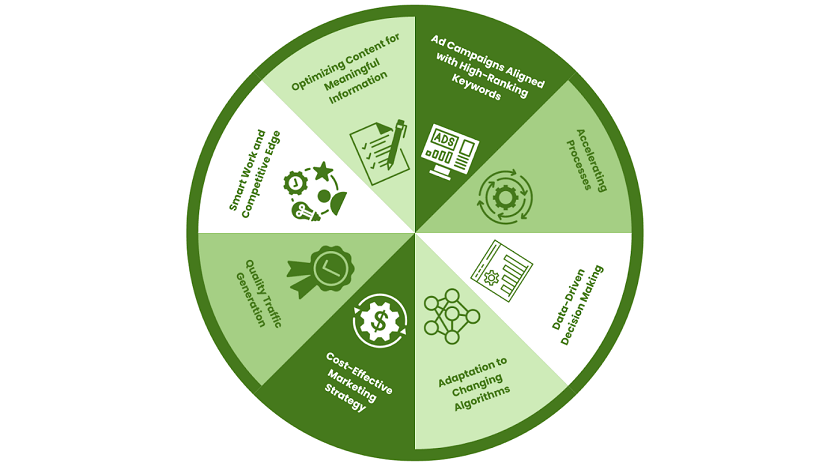
Smart Work and Competitive Edge
Optimising Content for Meaningful Information
Ad Campaigns Aligned with High-Ranking Keywords
Accelerating Processes
Quality Traffic Generation
Cost-Effective Marketing Strategy
Adaptation to Changing Algorithms
Data-Driven Decision Making
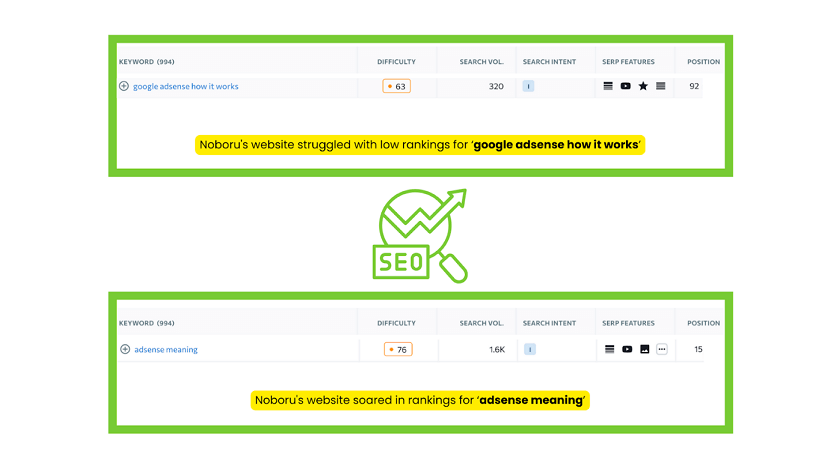
SEO plays a crucial role in digital marketing by optimizing content for specific keywords. In this case, the lower ranking for "Google AdSense how it works" suggests potential challenges in competitiveness or content optimization. Conversely, a higher ranking for "AdSense meaning" indicates effective SEO alignment with search intent, making the website more visible to users seeking a general understanding of AdSense. Strategic keyword targeting and content optimization, key aspects of SEO, contribute to improved visibility and performance in digital marketing efforts.
Complete SEO Checklist for 2024
The absence of a well-structured SEO checklist can have detrimental consequences for your website's ranking. Navigating the digital landscape without this essential guide leaves your online presence vulnerable to overlooked details and missed opportunities. In this section, we'll delve into the repercussions of not having an SEO checklist and how it impacts your ability to monitor and improve your Google ranking.
Ranking Goes Untraced
Inability to Chase Rankings
Income Stagnation Amid Decreased Growth
Data-Driven Insights
1. 90.63% of Web Pages Get No Organic Traffic from Google :
2. 75% of Users Never Scroll Past the First Page of Search Results :
3. 70-80% of Users Ignore Paid Ads and Focus on Organic Results:
4. Local Searches Lead 50% of Mobile Users to Visit Stores within One Day:
In conclusion, the data from Webfx.com highlights the vital role SEO plays in business success. Without a solid SEO strategy, businesses risk getting lost in digital noise, missing out on organic traffic, trust, and growth opportunities. Embracing SEO is not a choice but a necessity for thriving online. Stay ahead with the "Complete SEO Checklist for 2024" and consider expert guidance from Noboru at hello[at]noboruworld.com for a tailored SEO checklist. Take the leap towards digital success with Noboru's experience and insights.
If you found this article helpful, we encourage you to share it on your social media platforms—because sharing is caring! For more information about article submissions on our website, feel free to reach out to us via email.
Send an emailWritten by RGB Web Tech
Latest Technology Trends
Latest technology trends shaping the future, including AI advancements, blockchain innovation, 5G connectivity, IoT integration, and sustainable tech solutions. Explore breakthroughs in quantum computing, cybersecurity, augmented reality, and edge computing. Stay ahead with insights into transformative technologies driving innovation across industries and revolutionizing how we live, work, and connect.
Image SEO : How to Optimize Images for the Web
Last updated on January 19, 2025 by RGB Web Tech

Image SEO, or Search Engine Optimization, is the practice of optimizing images to enhance a website's visibility and ranking in search engine results pages (SERPs). It involves various strategies aimed at making images more accessible and understandable to search engine algorithms. This includes optimizing image filenames, alt text, captions, and descriptions with relevant keywords. Additionally, image size and format optimization, as well as proper use of structured data markup, contribute to better image SEO. Effective image SEO not only improves website visibility but also enhances user experience by providing visually appealing and relevant content in search results.
What is Image SEO?
Image SEO, or Image Search Engine Optimization, refers to the process of optimizing images on a website to improve their visibility and ranking in search engine results pages (SERPs). It involves various techniques and best practices aimed at making images more accessible, understandable, and relevant to search engine algorithms.
Image SEO Techniques
Image SEO encompasses various techniques to optimize images for search engines and enhance their visibility. Here are some effective techniques:
FAQs - Image SEO
Certainly! Here are some frequently asked questions (FAQs) about Image SEO:
1. What is Image SEO?
Answer : Image SEO, or Image Search Engine Optimization, refers to the process of optimizing images on a website to improve their visibility and ranking in search engine results pages (SERPs).
2. Why is Image SEO important?
Answer : Image SEO is important because it helps improve the visibility of images in search engine results, driving organic traffic to your website. It also enhances user experience by ensuring faster loading times and providing relevant image content.
3. What are some key elements of Image SEO?
Answer : Key elements of Image SEO include optimizing image file names, adding descriptive alt text, compressing images for faster loading times, choosing the right image format, and implementing structured data markup.
4. How do I optimize image file names for SEO?
Answer : Optimize image file names by using descriptive filenames that include relevant keywords related to the image content. Avoid generic filenames like "IMG_1234.jpg" and instead use descriptive names like "red-rose-bouquet.jpg."
5. What is alt text, and why is it important for Image SEO?
Answer : Alt text is a brief description of an image that is displayed when the image cannot be loaded or viewed. It is important for Image SEO because search engines use alt text to understand the context of images and improve accessibility for users with disabilities.
6. How can I improve the loading speed of images on my website?
Answer : You can improve the loading speed of images by compressing them without sacrificing quality, optimizing image size, choosing the right image format, and implementing responsive design techniques.
7. Should I use thumbnails on my website, and how can I optimize them for SEO?
Answer : Thumbnails can be useful for displaying images in a compact format, but they should be optimized for SEO. Use descriptive filenames and alt text for thumbnails, and ensure they are appropriately sized and compressed for faster loading times.
8. What role does structured data markup play in Image SEO?
Answer : Structured data markup provides search engines with additional information about the images on your website, such as the subject, location, or author. This helps search engines understand the image content better and may result in rich snippets displayed in search results.
Conclusion of Image SEO
In conclusion, Image SEO is a vital aspect of optimizing websites for search engines and enhancing user experience. By implementing techniques such as optimizing image file names, adding descriptive alt text, compressing images, and utilizing structured data markup, websites can improve the visibility and relevance of their images in search engine results. Image SEO not only drives organic traffic to websites but also ensures faster loading times and better accessibility for all users. By prioritizing image optimization alongside traditional SEO practices, website owners can create a more engaging and effective online presence, ultimately leading to increased visibility, traffic, and conversions.
If you found this article helpful, we encourage you to share it on your social media platforms—because sharing is caring! For more information about article submissions on our website, feel free to reach out to us via email.
Send an emailWritten by RGB Web Tech
Latest Technology Trends
Latest technology trends shaping the future, including AI advancements, blockchain innovation, 5G connectivity, IoT integration, and sustainable tech solutions. Explore breakthroughs in quantum computing, cybersecurity, augmented reality, and edge computing. Stay ahead with insights into transformative technologies driving innovation across industries and revolutionizing how we live, work, and connect.
Video for Search Engine Optimisation (SEO)
Last updated on January 19, 2025 by RGB Web Tech

Video SEO, or Search Engine Optimization, is the practice of optimizing video content to rank higher in search engine results pages (SERPs). With the proliferation of video content on platforms like YouTube, Vimeo, and social media, effective Video SEO has become crucial for businesses and content creators to increase visibility and drive organic traffic to their videos. It involves various strategies, including keyword research, optimizing video titles, descriptions, and tags, improving video quality and engagement metrics, as well as incorporating structured data markup. Successful Video SEO not only boosts search rankings but also enhances user experience, resulting in higher engagement and conversions.
What is Video SEO?
Video SEO, or Video Search Engine Optimization, refers to the process of optimizing video content to improve its visibility and ranking in search engine results pages (SERPs). It involves various techniques and strategies aimed at making videos more discoverable by search engines like Google, Bing, and YouTube.
Video SEO Techniques
Video SEO techniques are essential for maximizing the visibility and reach of your video content. Here are some effective techniques:
Frequently Asked Questions (FAQs) about Video SEO:
1. What is Video SEO?
Answer : Video SEO, or Video Search Engine Optimization, involves optimizing video content to improve its visibility and ranking in search engine results pages (SERPs).
2. Why is Video SEO important?
Answer : Video SEO helps increase the visibility of your video content, attract more viewers, and drive organic traffic to your website or channel. It can also enhance user engagement and conversions.
3. How do I optimize my videos for SEO?
Answer : To optimize your videos for SEO, focus on keyword research, optimizing metadata (titles, descriptions, tags), creating engaging thumbnails, providing transcriptions or closed captions, and promoting your videos across multiple channels.
4. Which platforms support Video SEO?
Answer : Video SEO techniques can be applied to various platforms, including YouTube, Vimeo, Facebook, Instagram, and your own website or blog.
5. What are the best practices for Video SEO?
Answer : Best practices for Video SEO include creating high-quality, relevant content, using descriptive titles and tags, optimizing video thumbnails, providing transcriptions, promoting your videos, and monitoring performance metrics.
6. How can I improve user engagement with my videos?
Answer : Encourage user engagement by asking viewers to like, comment, share, and subscribe to your channel. Respond to comments and engage with your audience to build a community around your videos.
7. Does video quality affect SEO?
Answer : While video quality itself may not directly impact SEO, high-quality videos tend to attract more viewers and engagement, which can indirectly improve SEO performance.
8. Is it important to include keywords in video titles and descriptions?
Answer : Yes, including relevant keywords in your video titles, descriptions, and tags helps search engines understand the content of your videos and improves their chances of ranking for relevant search queries.
9. How long should my videos be for optimal SEO?
Answer : The ideal video length depends on your content and audience preferences. However, aim to keep your videos informative, engaging, and concise, focusing on delivering value rather than meeting a specific length requirement.
10. How can I track the performance of my videos?
Answer : Use analytics tools such as YouTube Analytics, Google Analytics, or platform-specific insights to monitor metrics like views, watch time, audience retention, and conversion rates. Use this data to refine your Video SEO strategy over time.
Conclusion of Video SEO
In conclusion, Video SEO plays a pivotal role in enhancing the visibility and reach of video content across various platforms. By implementing strategic optimization techniques such as keyword research, metadata optimization, and user engagement tactics, businesses and content creators can improve their video rankings in search engine results pages (SERPs) and attract more organic traffic. Moreover, fostering user engagement and providing high-quality, relevant content are essential for sustaining audience interest and driving conversions. Continuously monitoring performance metrics and adapting strategies accordingly ensures the effectiveness of Video SEO efforts, ultimately leading to increased visibility, engagement, and success in the digital landscape.
If you found this article helpful, we encourage you to share it on your social media platforms—because sharing is caring! For more information about article submissions on our website, feel free to reach out to us via email.
Send an emailWritten by RGB Web Tech
Latest Technology Trends
Latest technology trends shaping the future, including AI advancements, blockchain innovation, 5G connectivity, IoT integration, and sustainable tech solutions. Explore breakthroughs in quantum computing, cybersecurity, augmented reality, and edge computing. Stay ahead with insights into transformative technologies driving innovation across industries and revolutionizing how we live, work, and connect.
An Integrated SEO and SEM Approach to B2B Lead Generation
Last updated on January 19, 2025 by RGB Web Tech

When it comes to B2B marketing, leveraging the power of search engine optimisation (SEO) and search engine marketing (SEM, also known as PPC or pay-per-click) is a 'winner takes it all' game and it could be the differentiating factor in lead generation and lead conversion. For niche B2B companies, which normally target specific segments of industries and professional audiences, integrated SEO and SEM are a direct way to connect with prospective customers who have high buyer intent. In this article, we will uncover the relationship between SEO and SEM and why their function of driving lower funnel traffic and enhancing conversion rates in B2B niches cannot be underestimated.
In today's digital era, B2B lead generation requires a mix of various organic and paid search strategies. SEO and SEM are the two sacred pillars of the niche eBusiness that, when combined properly, can power impressive growth. In identifying the specific nature of these styles and how they work together companies can create an online presence that will turn leads into buyers.
The Value of SEO & SEM for Niche B2B Businesses
The niche B2B cases without a doubt value the power of SEO and SEM. These tactics allow companies to focus on keywords and search phrases related to their area, which makes them available to a highly qualified consumer base that is actively looking for particular solutions or services. By participating simultaneously in the organic and paid search channels, niche B2B businesses can lift brand awareness and speed up people's way to the site as well as conversions which are a highly targeted goal. It is not by chance but by the precision of an SEO agency that the long-term visibility and credibility within the search engine results are achieved, positioning the entities as the authoritative ones in their niche. While SEM results in immediate visibility through targeted advertising, allowing every business to capture their target audience's interest in various buying journey stages, on the other hand, it also encourages prospects to develop their buying decision in the most informed way. This joint framework is aimed at providing an all-comprehensive strategy that renders a high impact towards the digital marketing endeavour of the niche B2B sectors while supporting their companies for long-term growth and market advantage.
Leveraging Lower Funnel Traffic
B2B targeting lower funnel traffic with SEO and SEM as the latter group consisting of users who are at the end of the decision-making processes is also among the advantages of SEO and SEM for niche B2B businesses. By contrast to top-of-funnel advertising which seeks the audience’s articulation, bottom-of-funnel traffic consists of prospective shoppers with high buyer intent. Precision targeting can be achieved when B2B companies optimise their campaign for results they want to attract with commercial keywords, and that leads to more qualified contacts, with the possibility to convert them into profit.
Conversion Rate Dynamics in Commercial Keywords
SEO and SEM campaigns bring out more success for retail keywords where the conversion rate from these channels is much bigger compared to other marketing channels. Niche industries with strategic targeting have high imperium level conversion rates and 7% -10% per cent, that in most cases exceed social media conversions and generic advertising. That shows the results of SEO and SEM are the key factors that can drive the business successfully in tangible actions.
Integrating SEO & SEM Strategies
The biggest problem is how to employ SEO and SEM correctly and in a synchronised way. This will ensure that businesses of niche B2B can make use of different avenues available to them. For example, Google Ads management services allow you to target keywords precisely based on postcodes/suburbs, age range, income range etc (options that would not otherwise be available to you through SEO/organic campaigns). With a unified strategy, you will be able to cover a broad array of keywords, will get the most visibility due to top positions of search engine results pages (SERPs), and will be able to allocate higher control over aiming and budgeting. Focusing on the synergy of these two search engines, B2B organisations can create a holistic online lead generation architecture that consistently gets clients and drives up their business growth.
Comprehensive Keyword Research
Discretion of an integrated SEO and SEM strategy is long-based research beating keywords. Conducting proper keyword research by targeting some of the most relevant—in terms of search volumes and buyer intent—that relate to a certain B2B sector is key to the campaign's success. Picking the best tools to maximise results should not be a problem. Google Keyword Planner, SEMrush, and Ahrefs can offer great quantity and quality insights: search volumes, competition levels, and keyword alterations. It can finally give marketers the power to optimise their business content and ad campaigns for superior results.
Implementing an Effective SEO & SEM Campaign
Developing a winning SEO and SEM strategy entails paying attention to detail and applying a strategic plan. For SEO, it is necessary to focus on strengthening website structure, content quality and backlink profile as a means of getting into the top positions in search engines results list. First of all, we should keep in mind that successful SEM campaigns imply careful keyword selection, powerful text ads, and close observation of performance. Through this siting support, and by refining the tactics according to data-driven insights, niche B2B businesses would be able to achieve sustainable lead generation outcomes.
Conclusion
At the end of the day, an integrated approach to SEO and SEM gives niche B2B businesses a strong weapon to drive up lead generation and revenue. Subsequently, businesses can utilise lower funnel traffic and search using commercial keywords having high conversion prospects to be pioneers in the industry and win a larger share of their respective markets. The development and evolution of digital marketing are tied together through the process of maintaining an integrated SEO and SEM strategy; to keep up and to achieve long-term success in the dynamic world of B2B marketing.
Through employing best practices, comprehensive keyword research and running fine-tuned campaigns, a small B2B company can grab hold of SEO and SEM and use them to lead generation and nurture them into loyal customers. Realise the power of combining organic and paid search strategies, and be the winner in online marketing of your B2B niche. Make the digital marketing strategy unique and compliant with your business.
If you found this article helpful, we encourage you to share it on your social media platforms—because sharing is caring! For more information about article submissions on our website, feel free to reach out to us via email.
Send an emailWritten by RGB Web Tech
Latest Technology Trends
Latest technology trends shaping the future, including AI advancements, blockchain innovation, 5G connectivity, IoT integration, and sustainable tech solutions. Explore breakthroughs in quantum computing, cybersecurity, augmented reality, and edge computing. Stay ahead with insights into transformative technologies driving innovation across industries and revolutionizing how we live, work, and connect.
How White Hat Link Building Avoids Google Penalties?
Last updated on January 19, 2025 by RGB Web Tech

Are you tired of constantly worrying if your link-building efforts might land you in trouble with Google? Well, you’re not alone. Many of us have been there, questioning whether our strategies are truly "white hat" or if we're unwittingly venturing into risky territory.
What if I told you there's a way to build links that stay within Google's guidelines and drive sustainable, long-term growth for your website? Interested? Let’s dive into the world of white hat link building and discover how it can be your secret weapon for SEO success!
What Is White Hat Link Building?
White hat link building refers to acquiring backlinks through ethical and legitimate means that comply with search engine guidelines. These techniques focus on creating high-quality content and building genuine relationships with other websites and content creators.
White Hat Link Building Strategies
1. Creating High-Quality Content
One of the most effective white hat link-building strategies is to create exceptional content that naturally attracts links. This includes:
By producing valuable content, you increase the chances of other websites linking to you as a credible source of information.
2. Guest Blogging
Guest blogging involves writing articles for other reputable websites in your industry. This strategy allows you to showcase your expertise, reach a wider audience, and earn high-quality backlinks. When done right, guest blogging can be a powerful white hat technique.
3. Broken Link Building
Broken link building involves finding broken links on other websites and offering your content as a replacement. This strategy benefits both parties: you gain a valuable backlink, and the other site fixes a broken link, improving its user experience.
4. Digital PR and Earned Media
Earning media coverage through digital PR efforts can result in high-quality, natural backlinks from authoritative news sites and industry publications. This includes:
5. Resource Link Building
Creating comprehensive resource pages or tools that other websites in your industry find valuable can attract natural backlinks. These resources include:
How White Hat Techniques Avoid Google Penalties
The Importance of Ethical Link Building
Ethical link building is crucial for long-term SEO success. It not only helps improve your website's authority and rankings but also ensures that your site remains in good standing with search engines like Google. By avoiding manipulative tactics, you can build a strong and sustainable online presence.
Google's Stance on Link Building
Google has clear guidelines on link-building practices. The search engine giant emphasizes the importance of natural, relevant, and high-quality links. Any attempts to manipulate search rankings through artificial link schemes are strictly prohibited.
Websites that engage in black hat link building techniques risk facing severe penalties from Google. These penalties can range from a drop in search rankings to complete removal from Google's index, effectively making the site invisible to searchers.
Monitoring and Maintaining Your Link Profile
1. Regular Link Audits
Conducting regular link audits is essential for maintaining a healthy link profile. This involves:
2. Using SEO Tools
Utilizing SEO tools can help you monitor your link profile and identify potential issues before they become problems. Popular tools include:
3. Staying Informed About Algorithm Updates
Keeping up-to-date with Google’s algorithm changes and SEO best practices is crucial for maintaining an effective white hat link building strategy. This involves:
Comparing White Hat vs. Black Hat Link Building
| Aspect | Black Hat Techniques | White Hat Techniques |
|---|---|---|
| Results | Quick but short-lived | Sustainable, long-term growth |
| Risk | High risk of penalties | Lower risk |
| Rewards | Immediate but unstable | Stable over time |
| Relationships | Can damage and burn bridges | Builds genuine industry relationships |
| Opportunities | Limited due to potential reputation damage | Fosters collaboration and mutual growth |
| Adherence to Guidelines | Violates search engine guidelines | Complies with search engine guidelines |
| Long-term Viability | Poor, due to the risk of penalties | Excellent, supports sustainable growth |
Overcoming Common White Hat Link-Building Challenges
The Future of White Hat Link Building
The future of white hat link building is marked by continuous evolution and adaptation to changing search engine algorithms. Emerging trends in this field include an increased focus on user experience signals, greater emphasis on brand mentions and implied links, and the growing importance of video content for link acquisition.
As search algorithms become more sophisticated, white-hat link-building strategies must adapt accordingly. Focus on topical authority rather than just domain authority. Prioritize quality referrers over link count and tie link-building to broader digital marketing.
Conclusion
So, what do you think? Are you ready to embrace the power of white hat link-building? I know it might seem daunting at first, especially if you’re used to quicker, riskier methods. But trust me, the long-term benefits are worth it.
Remember, it's not just about avoiding penalties; it's about building a robust, reputable online presence that stands the test of time. Why not give it a shot? Start small, focus on creating valuable content, and watch as those high-quality links start rolling in naturally.
Who knows? You might just find that playing by the rules is not only safer but also more rewarding in the long run. So, are you up for the challenge?
Key Takeaways
Frequently Asked Questions
1. How long does it take to see results from white hat link building?
Answer : Results from white hat link building typically take 3 to 6 months to become noticeable. However, the exact timeline can vary depending on factors like your industry, competition, and the consistency of your efforts. Remember, white hat techniques prioritize long-term, sustainable growth over quick wins.
2. What types of content are best for attracting natural backlinks?
Answer : Content that tends to attract natural backlinks includes:
3. How often should I conduct a link audit?
Answer : It's recommended to conduct a thorough link audit at least once every 6 months. However, for larger websites or those in competitive industries, quarterly audits may be more appropriate. Regular monitoring using SEO tools can help you spot issues between full audits.
If you found this article helpful, we encourage you to share it on your social media platforms—because sharing is caring! For more information about article submissions on our website, feel free to reach out to us via email.
Send an emailWritten by RGB Web Tech
Latest Technology Trends
Latest technology trends shaping the future, including AI advancements, blockchain innovation, 5G connectivity, IoT integration, and sustainable tech solutions. Explore breakthroughs in quantum computing, cybersecurity, augmented reality, and edge computing. Stay ahead with insights into transformative technologies driving innovation across industries and revolutionizing how we live, work, and connect.
SEO Companies for Attorneys: How to Tell You’ve Found the Right One
Last updated on January 19, 2025 by RGB Web Tech

As an attorney, you can join a law firm or start your own. Both have their benefits. Maybe you want to have autonomy. If so, then starting your own firm makes sense. However, signing on with an established one might also appeal.
Either way, you need clients if you’re going to stay solvent. That means marketing your legal services.
You can do that in many ways, but you should probably at least consider online marketing and SEO. You can hire a permanent employee who can handle your various SEO task, or perhaps you might engage a freelancer.
If you have a larger law firm, you might need to contact an SEO agency instead. You’ll often find that the best SEO companies for lawyers share some particular qualities.
In this article, we’ll talk about the qualities you’ll want to see from an SEO agency or company that can help your law firm attract more clients and improve its visibility.
What Does SEO Mean?
First, let’s describe the term “SEO” so you know what we mean. SEO means search engine optimization. You probably already know that when someone mentions search engines, they mean algorithms like Google or Bing.
You can use search engines free of charge. Google dominates this market. Some people prefer Bing for B2B interactions, but most people Google something if they need information.
Search engine optimization means that you’re improving your website so that more people visit it and interact with it. However, you also have some online SEO elements that don’t directly involve your website.
Though some business owners don’t know the first thing about SEO, that doesn’t mean they don’t need it. As a company owner or CEO, you should at least know about some fundamental SEO basics.
Why Do Lawyers Need SEO?
Lawyers definitely need SEO for their websites. The right SEO elements will drive more traffic your way. If you’re new to the industry, then that’s going to potentially help you a great deal.
Even if you operate a well-established law firm, though, you still need SEO both on your site and elsewhere online. Maybe you can’t attract as many clients as you’d like. Perhaps you don’t have the best industry reputation, and you must take steps to improve it.
That’s when you will want to hire someone who can help with your SEO. Again, it’s possible you might hire a fulltime SEO specialist if you have enough money in your payroll at the moment to do that. If you don’t feel like that’s the best option, you will want to locate and hire an SEO freelancer or agency.
Now, let’s talk about how you can feel confident that you have found the right SEO specialist or company to help you.
You Want an SEO Company That Can Operate Within Your Budget
SEO companies cost money, like virtually any other service. You must find one that can operate within your budget restraints.
In that respect, hiring an SEO company equates to hiring a plumber, or a roofer, or an electrician. You probably only have a certain amount of money to spend. You can’t go over that budget, so you need to locate a company that finds this amount acceptable.
You can shop around to see what prices, services, and packages some of the candidates have. Maybe you know someone who already has an SEO company working for them. If they give you a recommendation, then you can research this company to see if their pricing plans match your budget.
You Want a Company That Guarantees a Certain Amount of Engagement
SEO often means driving new customers to your website. You need that engagement. More site visitors typically mean more conversions. Conversions, in marketing parlance, mean individuals who visit your website and then purchase your products or utilize your services.
It’s hard to find an SEO company that can promise you a certain number of conversions. That’s unrealistic, since you never know whether someone might convert when they visit your site.
However, you should still find an SEO agency that can guarantee a particular number of new site visitors. That number, unique site visitors, often equates to new customers. The more site visitors you have, the more likely you will get at least a few conversions. It becomes a numbers game.
If an SEO agency guarantees a number of new site visitors per day, week, or month that sounds good to you, then you can hire them with a lot more confidence.
You Want an SEO Company That Keeps Up with the Latest Trends
You should also understand that SEO changes as time passes.. The industry-recognized best practices from ten years ago won’t resemble the ones you’ll see today.
SEO agencies should know that, and they should stay on top of industry trends. For instance, an SEO agency should know to modify your law firm’s Google listing if it has some incorrect information. They should know to add some professional-quality photos and videos to your website if you only have generic stock images at the moment.
An SEO agency might improve a law website’s copy to make it more engaging. They might add industry and location-specific keywords to that copy. They may add a company blog or social media buttons on the landing page if they feel that will help with engagement numbers.
Lawyers who try to improve their websites and off-site SEO without an individual or agency that has relevant, timely advice for them will often struggle to do that. SEO is such a complex, multifaceted industry. It’s constantly changing, and sometimes individuals or companies that make it their specialty must change strategies if what they’ve tried so far doesn’t work.
Law firms need to keep that in mind. If they ignore SEO, then they will probably fall behind. In such a competitive industry, that can spell disaster. By partnering with the right SEO company, a law firm can completely reverse its fortunes.
If you found this article helpful, we encourage you to share it on your social media platforms—because sharing is caring! For more information about article submissions on our website, feel free to reach out to us via email.
Send an emailWritten by RGB Web Tech
Latest Technology Trends
Latest technology trends shaping the future, including AI advancements, blockchain innovation, 5G connectivity, IoT integration, and sustainable tech solutions. Explore breakthroughs in quantum computing, cybersecurity, augmented reality, and edge computing. Stay ahead with insights into transformative technologies driving innovation across industries and revolutionizing how we live, work, and connect.
How Tailored SEO Solutions Can Revolutionize HVAC Industry Growth
Last updated on January 19, 2025 by RGB Web Tech

The HVAC industry operates in a dynamic space where customer needs often arise unexpectedly, requiring swift solutions. In such a competitive market, simply relying on word-of-mouth referrals or traditional advertising methods can leave your business lagging behind. With the majority of consumers turning to search engines to find heating and cooling services, having a strong online presence is no longer optional—it’s essential.
Tailored SEO solutions provide HVAC companies with the tools to enhance visibility, attract more leads, and build credibility. By adopting a customized approach to SEO, HVAC businesses can unlock new opportunities and redefine their path to success.
Why HVAC Businesses Need SEO to Stay Competitive
The HVAC industry thrives on being accessible to customers who need immediate services. Whether someone’s air conditioner breaks down on a hot summer day or their heating system fails in the dead of winter, they’re likely to search online for the fastest solution. SEO (Search Engine Optimization) ensures that your business shows up when and where customers are looking.
Here’s why SEO is vital for HVAC businesses:
Crafting an SEO Strategy Unique to HVAC Services
Every HVAC business has its own set of challenges, goals, and customer demographics. A generic SEO plan won’t cut it. Instead, a tailored approach will ensure that your strategy aligns with your specific needs and market.
1. Focus on Seasonal Trends
HVAC services are often seasonal, with demand peaking during extreme weather. Tailored SEO can capitalize on these trends by optimizing for seasonal keywords like:
Publishing seasonal blog posts, running time-sensitive campaigns, and adjusting content based on weather patterns can help your business to stay relevant year-round.
2. Highlight Energy Efficiency Solutions
Modern customers are increasingly eco-conscious. Tailored SEO can position your business as a leader in energy-efficient HVAC solutions by targeting keywords like:
Educational content that explains how your services contribute to sustainability can attract environmentally conscious clients while establishing your authority.
3. Optimize for Voice Search
With the rise of smart speakers and voice assistants, customers are asking devices for help with phrases like, “Who can fix my heater nearby?” Tailored SEO should include long-tail, conversational keywords that align with voice search patterns to capture this growing segment of users.
4. Use Data to Drive Decisions
Tailored SEO isn’t just about implementing strategies—it’s about refining them. By analyzing customer behavior, you can uncover insights like:
Outsourcing SEO: A Smart Move for HVAC Companies
While some business owners attempt to handle SEO in-house, it often requires significant time, expertise, and resources. Outsourcing SEO strategies to a trusted partner allows HVAC companies to focus on delivering top-notch services while experts handle the complexities of optimization.
Outsourcing provides numerous benefits:
For example, partnering with a specialized service like www.clickintelligence.com ensures that your business benefits from tailored strategies designed to increase visibility and drive results.
Expanding Reach Beyond Local SEO
While local SEO is essential for targeting nearby customers, national strategies can help HVAC companies to expand their footprint. For businesses that offer specialized services or operate in multiple regions, focusing on broader keywords and content can unlock new growth opportunities. Here’s how:
Conclusion
Tailored SEO solutions offer a transformative way for HVAC businesses to grow, connecting with the right customers at the right time. From optimizing for voice search to leveraging seasonal trends and outsourcing to professionals, these strategies can help you to build a competitive advantage in a crowded market.
With the right approach, SEO doesn’t just boost visibility—it redefines success, creating a steady stream of loyal customers and setting the foundation for long-term growth. If you’re ready to take your HVAC business to the next level, consider investing in personalized SEO strategies that deliver measurable results.
If you found this article helpful, we encourage you to share it on your social media platforms—because sharing is caring! For more information about article submissions on our website, feel free to reach out to us via email.
Send an emailWritten by RGB Web Tech
Latest Technology Trends
Latest technology trends shaping the future, including AI advancements, blockchain innovation, 5G connectivity, IoT integration, and sustainable tech solutions. Explore breakthroughs in quantum computing, cybersecurity, augmented reality, and edge computing. Stay ahead with insights into transformative technologies driving innovation across industries and revolutionizing how we live, work, and connect.
The Top Free and Paid SEO Tools in 2025: An Insight
Last updated on January 19, 2025 by RGB Web Tech
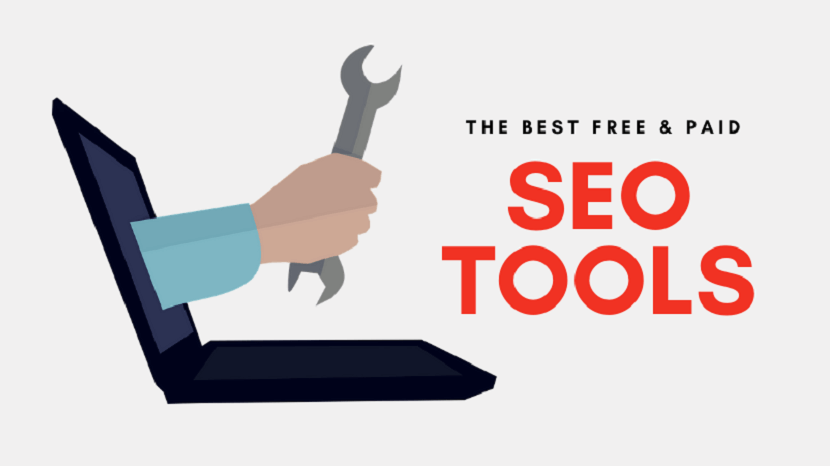
Businesses of all types need SEO to establish and strengthen their presence online. They hire SEO professionals to develop suitable SEO strategies. Now, SEO analysts need to choose from various available SEO tools, including paid and free ones. Choosing the right SEO analyzer free or paid tool, can seem difficult. There are hundreds of such tools, and you need to pick those that match your SEO needs.
The top paid and free SEO tools to consider in 2025
Listed here are some valuable tools SEO professionals can pick from for free and paid categories:
Final words
SEO professionals use various toolsets for their work. When you are unsure about which tool to use, seek expert guidance. Check out seosets.com to receive advice and access to custom SEO toolsets for your specific needs.
If you found this article helpful, we encourage you to share it on your social media platforms—because sharing is caring! For more information about article submissions on our website, feel free to reach out to us via email.
Send an emailWritten by RGB Web Tech
Latest Technology Trends
Latest technology trends shaping the future, including AI advancements, blockchain innovation, 5G connectivity, IoT integration, and sustainable tech solutions. Explore breakthroughs in quantum computing, cybersecurity, augmented reality, and edge computing. Stay ahead with insights into transformative technologies driving innovation across industries and revolutionizing how we live, work, and connect.
9 Video Trends for Your Brand Marketing 2025
Last updated on January 19, 2025 by RGB Web Tech

In the space of a few years, video marketing has transformed from a “nice-to-have” into a “must-have” for every modern brand. In 2025, it’s clear that video is not just a format. It’s a full-fledged brand marketing strategy that is driving engagement, conversions, and long-term customer loyalty.
There are numerous startups that want to break through the noise. And there are established businesses that want to stay relevant. All of them need to stay ahead of the latest marketing trends.
We’ll explore major video trends that are redefining video content marketing in 2025. We’ll also delve into how your brand can capitalize on them.
1. AI-powered video creation is the new norm
Not so long ago, many weren’t sure how to take advantage of artificial intelligence. Now we can see one of the most revolutionary shifts. It’s the widespread use of video making software that is powered by AI. Such tools can now assist with everything from script generation and scene selection to auto-editing and personalization for different demographics.
What does it mean for marketers? It means that they can create more content in less time. Most importantly, they don’t need to sacrifice quality. The technology can analyze audience behavior and suggest to content creators what the optimal length, tone, and style of videos should be. Isn’t that amazing?
If you haven’t explored such tools, it’s time to taste the waters. It’s also interesting that these platforms are becoming more user-friendly and affordable. Reasonable costs of subscriptions make it more accessible for brands of all sizes to produce high-quality content.
2. Cross-platform video repurposing and format conversion
There are numerous platforms where brands can market their videos. However, not all of them require one and only format. They differ. In such a case, having a reliable video converter is more important than ever. You may want to turn your long video created for YouTube into short clips for Reels. And there might be a need to convert file types for compatibility. Such a tool will help you make sure your content reaches more people. It’ll also save you much more time than if you had to produce new content for another platform.
Besides, it might depend on the camera you use. If you work with older or high-definition camera formats, you might need to learn how to convert AVCHD to MP4 to make your footage compatible with online platforms and editing software. In a number of cases, MP4 is a way to go for seamless sharing and publishing.

3. Vertical and short-form video continue to surge
Thanks to TikTok, Instagram, and YouTube, short-form and vertical videos are no longer just trends. They’re staples. They will continue to dominate social media trends for more and more years to come. All because users crave quick and digestible content that entertains or informs within seconds.
If your brand can’t produce high-impact storytelling in under a minute, you’ll be the one to stand out. When searching for a video editor, you should make sure it supports vertical editing, transitions, and mobile-friendly text overlays.
4. AI in your social media strategy
Additionally, marketers are turning to artificial intelligence in their social media strategy. In this way, they can better manage distribution and engagement. Here’s what AI tools offer:
Besides, such tools can help you repurpose content effectively. Meaning that your videos work harder across multiple channels.
5. Interactive videos for higher engagement
Users want something more than passive content. They also want to participate. How can you do that? You can generate clickable hotspots, live Q&As, or viewer-driven storylines.
Interactive videos give you a deeper emotional connection with your audiences. Ultimately, they boost engagement rates. These formats are especially useful for eCommerce, education, and service-based industries.
6. Smart optimization
You can imagine that the internet is overflowing with content. Are your videos easy to discover? Video SEO is no longer just about including keywords in titles. It now includes optimizing transcripts, thumbnails, video schema markup, and even voice search compatibility.
You need to make sure that your clips are indexed properly by search engines and platforms like YouTube, TikTok, and Instagram. You should also provide captions, metadata, and engaging descriptions that can dramatically improve visibility.

7. Behind-the-scenes content builds trust
Users want brands to be transparent and relatable. That’s why behind-the-scenes and day-in-the-life videos have become a massive part of social media trends in 2025. Such clips can humanize your brand. You can show the people behind the products or services, a team brainstorming session, or even the bloopers. In this way, you’ll have a genuine connection with your followers.
8. Data-driven personalization
The future of brand marketing strategy lies in personalization. Video is no exception. Since brands can access customer data and AI analytics, they can now deliver highly personalized video experiences.
Just imagine that your customers open an email from your brand and see their names, interests, or previous purchases that are embedded in the video. That would certainly increase click-through rates. Besides, it’ll help your brand nurture leads and retain clients.
9. Sustainability and purpose-led video content
With everything that is going on in the world, today’s customers care deeply about what your brands stand for. They want to support brands that align with their values. It’s especially relevant when it comes to sustainability and social impact.
You can use video platforms to do the following:
These emotional narratives not only build trust but also drive long-term loyalty.
Key takeaways
Today, successful brand marketing depends on adaptability and forward thinking. Video continues to be of paramount importance to brands, though trends change over time. In 2025, you should take advantage of AI-powered video creation, repurpose content with format conversion, produce vertical and short-form clips, and much more. By taking into consideration these video trends, established brands can not only keep up with their competitors but also lead the race. Startups, in turn, should overthink it. They choose one or two trends and experiment with them. Over time, they can measure results and refine their approach.
If you found this article helpful, we encourage you to share it on your social media platforms—because sharing is caring! For more information about article submissions on our website, feel free to reach out to us via email.
Send an emailWritten by RGB Web Tech
Latest Technology Trends
Latest technology trends shaping the future, including AI advancements, blockchain innovation, 5G connectivity, IoT integration, and sustainable tech solutions. Explore breakthroughs in quantum computing, cybersecurity, augmented reality, and edge computing. Stay ahead with insights into transformative technologies driving innovation across industries and revolutionizing how we live, work, and connect.
The Shift Toward Quality: Why Ethical Link Building Wins
Last updated on January 19, 2025 by RGB Web Tech
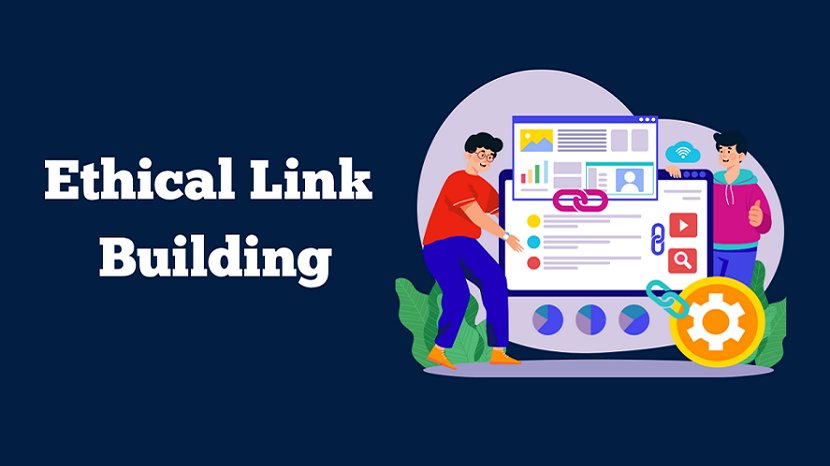
In the ever-changing world of SEO, link building has always played a critical role. Yet how we approach link building has undergone a major transformation. Years ago, success often meant gathering as many backlinks as possible, regardless of the source. Today, quality and ethical practices matter more than sheer numbers—and businesses that fail to adapt risk falling behind. Understanding why ethical link building wins is essential for anyone who wants to build lasting online authority, increase search rankings, and protect their brand's reputation.
From Quantity to Quality
Not long ago, SEO strategies often relied on mass-producing backlinks through tactics like directory submissions, comment spam, and private blog networks. While these methods worked temporarily, search engines like Google caught on. Updates like Penguin and subsequent algorithm refinements penalized websites involved in manipulative link practices.
Now, the focus is clear: a smaller number of high-quality, relevant backlinks is worth far more than hundreds of low-value ones. Search engines aim to mirror human judgment—rewarding sites that are genuinely trusted and referenced by reputable sources.
What Ethical Link Building Looks Like
Ethical link building, often referred to as "white-hat" link building, revolves around earning links naturally rather than manipulating them. Some key characteristics include:
Examples of ethical approaches include guest posting on authoritative websites, building partnerships with industry peers, creating shareable content, and earning media mentions.
Why Ethical Link Building Is Winning
Several factors are pushing brands toward quality-first strategies:
1. Search Engine Sophistication
Google's AI and machine learning advancements mean manipulative tactics are more likely to be detected and punished. Search engines value natural link profiles that show genuine trust signals. Ethical link building not only avoids penalties but positions a website to benefit from future algorithm updates instead of being harmed by them.
2. Brand Trust and Reputation
When users encounter your brand on credible sites, trust grows naturally. Conversely, finding your link on a spammy or irrelevant website damages your brand's credibility. Ethical link building strengthens your reputation in the eyes of both search engines and human visitors.
3. Sustainable Results
Unethical strategies might deliver a short-term spike in traffic or rankings, but they often result in penalties that can take months—or even years—to recover from. Ethical link building builds a sustainable foundation that generates steady growth over time.
4. Better Engagement
High-quality backlinks typically drive better traffic. Visitors coming from authoritative, related sources are more likely to engage with your content, spend time on your site, and convert into customers or subscribers.
Choosing Partners Who Prioritize Quality
With link building more important—and complex—than ever, many businesses choose to partner with experts. When seeking professional help, working with agencies that prioritize ethical practices is essential. Companies like Click Intelligence specialize in providing high-quality, transparent link-building services that align with the latest SEO best practices, ensuring brands get the results they need without risking their reputations.
Rather than focusing solely on building links for the sake of metrics, ethical agencies look at the bigger picture: crafting strategies that support broader marketing goals, improve user experience, and build long-term online authority.
How to Start Building Links the Right Way
Transitioning to an ethical link building strategy requires a shift in mindset and tactics. Here are a few starting points:
The Future Belongs to Ethical Practices
As search engines continue refining how they evaluate links, ethical link building is not just a trend—it's the future. Businesses that invest in high-quality, relationship-based strategies will enjoy better rankings, greater brand loyalty, and a competitive advantage that grows over time. Shortcut tactics may still tempt some, but the long-term winners are those who choose the high road. In link building—as in business—integrity, quality, and trust always win.
If you found this article helpful, we encourage you to share it on your social media platforms—because sharing is caring! For more information about article submissions on our website, feel free to reach out to us via email.
Send an emailWritten by RGB Web Tech
Latest Technology Trends
Latest technology trends shaping the future, including AI advancements, blockchain innovation, 5G connectivity, IoT integration, and sustainable tech solutions. Explore breakthroughs in quantum computing, cybersecurity, augmented reality, and edge computing. Stay ahead with insights into transformative technologies driving innovation across industries and revolutionizing how we live, work, and connect.






